12 incredible day trips from Venice

May 15, 2023 • 16 min read
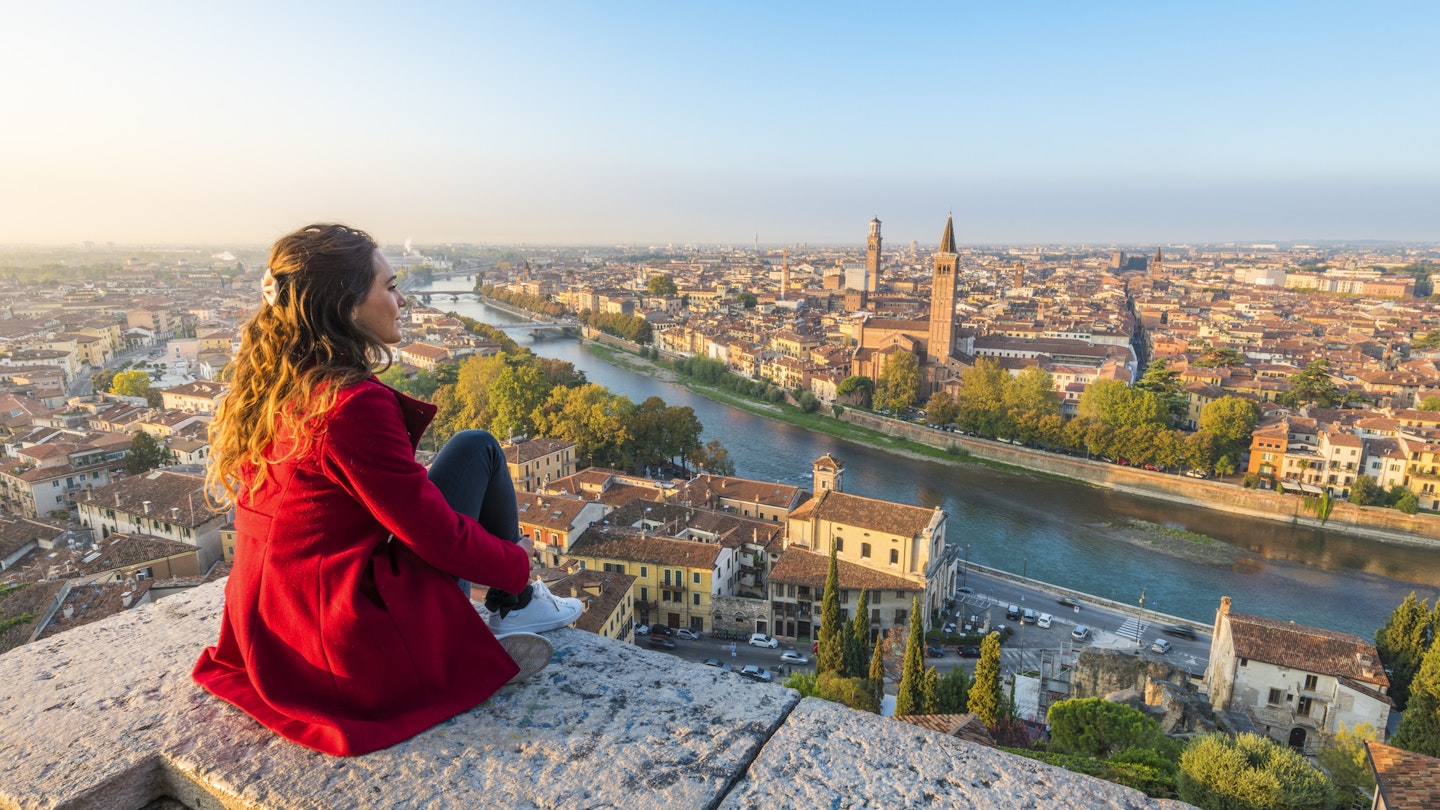
Escape the clamor of Venice on a day trip © Andrea Comi / Getty Images
Venice is one of the world’s greatest cities – a floating work of art, an open-air museum, and a place that everyone wants to visit at least once in their lifetime.
But what makes it great also makes it crowded...and then some. This fragile city is the poster child for overtourism and not only is it unpleasant to be part of that, but a whistle-stop tour of the sights makes you part of the problem. Our advice? Stay longer. A week is a decent amount of time to get a feel for the real Venice, beyond the crowds, and to take a couple of day trips beyond the canals.
The Italian railway system is excellent and in this part of the country, there are regular high-speed trains that can whisk you to another world in less than half an hour. Whether you’re looking for somewhere close by or fancy a day out in another region or even in the mountains, here are some of the best places to go.

1. See world-changing art in Padova
Travel time: 26 minutes by train
If it wasn’t so close to Venice, Padova (or Padua) would be one of northern Italy’s most feted cities. As it is, not many tourists make it to the place that changed art history – yet it’s one of the easiest day trips from Venice by train. Here, in the Cappella degli Scrovegni – the chapel of the Scrovegni banking family, which now sits in a little park, just 10 minutes’ walk from the train station – Giotto spent two years from 1303 to 1305, frescoing it from top to bottom. What he produced shattered medieval artistic conventions, introducing perspective and humanizing his figures, instead of keeping them stiff and sculptural. If his Nativity and Flight to Egypt scenes are familiar, that’s because they make regular appearances on Christmas cards around the globe.
Other sights include the colossal Basilica di Santa'Antonio – where the remains of St. Anthony of Padua are kept – and Prato della Valle , a huge square (said to be Europe’s largest) where grand statues of local luminaries stand guard over a moated island (join the locals and buy a pizza at nearby Pizzeria Orsucci, going strong since 1922, and eat it in the square). Don’t miss Piazza delle Erbe, where there’s still a busy food market, both inside and out. Looking for souvenirs? La Bottega del Pane is a pantry of exceptional local foods.
How to get to Padova from Venice: The easiest way to get there is by train. Fast trains can take as little as 26 minutes, and slower (cheaper) regional trains can take double that time.
2. Pay homage to Romeo and Juliet in Verona
Travel time: 72 minutes by train
In fair Verona , where we set our scene, little has changed since the 16th century, when Shakespeare set Romeo and Juliet here. The Piazza delle Erbe still hosts a lively market beneath its frescoed palazzos; the Adige river still loops around the elegant center; and the Giardino Giusti’s impeccably laid out garden hasn’t undergone anything more radical than a trim in 500 years. Juliet may not have existed in real life but her spirit lives on in Verona, where " Juliet’s House " – complete with balcony, of course – lures visitors, and a bronze statue is said to bring love to those who rub its breast (nobody could accuse Italy of being politically correct).
Verona may be known as a romantic getaway, but its real attraction is its Roman amphitheater, the Verona Arena , constructed from rosy-pink stone from a local quarry. Back in the day it put on gladiator battles; today, it’s rather more sophisticated, hosting an annual opera festival that’s one of Italy’s iconic summer events.
How to get to Verona from Venice: The train is the fastest and easiest way to get there. There are fast trains (the Milan-Venice route stops at Verona) or slower, cheaper regional ones. The journey ranges between 72 minutes and nearly two and a half hours.

3. See bombastic Renaissance architecture in Vicenza
Travel time: 44 minutes by train
Just as Padova is overshadowed by Venice, Vicenza is the often overlooked sibling of nearby Verona. It wasn’t like this 500 years ago, when the local dignitaries were building palazzos, each grander than the last along what was the Roman decumanus (main drag) and is now called Corso Palladio, after Renaissance starchitect and adopted vicentino , Andrea Palladio.
Today, you can still walk along the street, just as they did – the only thing that’s changed is that it’s now pedestrianized and the “most elegant street in Europe,” according to 19th-century historian Cesare Cantù. The jewel in Vicenza’s crown, though, is the Teatro Olimpico – a jaw-dropping theatre by Palladio, its interior crafted entirely from wood, stucco and plaster to aid the acoustics. Its trompe l’oeil stage set is the oldest in the world. If you have a car, it’s worth driving around the countryside, which is littered with sumptuous villas also designed by Palladio – La Rotonda is one of the finest.
How to get to Vicenza from Venice: Fast trains from Venice are quick (from 44 minutes) and easy, or it’s a 50-minute drive.
4. Hit the water at Lake Garda
Travel time: 93 minutes by train
Yes, you can do a day trip from Venice to Lake Garda – in fact, Italy’s largest lake makes for a fun day trip on public transport. Take the train to Desenzano , from where the (water) world is your oyster. Ferries zigzag across the lake – top stops include Lazise, a picture-perfect village on the crystal clear water; Gargnano, where you’ll find Limonaia La Malora, one of the only remaining lemon groves which Garda used to be famous for; and Limone sul Garda, where there’s a footpath cantilevered over the water on the outskirts of town.
At Sirmione, a peninsula thrusting out into the lake from the southern shore, there are the remains of a Roman villa, the Grotte di Catullo , while on a hill above Gardone Riviera is the Vittoriale , the former home of beloved Italian writer Gabriele D’Annunzio. The views from the rambling grounds (which include a warship dug into the hill) are spectacular. It’s a great family day trip but you may want to extend that into an overnight or two – it’s the perfect destination to combine with Venice.
How to get to Lake Garda from Venice: To do it all by public transport, you can take the train to Desenzano, from where ferries depart for towns and villages around the lake. Otherwise, you can drive from Venice, rent a car at Desenzano or, if you’re sticking to the east side of the lake, Verona.

5. See a Venice without tourists at Chioggia
Travel time: 75 minutes by ferry and bus
Perched at the southern end of the Venice lagoon, Chioggia is close to Venice on a map, but getting there by road is tortuous. That’s why you should visit during summer, when one of Europe’s most beautiful public transport routes is running: the 11, which takes the form of a bus all the way along the Lido island, then transfers to a ferry across to Pellestrina, continues the length of this toothpick-thin island separating the lagoon from the Adriatic, before dropping you off for a final ferry crossing to Chioggia.
Often described as a mini Venice, Chioggia certainly shares a lot with La Serenissima – a settlement clumped over islands, linked by bridges – but where Venice has an elegant feel of decay, Chioggia is a living, working town. Instead of tourist gondolas, you’ll see fishing boats lined along the canals, and there are even cars driving along the streets. Don’t miss the church of San Domenico, where a painting of St. Paul by Renaissance artist Carpaccio sits in the dark, alongside votive paintings by fishermen. It’s a brilliantly atmospheric yet cheap day trip from Venice.
How to get to Chioggia from Venice: Take a vaporetto from the city to the Lido, where the number 11 bus route whisks you eastwards, transfers to a ferry to Pellestrina, continues to the end of the island, and then drops you off at the ferry for Chioggia. Note that this route is only active in summer. Otherwise, it’s about an hour’s drive (but on frustratingly slow roads) south of Venice.
6. Soak up the cross-cultural history of Trieste
Travel time: One hour 50 minutes by car
It takes a while to get to Trieste – just over two hours by train, or a quicker (but stressful) drive – but it’s absolutely worth it. Reward an early start with a capo in b – a micro-sized cappuccino, served in an espresso glass. This used to be part of the Austro-Hungarian empire, so the coffee scene is more Vienna than Venice, here. Instead of downing an espresso at the bar, people sit down with a newspaper to savour their break. Caffe degli Specchi is the place to go – it sits on Piazza Unità d’Italia , one of Italy’s most spectacular squares, with frothy Habsburg-era buildings on three sides, and the sparkling Gulf of Trieste on the fourth.
Wander the old city – home to Roman ruins and the 15 th -century Castello di San Giusto , which has spectacular views over the water – then head northwest from the center to Miramare , a fairytale castle of gleaming white stone, cantilevered over the water. On the way back into town, take a dip; the sidewalk doubles as a sun terrace, where the Triestini lay their towels, sunbathe, and hop in the calm waters of the Gulf to cool off.
How to get to Trieste from Venice: It’s quickest to drive, at around 1 hour 50 minutes, but the road’s a busy autostrada with tolls. Better to take the slower but scenic train, which weaves around the lagoons at the very northern tip of the Adriatic Sea.
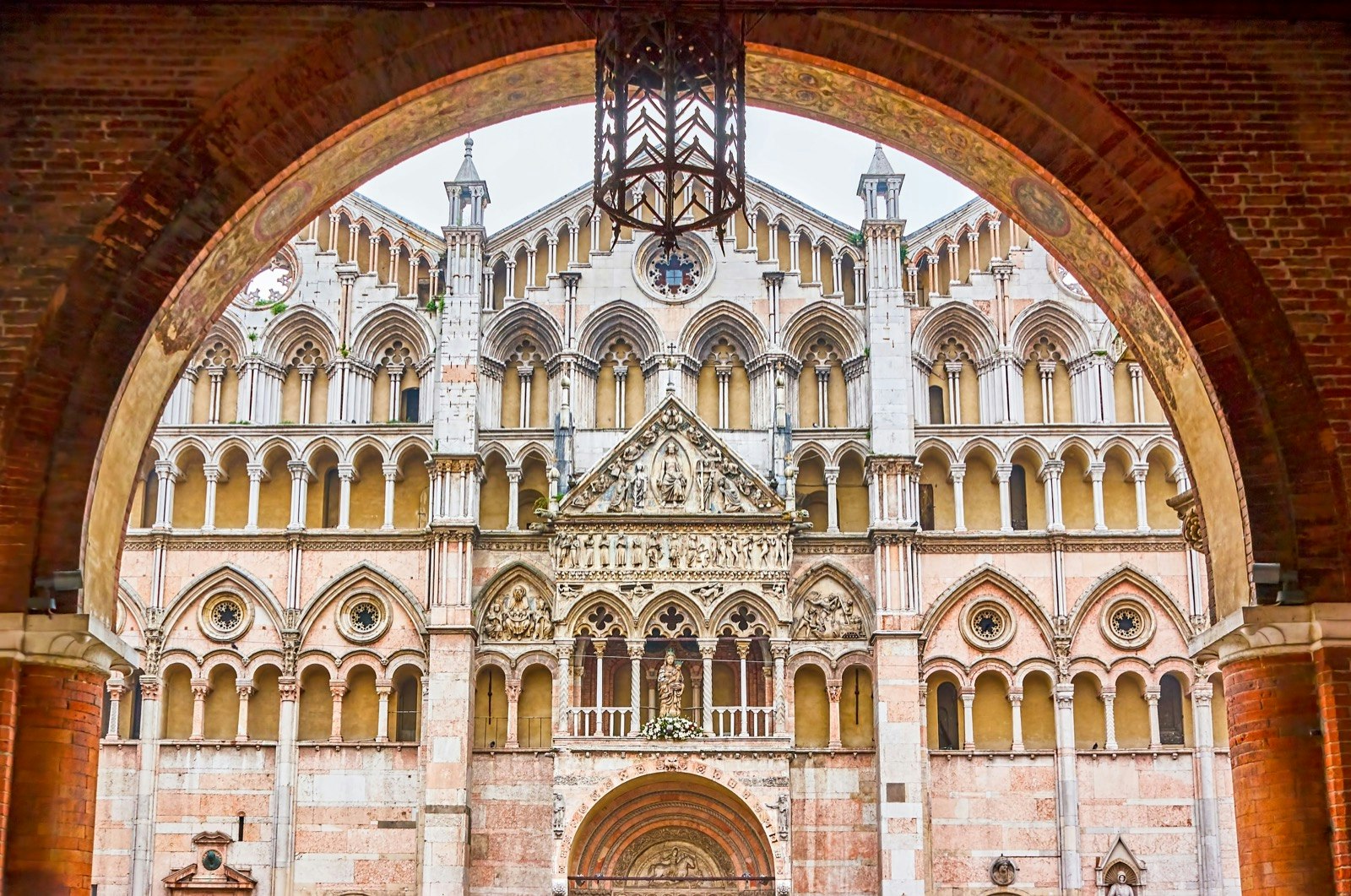
7. Travel back in time to mysterious Ferrara
Travel time: About one hour by train
Often mist-swirled and always mysterious, Ferrara is a time machine back to the Renaissance period. The Castello Estense , the ominous brick castle of the Este dynasty, dominates the city – today you can go for a boat ride in the moat that once separated the family from their citizens and mooch through the castle which, 500-odd years ago, was one of Italy’s cultural capitals. Fancy a taste of their lifestyle? Much of Ferrara’s traditional food comes from the Este family’s Renaissance cookbook – try pasticcio, a sweet-pastry pie filled with macaroni cheese, meat ragù and bechamel sauce, and salama da sugo, a spicy kind of sausage, served with mash and said to be Lucrezia Borgia’s favorite food. Both are acquired tastes, but a fascinating glimpse into how they ate hundreds of years ago.
Ferrara’s Palazzo dei Diamanti , an exhibition space in a 15 th -century palace whose façade is studded with diamond-shaped stones, reopened in 2023 after two years of closure. It was originally damaged in the 2012 earthquake, along with much of the city. Check out its website for what’s on during your visit – its exhibitions are usually top notch and well worth the trip.
Until the Second World War, Ferrara had a renowned Jewish community; this was the setting for The Garden of the Finzi-Continis , by Giorgio Bassani, and you can still wander the narrow streets of what used to be the Jewish quarter. Learn the history of the community – both here and more widely in Italy – at the exceptional MEIS , or National Museum of Italian Judaism and the Shoah.
How to get to Ferrara from Venice: It’s easiest to go by rail. High-speed trains take just over an hour, while regional ones are around 90 minutes. Otherwise, it’s an easy 75-minute drive along the autostrada, but it’s a toll road and city center parking is expensive.

8. Eat some of Italy’s best food in Bologna
Where to go from Venice by train? Further than you think. By high-speed rail, it’s easy to turn Italy’s culinary capital into a daytrip. Step off the Frecciarossa (“red arrow” train) into La Rossa (“the red” – one of Bologna’s nicknames, along with “the learned” and “the fat”), for a day of shameless indulgence.
Wander the streets of the Quadrilatero (home to food stalls since the medieval period), take a pasta-making class (we like the offerings at Salumeria Bruno e Franco ), and end with an aperitivo on Piazza Maggiore, Bologna’s main square, where a hulking naked statue-fountain of Neptune dominates one side, and the Basilica di San Petronio , a barn-like church, dominates the other. Any of the restaurants will do you proud – must-try dishes are tagliatelle al ragù, tortellini in brodo (tiny pasta pockets filled with a meaty, cheesy stuffing and swimming in broth), and cotoletta alla petroniana, or alla bolognese – a veal cutlet swathed in prosciutto, layered with cheese, then baked to oozing perfection.
How to get to Bologna from Venice: It’s easiest by train – high-speed Frecciarossa trains can whisk you there in just over an hour and a half. It’s roughly the same by car, though you should add autostrada tolls and the road is quite monotonous.
9. Climb into the Dolomites at Cortina d’Ampezzo
Travel time: Two hours by car
Within a two-hour drive from Venice, you can be in the heart of the Dolomites . Head due north, and within an hour you’ll be winding up through mountain passes towards Pieve di Cadore, the birthplace of Renaissance painter Titian (his birthplace is now a museum, and there are paintings by his artist family in the local church). From there, fork west, hugging the mountainsides, to Cortina d’Ampezzo .
This is one of Italy’s chi-chiest ski resorts, but there’s plenty to do year round, from hiking to eating (try the Michelin-starred SanBrite , whose owners source all their ingredients locally). This is part of the Ladin community, an ancient population of the mountains that have their own language and traditions. Learn about the Ladins, and the Regole – essentially a collection of centuries-standing families who "govern" the town – at the Ethnographic Museum, housed in an old sawmill.
How to get to Cortina d’Ampezzo from Venice: This is definitely one to drive. The two hours by car (or 80 minutes from Venice Marco Polo airport) changes to a minimum of five and a half by public transport and you’ll have to change at least twice.
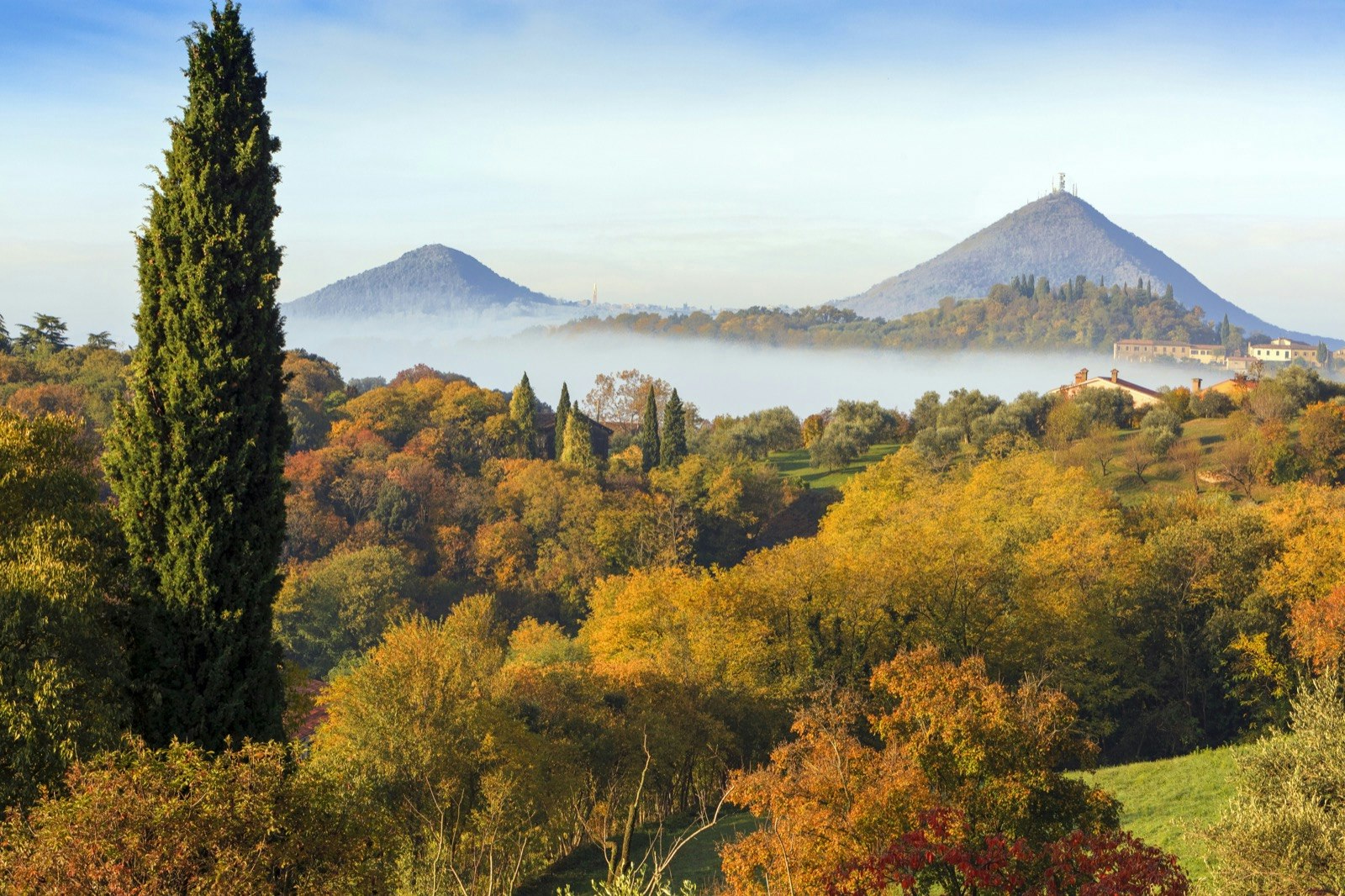
10. Wallow in volcanic mud in the Euganean Hills
Travel time: 45 minutes by car or train
The wider region around Venice, Veneto , tends to be pretty flat except where the landscape rears up towards the Dolomites. This is one of the exceptions – a group of cone-like volcanic hills, 81 of them to be precise, rearing up from the plains south of Padova.
Of course, their volcanic origin should give you a hint that Italy’s famous thermal spas will be nearby. The small, neighboring towns of Montegrotto and Abano are home to various springs and spas that have been going since Roman times. Today, along with other nearby towns Galzignano, Battaglia and Teolo, they’re said to form the oldest, and largest, thermal spa in Europe, with 240 thermal pools between them. One of our favorites is the Abano Ritz Hotel Terme – family- and female-owned for three generations. The thermal mud they use in balneotherapy treatments comes from right beside the hotel and the pools in their 6,000-square-meter waterpark stay a constant 33 degrees (91.4F), thanks to the thermal waters that spent 25 years and 100km (62 miles) underground before gushing out here.
Don’t spend all your time wallowing, though – the whole area is designated the Euganean Hills Regional Park, and there are trails for hiking, biking and horse-riding, as well as breathtaking views from behind the wheel if you prefer a road trip. Visit one of the sprawling Renaissance country villas on offer (try Villa Barbarigo , known as the hills’ answer to Versailles, near Galzignano). Can’t go to Italy without seeing some Roman remains? You’ll find bits of 2000-year-old spas at Montegrotto and Abano.
How to get to the Euganean Hills from Venice: Trains take between 37 minutes and an hour to reach the Terme Euganee-Abano-Montegrotto station, which serves the spa towns. If you want to explore the park, though, you’ll need a car – it’s about a 45-minute drive from Venice.
11. Wind back the centuries at Aquileia
Travel time: 80 minutes by car
Across the border in Friuli Venezia Giulia and en route to Trieste is this fascinating time capsule, where the history of the northern Adriatic is layered like a lasagne. Now a Unesco World Heritage site, this was one of the richest cities of the early Roman Empire before it was destroyed by the Huns in the fifth century CE. There’s not a lot from that era visible, since most of it lies unexcavated below fields, although the Roman river port is fascinating in its detail.
What you’re really going for is the later history – the basilica , dating back to the fourth century and rebuilt in the medieval period after an earthquake. The original mosaic floor was saved from damage and today it’s an astonishing, colorful carpet of early Christian artwork, with astonishingly vivid depictions of Bible stories like the Good Shepherd and Jonah and the whale, in between cameos of rich Roman locals, and lagoon wildlife.
How to get to Aquileia from Venice: The easiest way to get there is by car; it’s about an hour and 20 minutes’ drive from Venice, and about two thirds of the way to Trieste. By public transport you’ll need to take a train to Cervignano-Aquileia-Grado and then swap to a bus – the journey takes just over two hours.
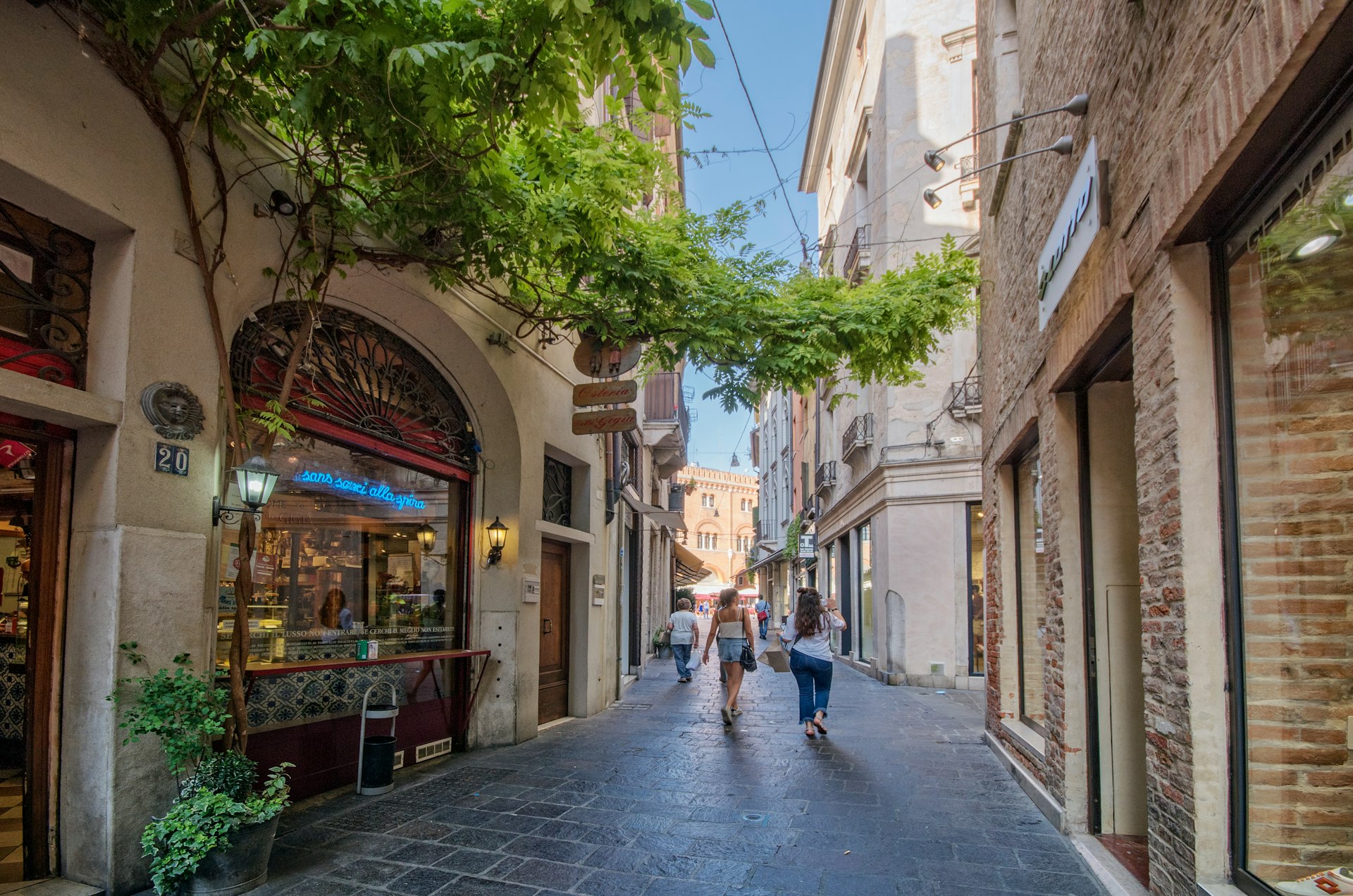
12. Visit Venice’s inland empire at Treviso
Travel time: 31 minutes by train
These days, Treviso is best known for its airport, home to budget airlines galore, but there’s nothing low-end about the town itself. Elegant, petite and pretty, Treviso is still a place for residents rather than tourists, and a walk around its calm centro storico is like one big exhale if you’ve come from crowded Venice. Once part of the Stato da Tera, Venice’s historic inland empire, it’s curiously similar to La Serenissima – all porticoes, art-filled churches and elegant palazzos – only without canals taking center stage (though there are a few – the Canale dei Buranelli, sweeping through the center, is the prettiest).
Don’t miss the Fontana delle Tette , a fountain in the shape of a naked woman which used to spout wine from her breasts – white from one, and red from the other – every time a new mayor was sworn in. The original has been moved to the Palazzo dei Trecento, the 13th-century castle-like building dominating the Piazza dei Signori but there’s a replica in situ just off Calmaggiore, the main street dating back to Roman times. The church of San Nicolò is a beautiful example of Gothic architecture, which you won’t find much in Venice.
How to get to Treviso from Venice: Trains run every half hour or so, and take 30-40 minutes to Treviso Centrale. Otherwise, it’s a simple, if not particularly scenic, 40-minute drive from Piazzale Roma.
This article was first published Mar 18, 2019 and updated May 15, 2023.
Explore related stories
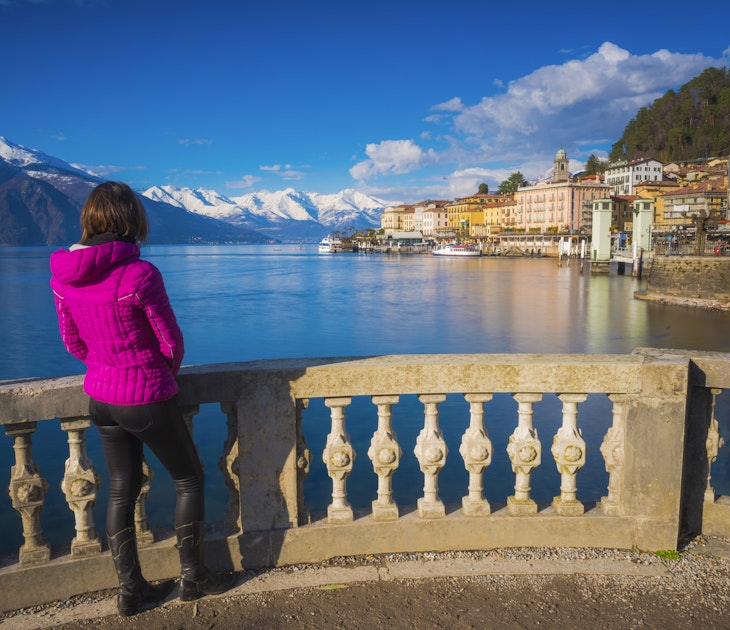
Feb 25, 2021 • 8 min read
Milan is the portal to a whole region of culture, fine food and even finer scenery. From lakes to monasteries, here are the best day trips from Milan.

Apr 8, 2024 • 7 min read
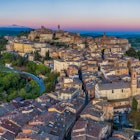
Apr 7, 2024 • 11 min read

Apr 5, 2024 • 5 min read

Mar 17, 2024 • 7 min read

Nov 20, 2023 • 7 min read
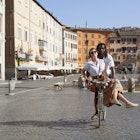
Nov 19, 2023 • 11 min read
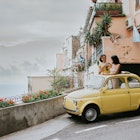
Nov 16, 2023 • 7 min read

Oct 27, 2023 • 6 min read

Oct 19, 2023 • 8 min read
- Skip to primary navigation
- Skip to main content
- Skip to primary sidebar
- Skip to footer
TravelAwaits
Our mission is to serve the 50+ traveler who's ready to cross a few items off their bucket list.
10 Idyllic Cities Near Venice, Italy | Perfect Destinations To Complement Your Trip

- Destinations
Veneto, the eighth largest of Italy’s 20 administrative regions, is located in the northeast of the country and stretches from the Dolomite Mountains to the Adriatic Sea.
Venice is the regional capital and probably the most famous and most visited city of Veneto. This captivating Italian city enchants visitors with its romantic canals, historic Venetian architecture, timeless art, labyrinthine alleys, and vibrant culture. It’s a unique blend of beauty and rich history, which makes it a perfect destination for millions of visitors every year.
However, Veneto is a large region with a great variety of landscapes and many gorgeous cities and towns with their own unique attractions, often neglected by visitors in favor of the undeniable charms of Venice, Italy.
It’s also a fertile region with the large river Po flowing through it and emptying into the Adriatic. Wine lovers will be tempted to sample the great wines of the Veneto region, especially those wanting to follow what is known as “The Ring Of Prosecco.” A special treat for opera and culture fans is to attend the outdoor summer opera season at the Roman Theatre in Verona.
Depending on interest and season, you can swim in one of the seaside resorts on the Adriatic, ski in the Dolomites, sail on Lake Garda, pamper yourself in the thermal baths of Abano, or simply admire the medieval wonders of Serravalle and taste one of the best prosciuttos in Italy, Veneto Berico-Euganeo from the Vicenza region.
As you can see, the possibilities are endless. Here we will show you the finer details of Veneto so that you don’t miss out when you next head to Venice .
10 Idyllic Italian Cities Near Venice You Must Visit
After Venice, Verona is the second largest city in Veneto, a true medieval treasure. Located 75 miles west of Venice, it’s perfectly suited for a day trip, as there is a motorway (A4/E70) and several trains per day connecting both in between 1 and 2 hours.
Built around a U-bend in the river Adige with a huge medieval bridge crossing it, the most famous landmark is the Roman Amphitheatre. Built in 30 AD and perfectly preserved, it originally held 30,000 spectators. Nowadays, the arena hosts sumptuous theatre and opera productions, one of which you should try to see. Here is the program for this year as well as day trips for you to choose from.
Apart from the medieval town center, Castle Vecchio, and many piazzas like Piazza delle Erbe, there is another highlight for culture fans in Verona . William Shakespeare and his play Romeo and Juliet are closely connected to Verona. Make your way to Via Capello and look at the tiny balcony of the 14th-century residence where the drama unfolded.

Padua, located 25 miles west of Venice, is another beautiful city suitable for a day trip. The city sits on the banks of the river Bacchiglione, which is crossed by many elegant bridges. Padua is a historic center and appears twice in the list of UNESCO World Heritage Sites, once because it features the world’s most ancient botanical gardens, created in 1545, and because of the 14th-century frescos by Giotto that are found in several buildings of the city, most notably the Scrovegni Chapel.
Visit the Romanesque Basilica of St. Anthony with its Byzantine-style domes and cloisters and the tomb of the saint.
Padua has Italy’s second oldest university, and as a result, a lively student community that loves to hang out in the many stylish cafes and bars in the old part of town by the river.

You might not have even heard of Vicenza, a Renaissance city located at the northern base of Monte Berico about 40 miles from Venice. Halfway between Venice and Verona, it is another ideal day trip destination. Renowned Renaissance architect Palladio has practically designed Vicenza and countless palaces and churches distributed all over the city. One of his last works is the Teatro Olimpico, the world’s oldest indoor theatre made from masonry.
Piazzas and small streets will charm you in Vicenza, though what will dazzle you most is the abundance of jewelry shops and ateliers. Jewelry making has been the most important industry in Vicenza since the Middle Ages. Feast your eyes on the jewelry museum and the works of art from one of the most important jewelers, Soprana . Have a coffee or cake in the lovely Piazza dei Signori and be happy that you added this gorgeous, idyllic little town to your collection of unknown or underappreciated Italian gems. Vicenza made it on our list of beautiful lesser-known towns to visit in Western Europe .

Planning a visit to Treviso brings you right into the prosecco region . The surrounding hills are where this so very Italian sparkling wine is cultivated, especially between Conegliano and Valdobbiadene, and at a distance of just over 20 miles from Venice, it makes a great alternative to the lavish eateries of Venice. In keeping with the sparkling wine motive, there is even a replica of a 1559 statue of a woman who, on special occasions, spouts wine from her breasts, red from one and white from the other.
Treviso is also where the delicious Italian dessert tiramisu was invented in Ristorante Le Beccherie. Fashionistas may be interested to hear that Treviso is the home of the United Colors of Benetton.
Perhaps not as impressive as those of Venice, but no less idyllic, are the many canals that grace Treviso. You should not miss visiting the fish island where there is a huge fish market.
Treviso also has an airport, although it is mostly served by low-cost airlines. It also has an incredible winery that is worth traveling to visit .

Nestled in the hills of Treviso some 50 miles northwest of Venice lies the small medieval town of Asolo , a veritable open-air museum surrounded by massive city walls and dominated by a stern fortress. Many celebrities like Yoko Ono, Ernest Hemingway, and explorer and travel writer Freya Stark have deemed Asolo one of the most beautiful villages in Italy, so follow their footsteps and make the short trip from Venice.
Asolo is also romantically known as the “City of the 100 Horizons.” Apart from the amazing sights and if you are interested in antiquities, you should plan your visit to coincide with the second Sunday of any given month because an antique fair is held that day. Who knows what treasures you might find?

A trip to Rovigo takes you to the two majestic northern Italian rivers of Po and Adige close to the Adriatic. Located 50 miles southwest of Venice, Rovigo has a cathedral, the ruins of a 10th-century castle, and an obsession with rugby. For hunters of fashion at affordable prices, Rovigo is an insider tip because of the outlet of expensive fashion house Ivo Milan. Another curiosity: Rovigo has not one, but two leaning towers.
7. Jesolo And Lido Di Jesolo
We mustn’t forget Veneto and the Adriatic coast. Lido di Jesolo, just north of Venice and between Eraclea and Cavallino-Treporti, is one of the most popular and visited seaside resorts, especially in the summer. Miles of golden sand beaches border the sea with attractions like Aqualandia for kids. The small adjacent town of Jesolo is much quieter and invites strolls on the Piazza Mazzini, which are very comfortable because it is all flat. Shop along the tree and boutique-lined Via Bafile. If you are interested in military history, visit the Vidotto Military Museum .
If you like vibrant nightlife, Jesolo is a party town, so you can dance the night away if you wish.

You can hardly think of a bigger contrast than that between the river Po flats, the Adriatic, and the dramatic setting of Belluno amid the ragged eastern Dolomites. The city sits atop a cliff above the confluence of the rivers Ardo and Piave. Belluno is a romantic, quiet town with many baroque churches and two massive gates in the walls of the city. Also, admire one of the most beautiful baroque towers in Italy. The town is located 62 miles from Venice and can be reached by train, bus, or car .

9. Abano And Abano Terme
The benefits of hot springs and thermal waters in Veneto have been known and used since Roman times. One of the most beautiful and popular health resorts and spas is to be found in Abano and Abano Terme. You can easily combine your stay in Venice with serious pampering in Abano because the distance is just an hour either by train or road along the A4/E70 via Padua. You may even contemplate a stopover in Padua (see above).
Abano is a quiet resort surrounded by the Euganean Hills just south of Padua. It is an uncrowded resort, so you can go for a stroll around the gardens and parks, but the emphasis is on the use of thermal waters, spas, and treatments. Most of the elegant 5-star hotels with their thermal pools are located along the Viale delle Terme and allow the use of their spas even if you don’t spend the night, though you have to pay extra.
One of the best and most luxurious is Piscine Termali Leonardo da Vinci . Another interesting thing to do is to explore the history of the legendary Venetian mask by visiting the International Mask Museum.
10. Bassano del Grappa
Bassano del Grappa is one of the most charming small towns in Italy near Venice, perfect for a day trip. Facing the Alps and bathed by the Brenta River, this hidden gem rich in culture offers incredible views and unique experiences.
The geographical position of Bassano del Grappa is strategic for visiting this beautiful Prealpi region, but it is a charming Old Town that attracts tourists from all over the world. The city center develops around three main squares and surrounding pedestrian streets scattered with shops, bars, and historical architectural details.
The main attraction is the “ Ponte Vecchio ”, or the old bridge of Bassano, crossing the river Brenta and designed by Renaissance artist Andrea Palladio. Many shops and bars surround the bridge, including Nardini , Italy’s oldest distillery dating back to the 18th century and still serving its customers.
For visitors looking for some extra fine dining experience, with its curated interiors, Impronta Restaurant is probably the fanciest in town and a top-notch experience. This is a foodie city, with treats, street food, and fine dining delicacies, both traditional and experimental to be tasted at every corner. More importantly, there are virtually no tourist traps and the quality of food is generally high.
What Are the Closest Cities to Venice?
Padua, Bassano del Grappa, Treviso, Abano Terme, Montegrotto Terme, and Marostica are just a few of the many noteworthy nearby cities for a day trip from Venice. Each city offers an unforgettable immersion into diverse Italian experiences and natural beauty.
How Long to Spend in Italian Cities?
You’ll need at least two or three days in destinations such as Rome, Florence, Venice, and other cities. That won’t give you enough time to cover everything but it will allow you to explore some of the must-see attractions.
How to Get Around Italy in the Best Possible Way?
If you travel between major cities, it is best to take a train, while buses are better for visiting mountain towns and hilly inland areas. For more remote parts you’ll need a car. Major cities have decent public transport, though seeing their historic centers is best done on foot. Venice can be seen if you take a gondola ride down the Grand Canal or go on a boat trip in the Venetian lagoon.
Is Italy Expensive?
Italy isn’t cheap. Accommodation rates vary between places and seasons but prices are universally high in popular destinations. That said, you can still find deals if you book early and avoid peak periods.
Do I Have to Dress Up All the Time In Italy?
There’s no need for that. When sightseeing wear something comfortable, especially the shoes. However, major religious sights often require dress codes, so make sure you cover your shoulders, torso, and thighs. For going out in the evening, smart casual is the way to go.

For the past eleven years, blogger and traveler Inka Piegsa Quischotte has been documenting her adventures over at her blog GlamourGranny Travels . Inka loves to write about luxury and solo travel, mostly to places where the sun shines. She has lived in London, Miami, and Istanbul for several years, and now makes her home in Spain's Costa Blanca.

Home » Travel Guides » Italy » 15 Best Day Trips From Venice
15 Best Day Trips From Venice
Venice is a uniquely charming city, set on the canals and waterways of northern Italy.
It has a well-deserved place on many people’s Europe bucket list, for its gondolas and piazzas, its world-renowned food and intricate artisanal masks.
The city has plenty to keep you occupied, as even simply wandering its labyrinthine streets leads to new discoveries each day, but for the restless traveller, there is also plenty to explore beyond the water, in Italy as a whole.
If you find yourself getting sick of its shady streets, there are definitely options for you.
Here are 15 of the best day trips to take while on your trip to Venice.
1. Lake Garda

From one water-bound attraction to another, Lake Garda is without doubt Italy’s most famous, as well as largest, lake.
Surrounded by lemon trees, magnolia, cypresses and olive trees, Lake Garda exudes a Mediterranean vibe, and is just as relaxing as it sounds.
Enjoy a boat ride across the lake, or stroll along the shore, before exploring the lakeside town of Sirmione or the medieval jewel of Lazise.
If you have time, visit the nearby producers of olive oil, and learn about their traditional methods of production.
2. Murano, Torcello and Burano islands

Venice’s own islands of Murano, Torcello and Burano deserve a separate day trip to fully appreciate and explore what they have to offer.
Glass blowing, lace production and embroidery are just a few of the attractions of these picturesque islands, with each in turn having their own highlight.
Visit the glass factory in Murano and watch a display of great artistry from the glass blowers, who will craft molten glass into dainty ornaments right before your eyes.
Pay a visit to Torcello, the oldest of the inhabited islands, and finish up in Burano, whose lace making is renowned.

Near to Lake Garda is fair Verona, made famous by Shakespeare but more than maintaining its popularity through sheer charm and beauty.
Verona was of course the setting for the most popular of Shakespeare’s plays, Romeo and Juliet, and a highlight of any visit is spotting the balcony from which Juliet wondered ‘wherefore art thou Romeo?’
Head into the city’s historical centre to check out its many picturesque piazzas and the famed Mazzanti houses.
Then take a walk along the river or stop by the Basilica or Verona’s Duomo to marvel at its impressive architecture.

By train, a day trip to Padua is a fantastic option from Venice.
Padua has intrigue as well as all the hallmarks of Italian towns: beautiful architecture, vast open piazzas, art and excellent cuisine.
One of the most interesting highlights of a Padua trip is wandering through its former ghetto, which also houses the only Synagogue still in use in Padua today.
The Cappella Degli Scrovegni is another point of interest, which is home to many exquisite 14th century works of art, including those of Giotto.
5. Prosecco Region

One of Italy’s most famous exports, a Prosecco tour is a must-do on a trip to Italy.
Only around an hour’s drive from Venice, the scenery on the journey there is jaw-dropping, and of course the reward on arrival is a taste of those renowned bubbles.
The hills of the Prosecco valley are a great location to learn about the whole process of wine-making, from picking the perfect grapes, to pressing them, fermenting them, and finally bottling the finished products.
You’ll get the chance to wander round well-stocked cellars and perhaps choose the perfect tipple to pair with your lunch.
6. Florence

Thanks to the advent of high speed trains, a trip to Florence from Venice is well within the reach of a day tripper.
Just two hours away from Venice, Florence holds great treasures for tourists.
From the glorious art hosted by the world-renowned Uffizi Gallery and the city at large, to the towering Duomo offering panoramic views of the landscape, there will be plenty to keep you entertained.
If marvelling at Renaissance paintings and sculpture isn’t really your thing, you can always while away the hours wandering through Florence’s attractive streets, from the Ponte Vecchio where the high-class Medici family trod centuries ago, to the Piazza della Liberta.
7. Venice Lido

Venice’s Lido necessitates its own day trip in order to soak up the requisite number of rays, and it’s definitely a relaxing way to spend a day out.
It’s a ferry ride away, but well worth it for the glory of sun, sea and sand.
If seaside lounging, reading, sunbathing, swimming and sipping mojitos isn’t quite enough entertainment for you, a diverting way to spend the afternoon might be to explore by bike.
Cycle along the lagoon, spot the myriad tiny islands in its centre, and make sure to check out the massive, impressive fortress of Murazzi, built in the 18th century.

The medieval town of Siena is a Tuscan gem, and at just over three hours’ drive from Venice it’s not too far a stretch to visit for the day.
Home to the famed Palio Horse Race, Siena offers more than just the main square, Piazza del Campo: it has a 12th century cathedral and myriad narrow cobbled streets among which you can happily lose yourself.
Siena’s gothic architecture lends a sense of grandeur to even the dreariest days.
If nothing else, divert yourself in Siena with some delicious gelato, for which Italy is world-renowned, and sit in the piazza to watch the world go by.

Yet another historical town famed for its architecture, Vicenza’s main draw is its buildings designed by celebrated 16th century architect Andrea Palladio.
The Teatro Olimpico is the key attraction of the town, as Palladio’s last work, but the Villa La Rotunda and the Basilica Palladiana also provide excellent examples of Palladian design.
The town’s shady parks and narrow streets lend it a relaxed air, and to top it off the views from the the Santuario di Monte Berico are breathtaking, and can be reached by a covered walkway.
10. Amarone

Nestled in between Lake Garda and Verona, the Valpolicella Valley produces excellent wines including Amarone and Recioto.
The drive along narrow winding roads to reach this destination is a real treat, passing through scenery replete with villas, olive groves and of course wineries.
Take advice from a well-versed sommelier and cheese taster on which cheeses to pair with which drinks, and dine on a traditional lunch at a 15th century cantina; an experience in itself.
11. San Gimignano

Tuscany has a multitude of quaint towns tucked away amid its hills and scenic countryside, and one of the most beautiful is San Gimignano.
A medieval jewel, San Gimignano is a UNESCO world heritage site, with plenty to keep visitors occupied.
Known for its wine, saffron, and finely crafted pottery, you can find many ways to entertain yourself in its crooked side streets.
It’s also an arresting sight on the approach, with a skyline towering above the trees.
If one Tuscan town isn’t enough for you, you can also take the opportunity to visit nearby Siena or explore further afield in the Chianti countryside.
12. The Dolomites

Italy’s north-eastern Veneto region holds much more than just the waterways of Venice.
Even aside from its popular wineries, nature has much more to offer: namely, the Dolomites.
Explore up into the fresh air of the mountains, visiting key highlights such as Cortina, Lake Auronzo and Lake Misurina.
Keep your cameras at the ready as you wind through valleys and power up steep mountain roads, reaching a peak of over 7,700 feet.
If the weather allows, a quick trip up in the cable car from Cortina up to Faloria is well worth it, offering panoramic views from its lofty peak.
13. Ravenna

Charming Ravenna has been given the accolade of UNESCO World Heritage status for its stunning mosaics.
Ravenna was of great importance during the era in which the Byzantine and Roman empires mixed.
Perhaps the best thing about Ravenna is that it isn’t as swarmed with tourists as other Italian destinations are: it’s not on just anyone’s list.
On the way to or from Ravenna, you can also choose to visit the impressive Pomposa Abbey, build around the 10th century by members of the Benedictine community.
14. Venetian Villas at Padova and Asolo

What better way to dive deeper into your exploration of Venice itself than to visit its outskirts, and learn about a region that belonged to the Republic of Venice centuries ago? Journey along the Brenta Canal and tour your way through the villas alongside it, built by holidaying Venetians in days gone by.
Head out to Padova, with its pretty university, and find a chapel inlaid with frescoes by Giotto.
Afterwards, move on to Asolo, set back into the hills, which was the location for the court of the Queen of Cyprus and later played host to the writer Ernest Hemingway.
15. Trieste

Trieste offers something a little different from the rest of the Venice day trips on offer.
Its complex history and geographical position has lent it a huge variety of influences, and indeed it was only returned to Italian possession in 1954. From its castles to its square, its seafront to its myriad churches, there’s heaps to explore in this beautiful city.
Missed off many a travel plan, Trieste is certainly underrated given its easy elegance and abundance of cultural activities on offer – and certainly a good option for a visit from Venice.
15 Best Day Trips From Venice:
- Murano, Torcello and Burano islands
- Prosecco Region
- Venice Lido
- San Gimignano
- The Dolomites
- Venetian Villas at Padova and Asolo
- Venice Essentials
- Secret Venice
- Luxury Hotels
- Top Value Hotels
- Venice Rentals
- Best of Venice
- Venice's Beaches
- Getting to Venice
- Things to Do
- Books about Venice
- Venice Weather
- Near Venice
- Veneto Guide
- Veneto Hotels
- Ski Resorts
- Lake Garda Hotels
- Garda's Beaches
- Photo Gallery
- Amazing Hotels
- Build your Vacation
- Summer in Venice
- Venice in July
- Best Restaurants
- Wine Routes
- Our Recipes
- Your Recipes
- Hotels in Rome
- Rome Rentals
- Rome's Top Sights
- Shopping in Rome
- Rome's Market
- Easter in Rome
- Beaches & Rome
- Weather in Rome
- Best of Southern Italy
- Amalfi Beaches
- Amalfi Hotels
- Amalfi Album
- Hotels in Florence
- Shopping in Florence
- San Gimignano
- Best Cities
- Why Italy's Special?
- Best Italian Beaches
- Videos Of Venice
- Amalfi Coast
- Moments in Italy
- South Italy Videos
- Italian Summers
- Italian Property
- Italian Insurance
- Advertising
Join A Secret Italy
6 places to see near venice - updated for 2024.
Visiting Venice this year? Then there are six places close to Venice that you'll not want to miss out on.
There's a map at the bottom of the page to show you where they are, but even the farthest is an easy 2-hour drive from Venice, and the first one is a short boat ride away. So rent yourself a car, try Discover Cars for the best deals , and head out on the trip of a lifetime.
Ready to go? We'll start with those nearest to Venice and move on to those farther away...
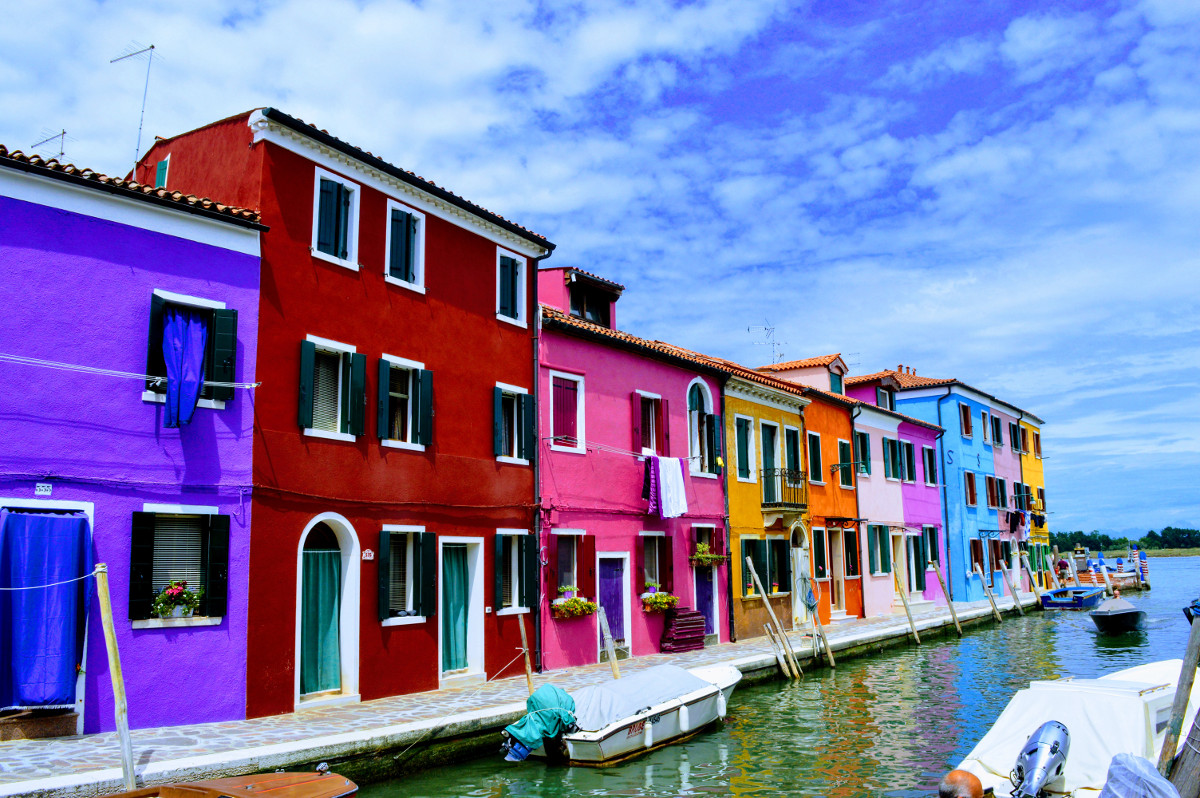
A short boat ride from Venice is the enchanting and vibrant fishing village of Burano, where time seems to stand still. Stepping foot on this picturesque island is like stepping into a fairytale world. In the past, the village's men would embark on their daring seafaring adventures while the women would remain behind, skillfully crafting some of the world's most exquisite lace. To this day, this beautiful tradition still lives on as women continue to devote themselves to the art of lace-making, preserving the rich heritage of Burano.
Beyond its lace-making legacy, Burano offers a true escape from the hustle and bustle of city life. The peaceful atmosphere and idyllic scenery make it a haven of tranquility. Don't forget to savor the island's culinary delights, as the local seafood dishes are known to tantalize the taste buds with their freshness and flavor.
You can easily get to Burano by boat from Venice, but if you don't feel like figuring out boat timetables etc. then here's a good tour to see all the highlights in a morning or afternoon.
Prefer to really get to know this enchanting island: filled with fascinating people, incredible stories, and secret corners? Read our guide to the real Burano.
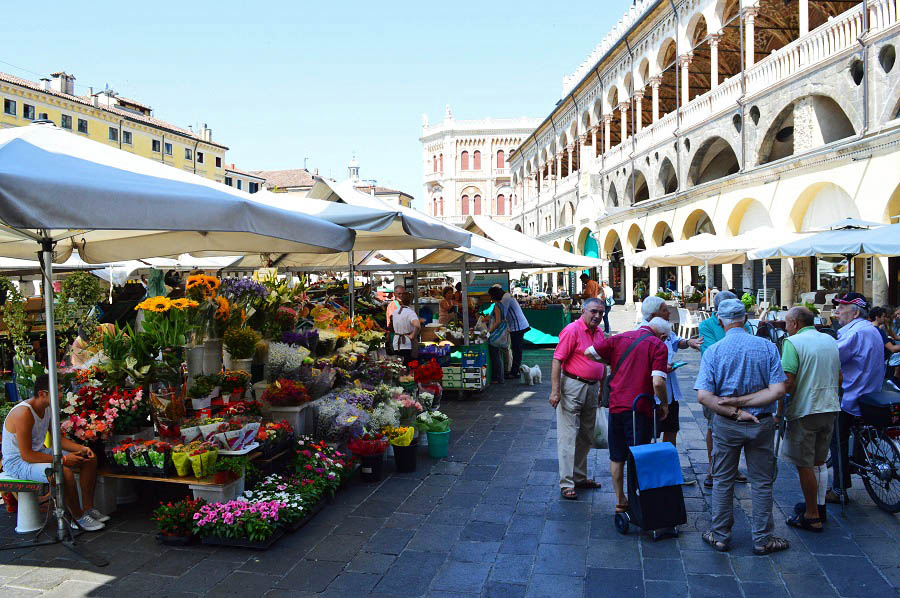
Padua, or Padova as it is called in Italian, is a city near Venice that is bursting with life and youthful vigor. It's like Italy's own version of Cambridge, with a bustling student population zipping around on their bicycles (there are way more bicycles than cars here).and lovely squares where the old folks gather to gossip and market sellers convince you to buy the deal of a lifetime.
What makes Padua truly special is it is still relatively unspoiled by the masses of tourists. It proudly showcases its majestic cathedrals, adorned with awe-inspiring artwork that tells tales of bygone eras. Every step you take in Padua is like unearthing fragments of its illustrious history, from ancient Roman remnants to the grandeur of medieval palaces.
It is easy to get here from Venice too, from Venice's Santa Lucia train station to Padua's main train station, Padova Centrale takes only around 30 minutes,
Like the next town on our list, Asolo, this too it is a town where tourists haven't yet arrived in numbers - despite the fabulous cathedrals, great art works, beautiful parks, thousands of years of history... I could go on and on but rather discover more for yourself.
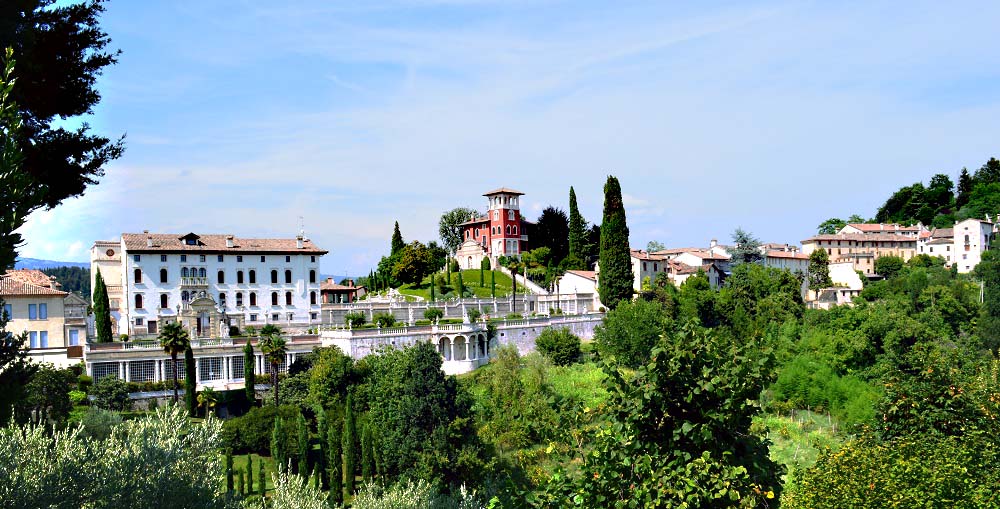
Considered to be one of Italy's loveliest small towns, and certainly the loveliest small town near Venice, Asolo really is something super special - artists and writers having been drawn here for centuries.
Its picturesque streets, adorned with colorful houses and flower-laden balconies, create an idyllic ambiance that feels straight out of a storybook. The town's rich history and cultural heritage are evident at every turn, with ancient ruins, magnificent palaces, and a splendid castle crowning the hilltop.
The most convenient way to travel is by renting a car and driving. The journey takes approximately 1 hour and follows the A27 highway towards Belluno. Take the exit at Treviso Nord and follow the signs to Asolo. The scenic drive through the Veneto countryside adds to the charm of the trip.
Asolo is truly one of my happy places, a tranquil haven that encapsulates the essence of Italy's timeless beauty. One of my favorites in all of Italy. Read more about it here.
MUST-VISIT IN ASOLO
🍷 Take your time to visit a historic estate in the Alpine foothills and taste the famous wines of the region
4) Madonna della Corona
On a cliff-side and seeming to touch the clouds, while far far below lie the fields and forests of the Veneto; this is the Madonna della Corona. How did they get it up here and why? Answers and more here.
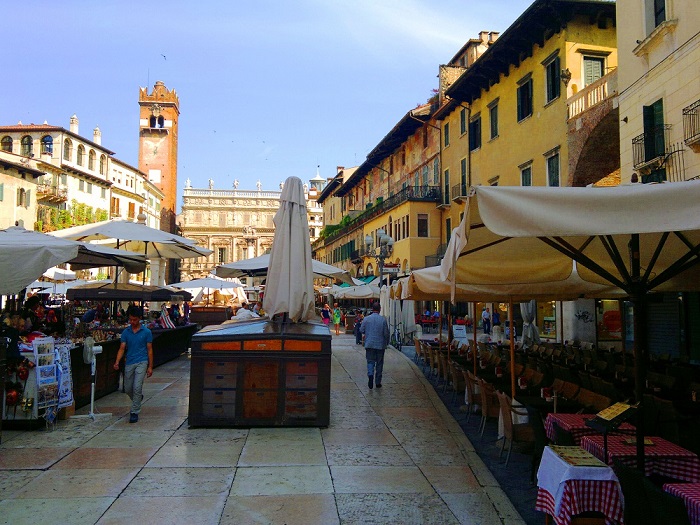
From the legendary tale of Romeo and Juliet set in Verona to its stunning Roman ruins and the iconic Roman Arena, Verona is a treasure trove of cultural riches.
Steeped in history, the city proudly showcases its Roman heritage through well-preserved sites such as the Verona Arena, an impressive amphitheater that hosts world-class opera performances. As
Verona's charm extends beyond its historical landmarks. Nestled amidst rolling hills and bordered by the Adige River, the city boasts a picturesque setting that captivates visitors. Its cobbled streets are lined with charming cafes, boutique shops, and vibrant piazzas where locals and visitors alike gather to savor the city's lively atmosphere.
Beyond its tourist attractions, Verona offers a high quality of life that makes it a desirable place to call home. With its excellent infrastructure, renowned universities, and thriving arts and cultural scene, Verona provides a balanced blend of modern amenities and old-world charm. Whether it's strolling along the riverbanks, exploring the vibrant neighborhoods, or indulging in the city's culinary delights, Verona offers a lifestyle that effortlessly combines tradition with contemporary living.
Indeed, Verona holds a special place in the hearts of those who have experienced its magic. Its captivating blend of history, natural beauty, and vibrant atmosphere make it a city that resonates with both residents and visitors, making it undoubtedly one of Italy's loveliest cities and a top contender for the title of the best city in Italy to live in.
Getting to Verona from Venice is a straightforward and convenient journey too. The most popular way to travel from Venice to Verona is by train . Trains depart frequently from Venezia Santa Lucia station and arrive at Verona Porta Nuova station. The journey takes approximately 1 to 1.5 hours, depending on the train type.
If you prefer driving, you can rent a car and travel from Venice to Verona by road. The distance between the two cities is approximately 120 kilometers, and the journey typically takes about 1.5 to 2 hours, depending on traffic. Keep in mind that parking in Verona's city center can be limited and expensive, so it's advisable to research parking options in advance.
Get our FREE Guide to Verona.
6) Sirmione
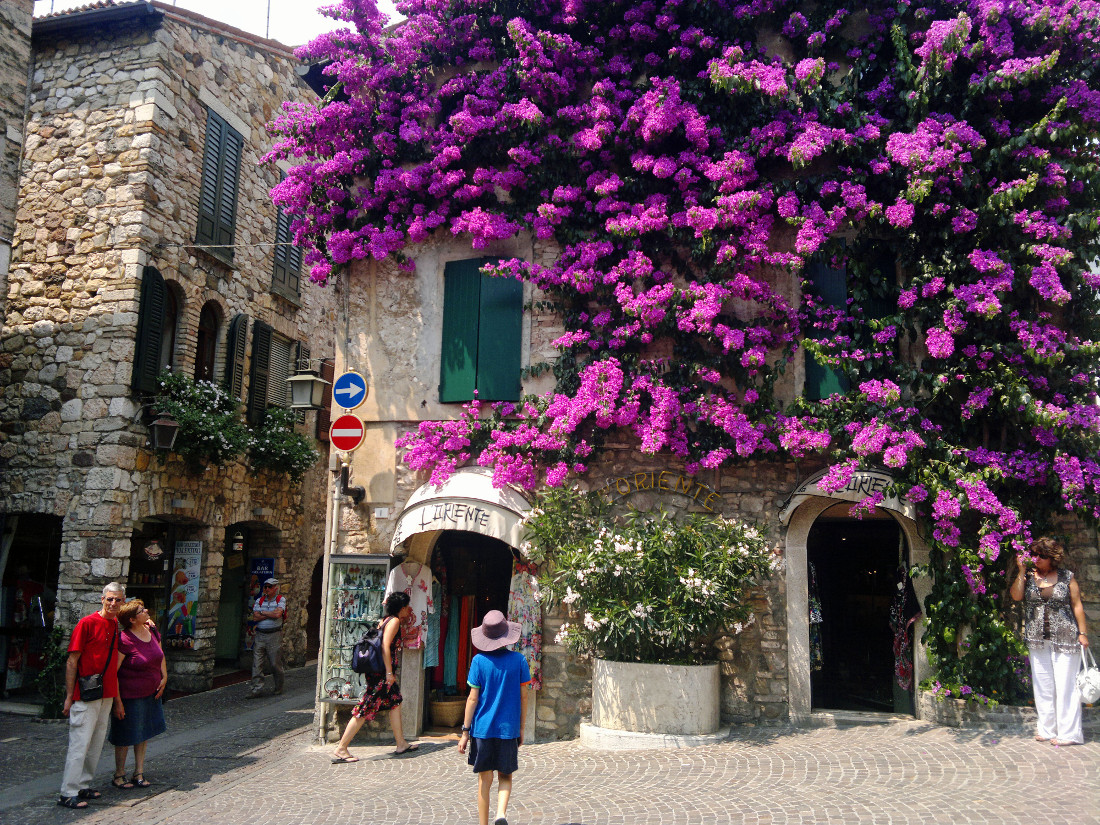
Ancient cobblestone lanes over which centuries of history have passed. Cottages covered with flowers and all summer long the fragrance of jasmine hangs in the air.
With its idyllic location, Sirmione is an oasis of tranquility, offering respite from the bustling city life. Immerse yourself in the warm embrace of this charming town, where every corner holds the promise of a new discovery. Indulge in delectable local cuisine at waterfront restaurants, sip on a glass of exquisite wine while overlooking the glistening lake, or simply lose yourself in the labyrinthine streets, where surprises await at every turn.
Sirmione, with its enchanting ambiance and undeniable charm, invites you to create timeless memories in its embrace. Discover Sirmione here.
Your Questions Answered
What other city is close to Venice, Italy?
Padua is close to Venice, located approximately 30 kilometers (18 miles) to the west. It boasts historical sites such as the Scrovegni Chapel and the Basilica of Saint Anthony. Here's all you need to know about this great city. Padova isn't the only splendid city near Venice; Treviso, too, is fabulous , and it is only around 30 minutes by train from Venice.
Can you do a day trip from Venice to Florence?
Yes, it's possible to do a day trip from Venice to Florence . High-speed trains connect the two cities, with travel times of around 2 hours, allowing for a day of exploration in Florence before returning to Venice.
Are there beaches near Venice?
Yes, the Lido di Venezia is a nearby island known for its sandy beaches. Easily accessible by vaporetto, it offers a seaside escape from the historic canals of Venice. Take a look at our beach guide for all the best beaches near Venice that you will not want to miss.
Is there a direct train from Venice to Lake Como?
While there isn't a direct train from Venice to Lake Como, you can take a train to Milan and then transfer to a train or other transportation to reach Lake Como.
Map - 6 Places to See Near Venice
Please Book with Us... Maria here, if you enjoy my site I'd love your support.
Simply book your next trip anywhere (not only to Italy) via the link below or with any of the hotel links on the website.
You'll get the best deal available and the income I receive helps me to remain independent and to keep bringing you more of beautiful Italy.
Click to Begin
You'll Enjoy These...

Venetian Art - The Most Beautiful Paintings of Venice Italy
Venetian art is world famous and Venice has inspired artists for centuries. I have longed to be able to offer contemporary art that continues that tradition...

Lake Garda: Maps, Beaches, Restaurants and much more.
Need a romantic getaway? Looking for a family holiday? Whatever you want Lake Garda has something suited to you. Let me share its secrets...
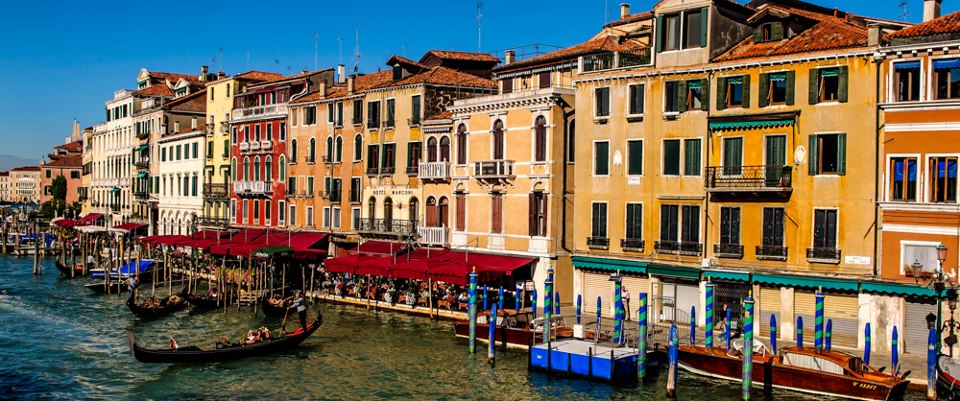
Venice in Photos
Venice in photos takes you on a visual journey through one of the loveliest cities on earth. An absolutely stunning experience.
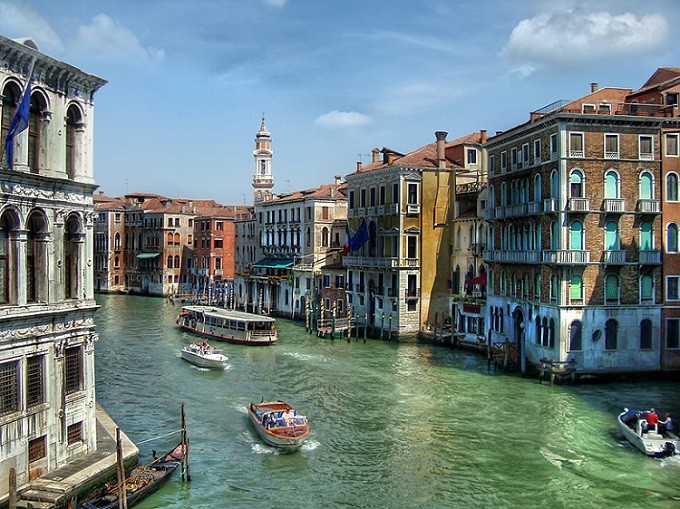
The Best Tours of Venice Italy
The best tours of Venice Italy, selected by an insider. Walking tours, gondola trips, St. Mark’s Basilica and even a creepy ghost tour. We have it all!
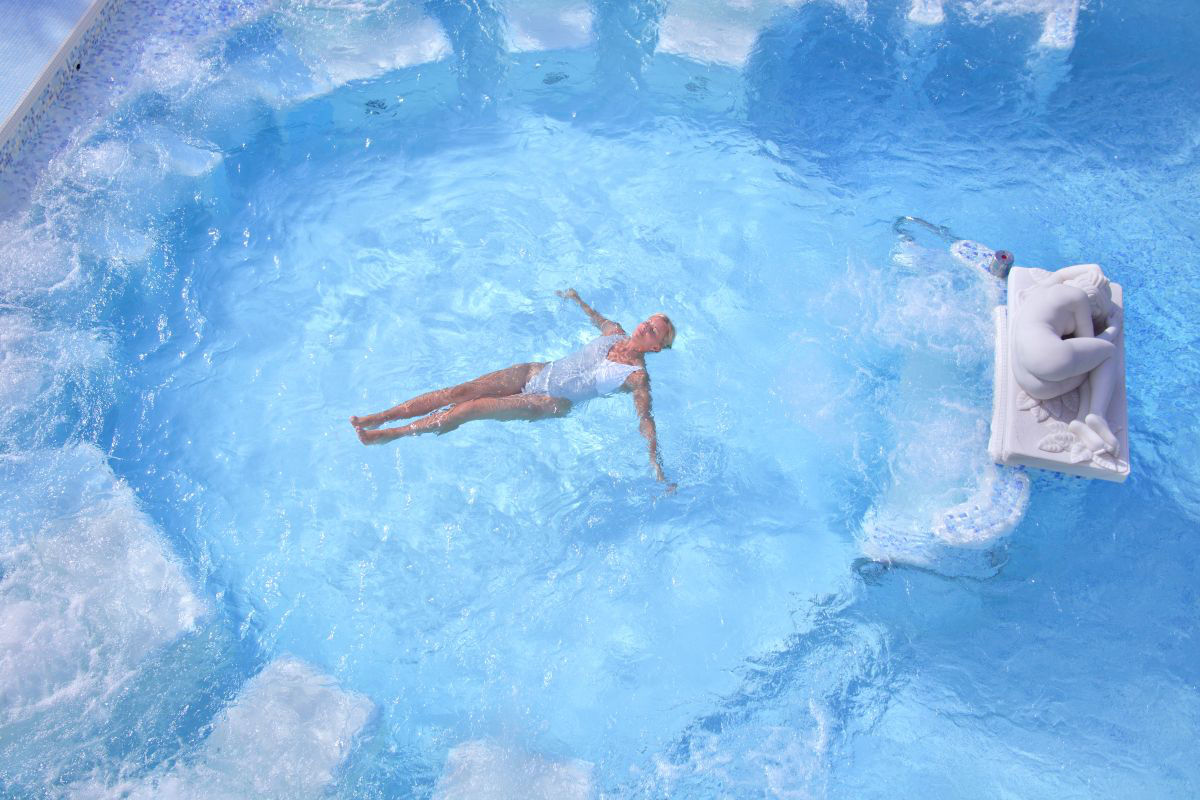
The Best Thermo Spas near Venice Italy
Looking for thermo spas near Venice, Italy or in Venice? Our guide has everything you need to plan a visit to the best spas to be found in northern Italy.
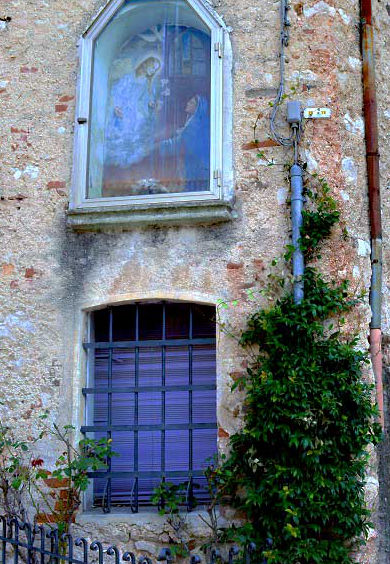
Portobuffole - One of the Top Italian Small Towns
There are many gorgeous small towns scattered throughout Italy. We've made it our mission to discover some of the best. Portobuffole is one of them...
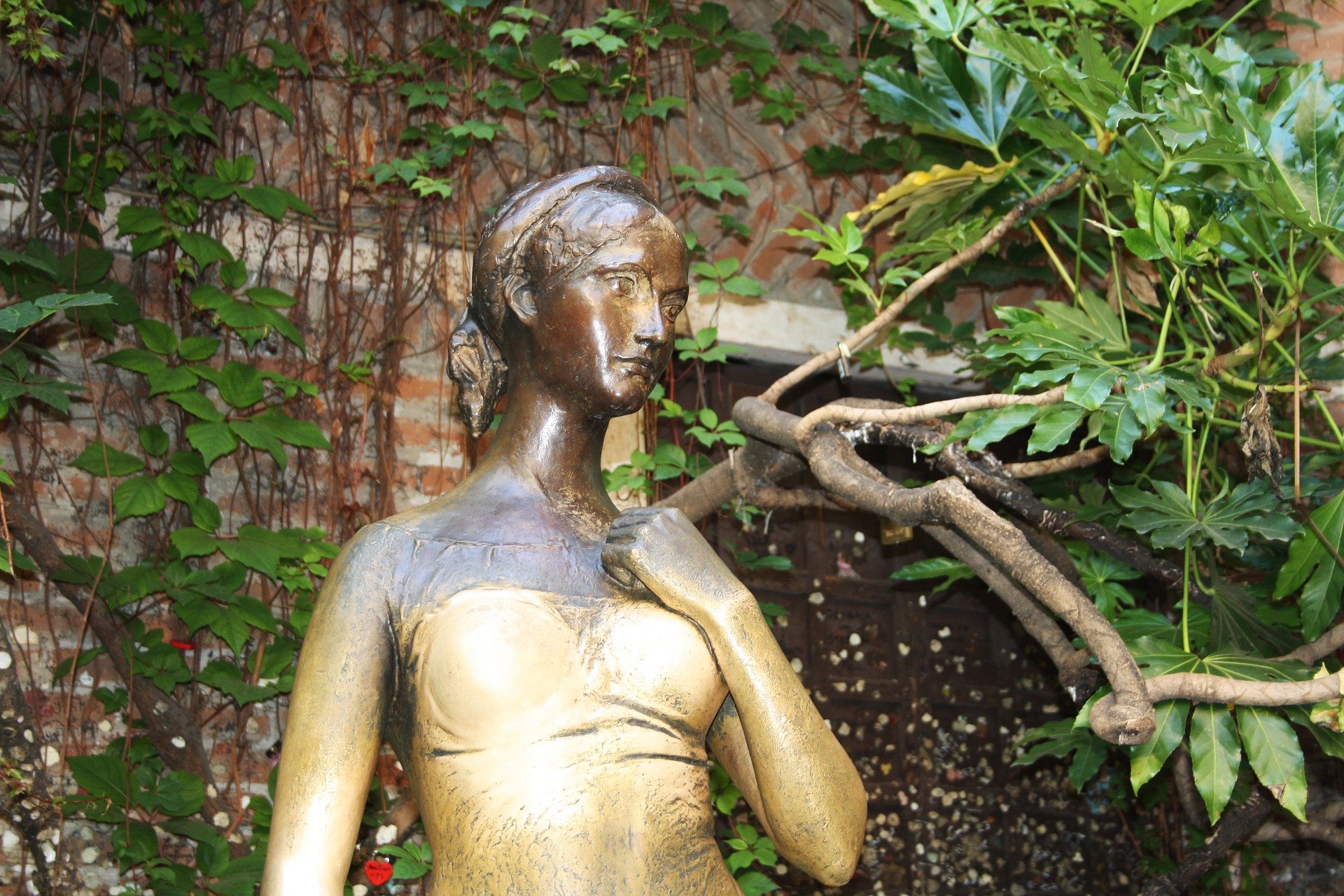
Finding Romeo and Juliet in Verona Italy
Want to visit the balcony of Romeo and Juliet in Verona Italy? Read more about the balcony, romance and Verona in our Secrets of Verona Guide.
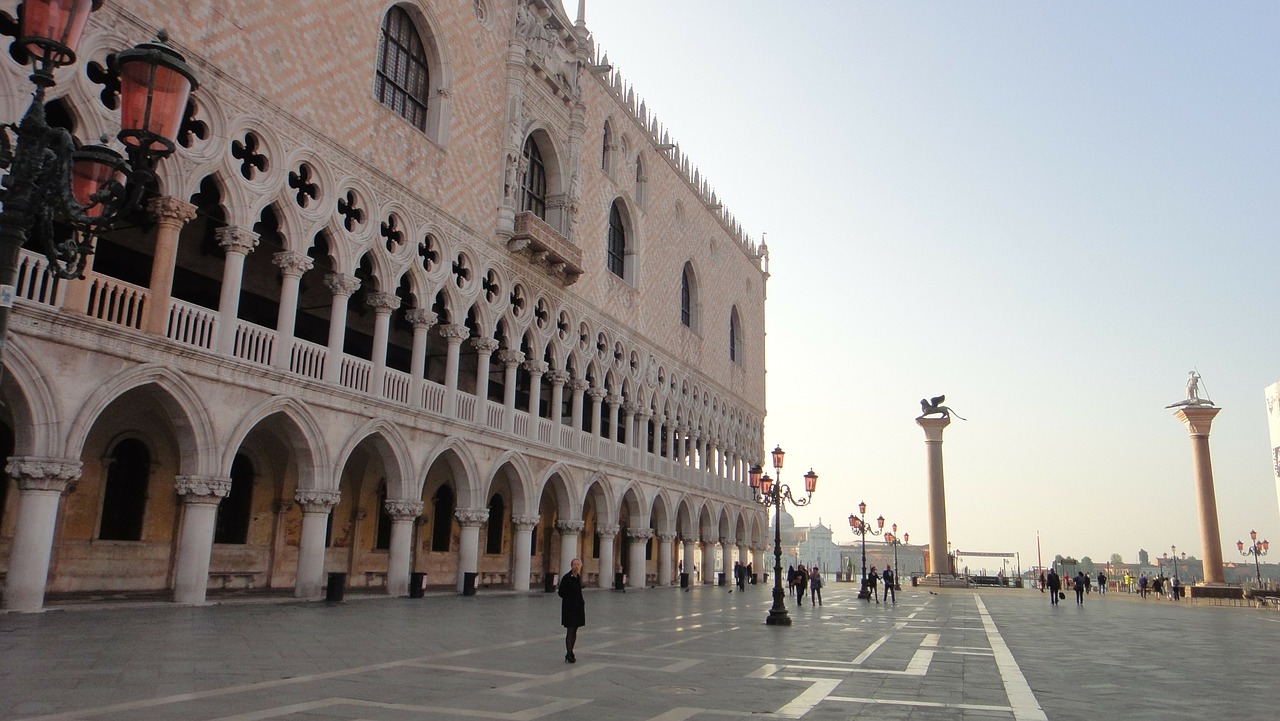
Venice in July - Here's All You Need To Know
Great advice on how to avoid the crowds if you are visiting Venice in July and some wonderful ideas on things to do.
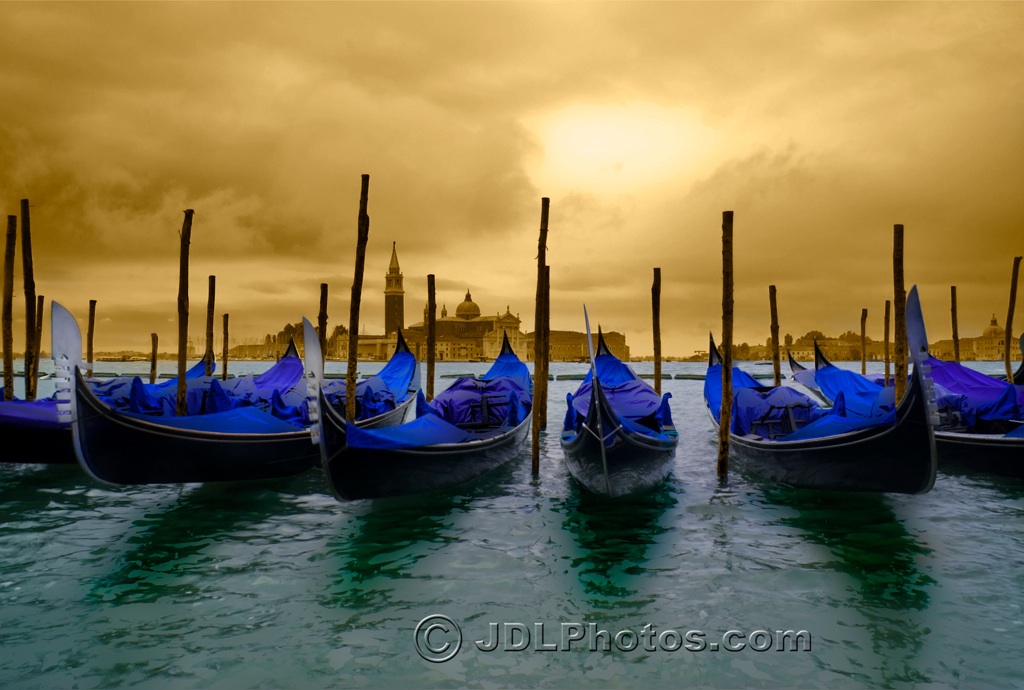
THE Italian Bucket List - Get This Now!
The Essential Italian Bucket List - 11 things you have to do before you die. Number two on the list is the one I love most.
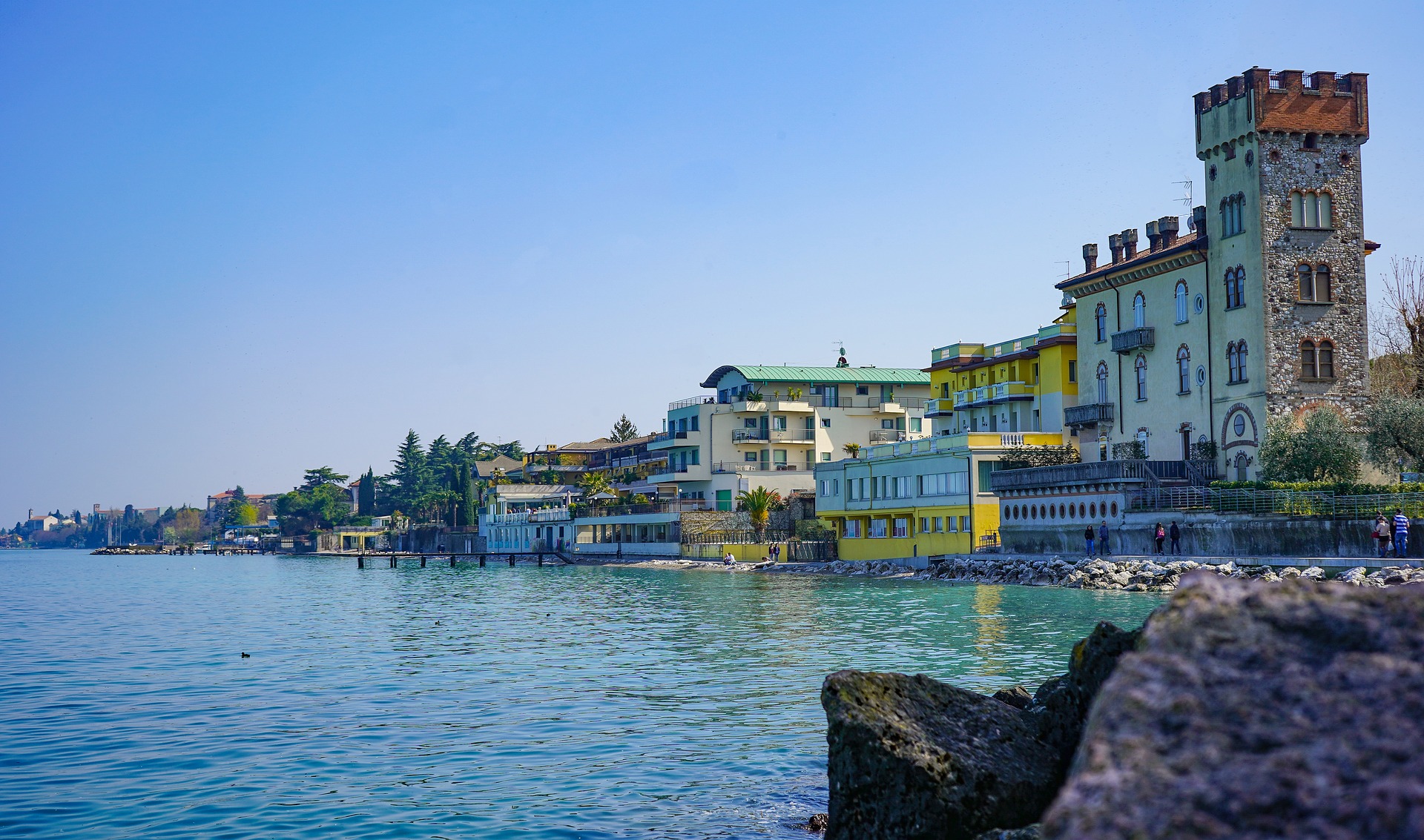
Where In Italy Do You Belong?
Where In Italy do you belong? Take this short quiz to find the answer! Then start planning your next vacation or big move.
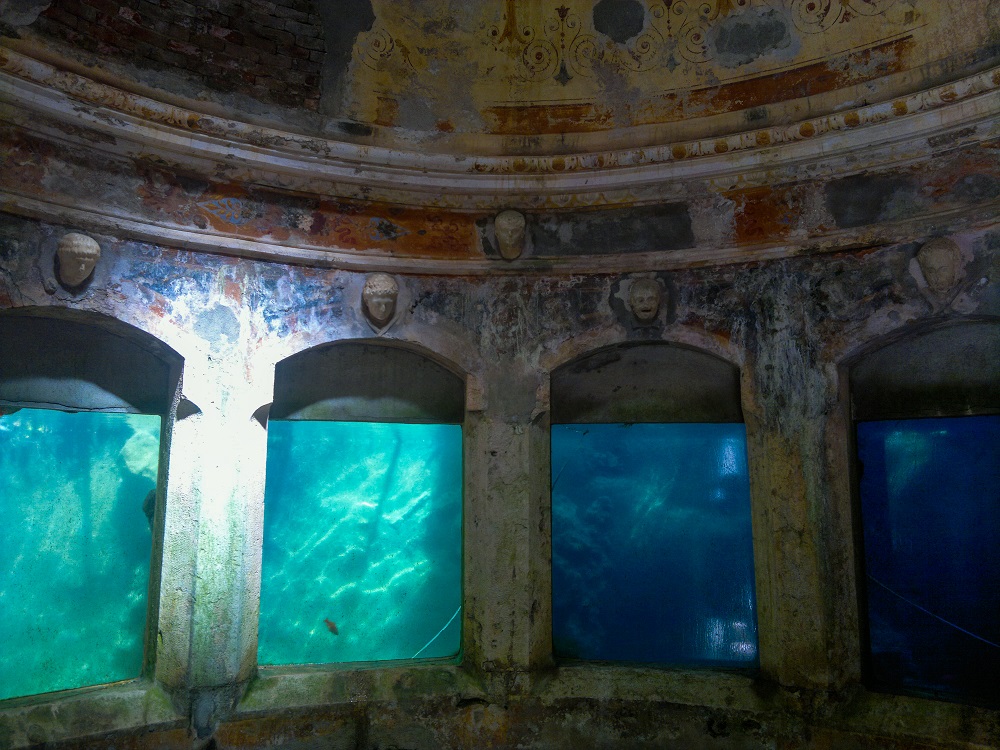
Santorso and the Butterfly Park?
Young children may get bored on a continual diet of history and museums in Italy. Santorso is the answer...
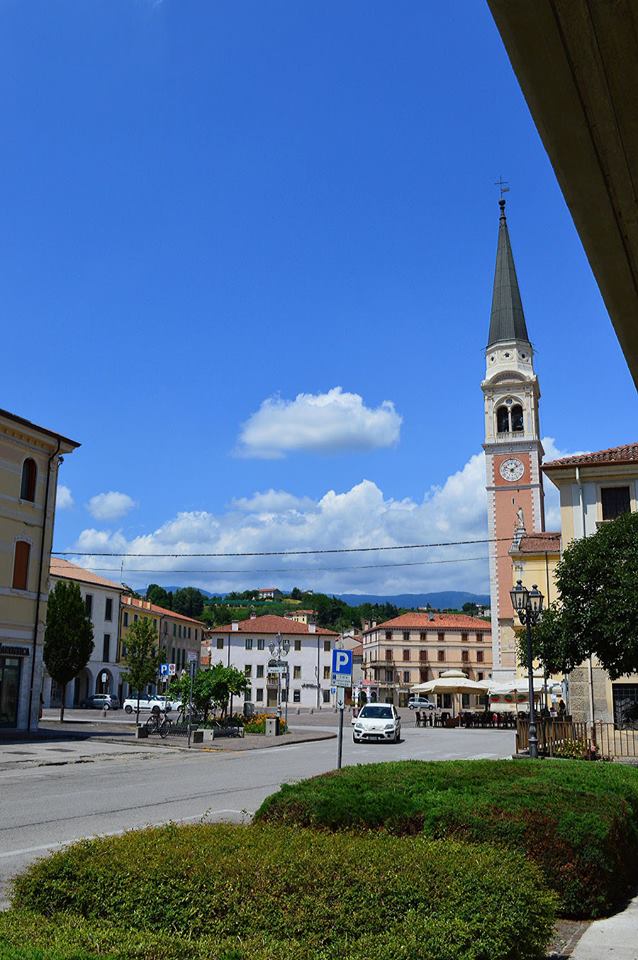
Breganze and Thiene
Ever thought of starting a new life in Italy? Well, the two little towns of Breganze and Thiene are worth considering, both are great places to live or to visit
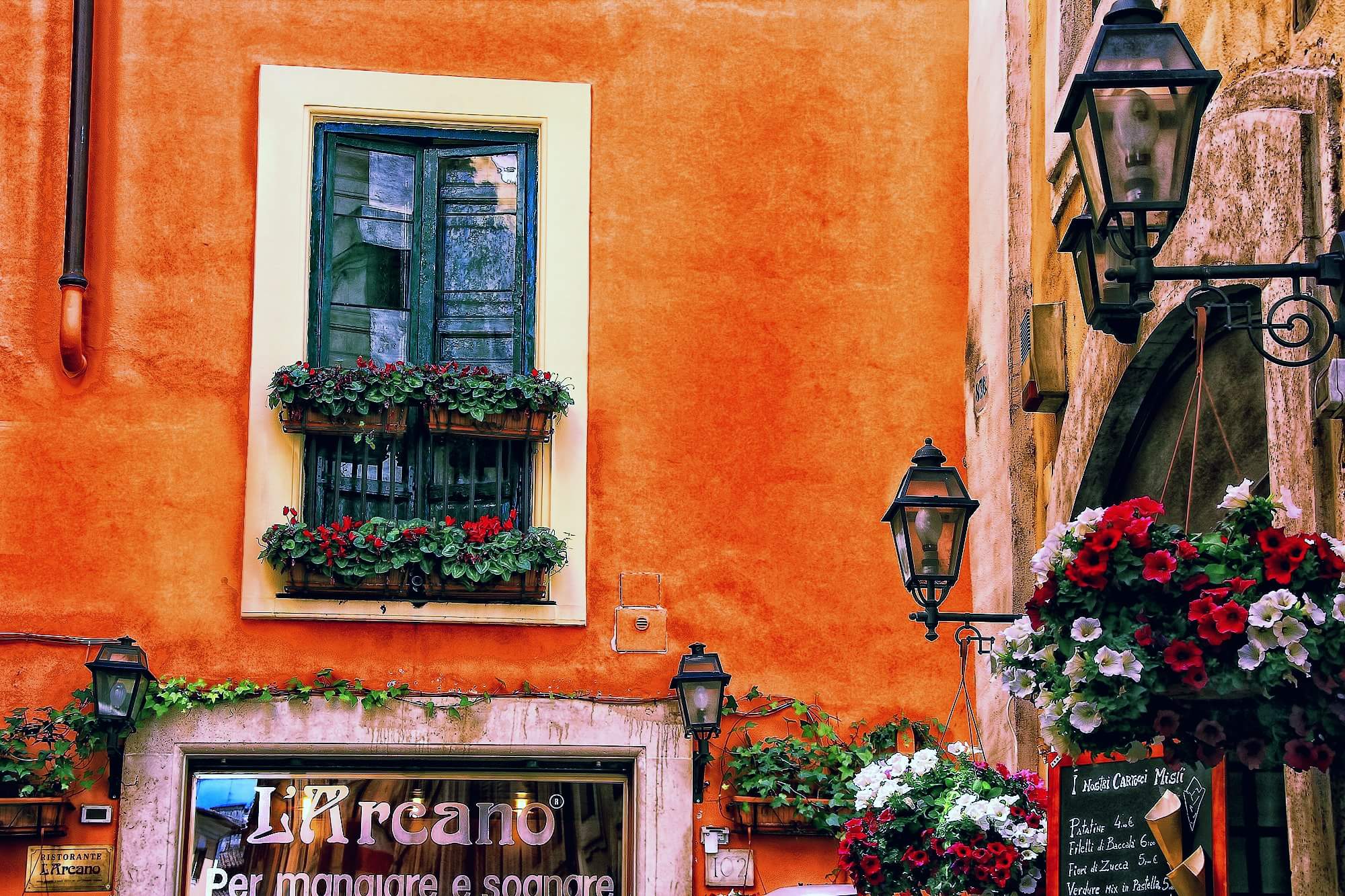
What makes Italy Special and Unique?
Discovered, 20 things which make Italy special. Be it a tiny village of cobbled lanes or dinner in a medieval town you will find the best of Italy here...
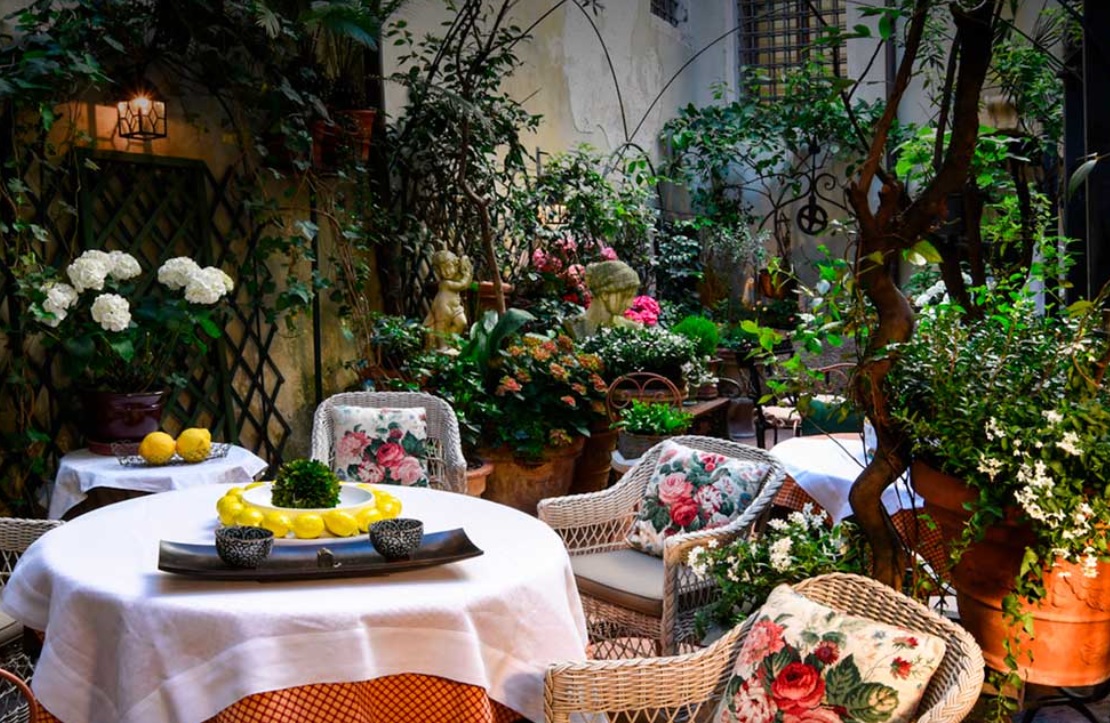
The Best Veneto Hotels - Personally Selected by Maria
From Verona to Venice and beyond I have selected the best Veneto hotels and bed and breakfasts. My family has lived here for generations and these hotels are those I can recommend with confidence....
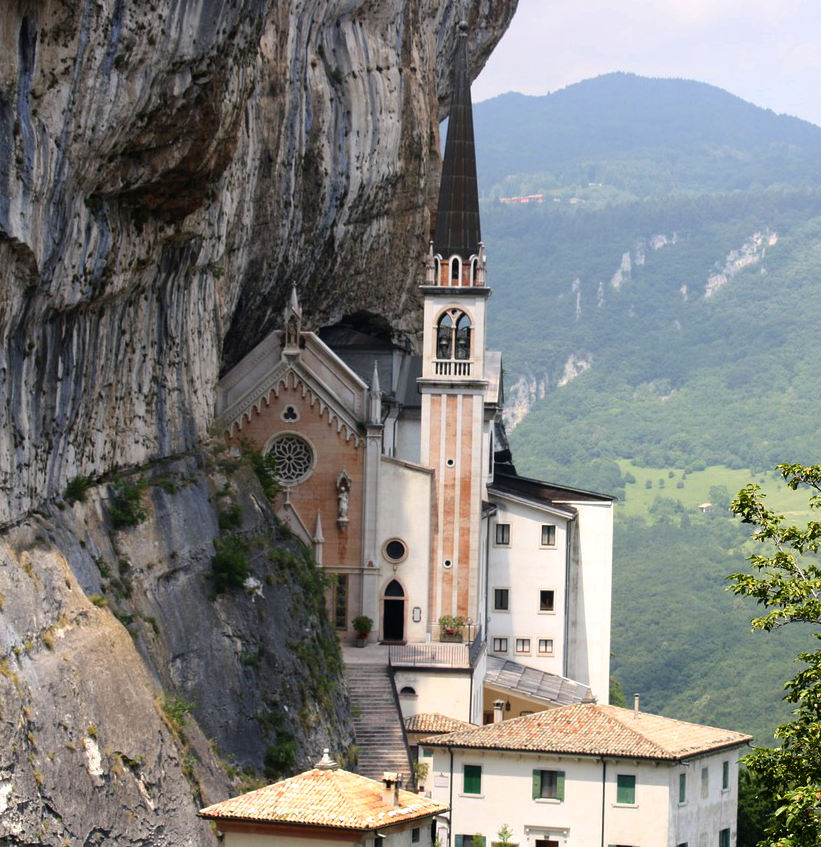
You will never forget Madonna della Corona
Perched on ancient cliffs is one of the Veneto's and indeed Italy's most impressive sights. This is the sixteenth century Madonna della Corona.
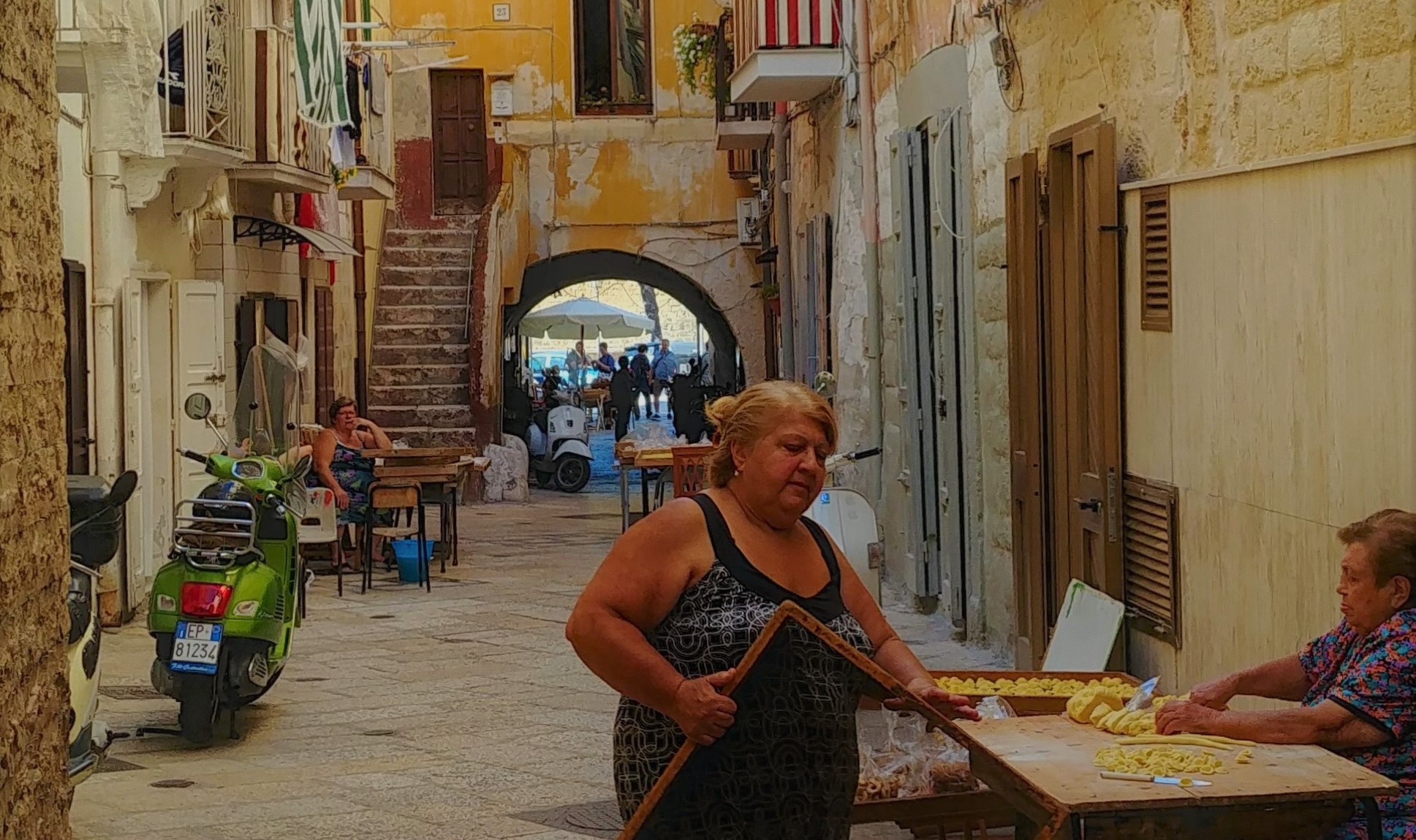
Things to Do in Bari & Reasons to Love Bari
Bari is the heart and soul of Puglia is to be found. Bari is real, Bari is vibrant and Bari is enchanting. Watch out for flying wooden spoons though!
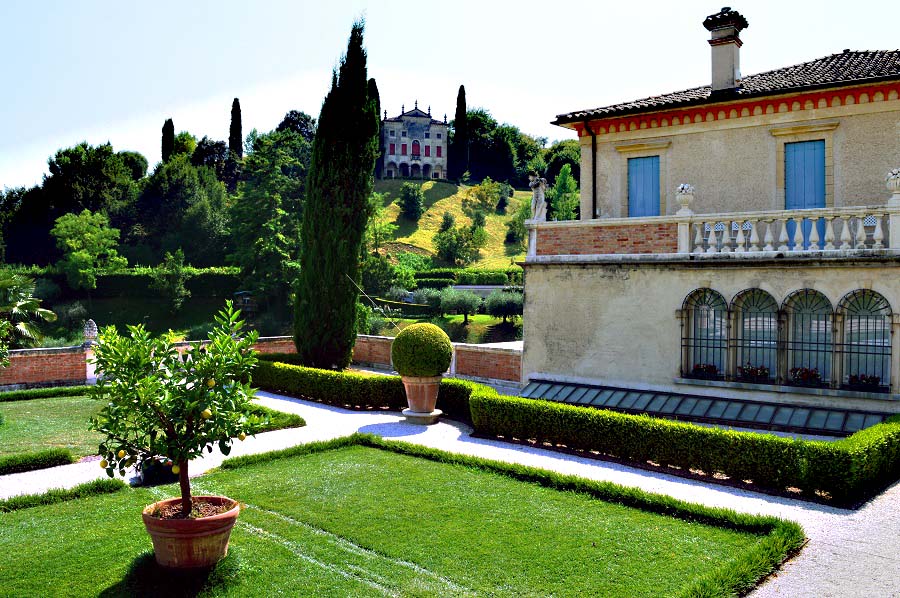
Asolo Italy - City of a Hundred Horizons
Near Venice you will find one of the Veneto's best kept secrets, the village of Asolo, known as the "city of a hundred horizons."
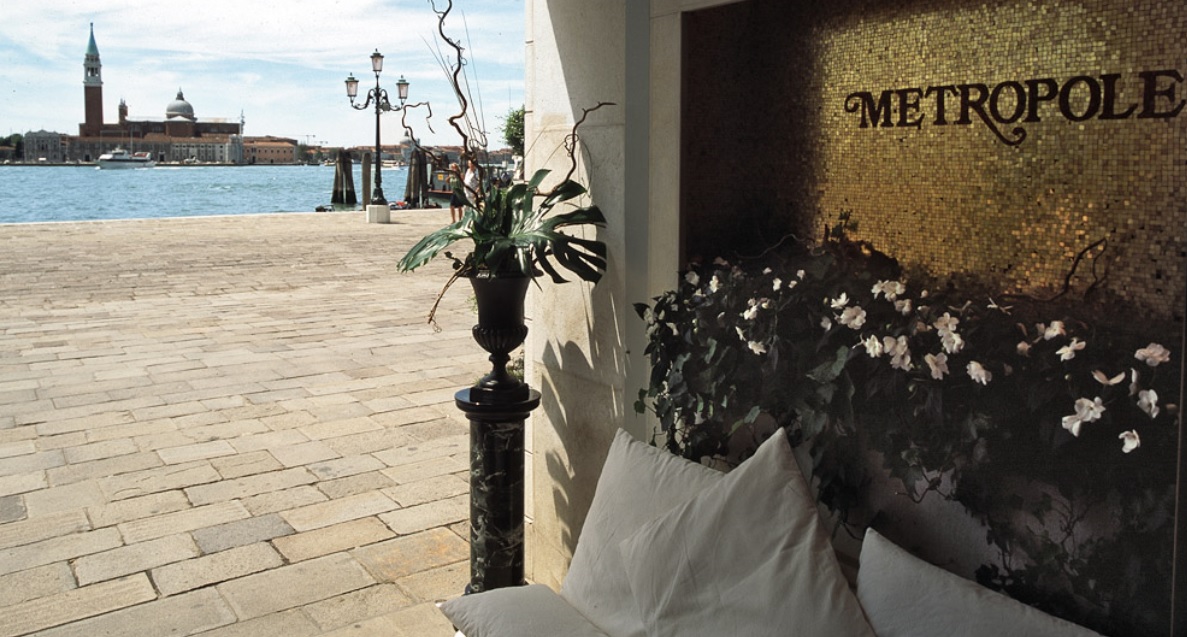
The Metropole Hotel in Venice - what you need to know before you go
The Metropole Hotel in Venice has a perfect location and it is billed as one of the most romantic hotels in Venice. Is this really the case?
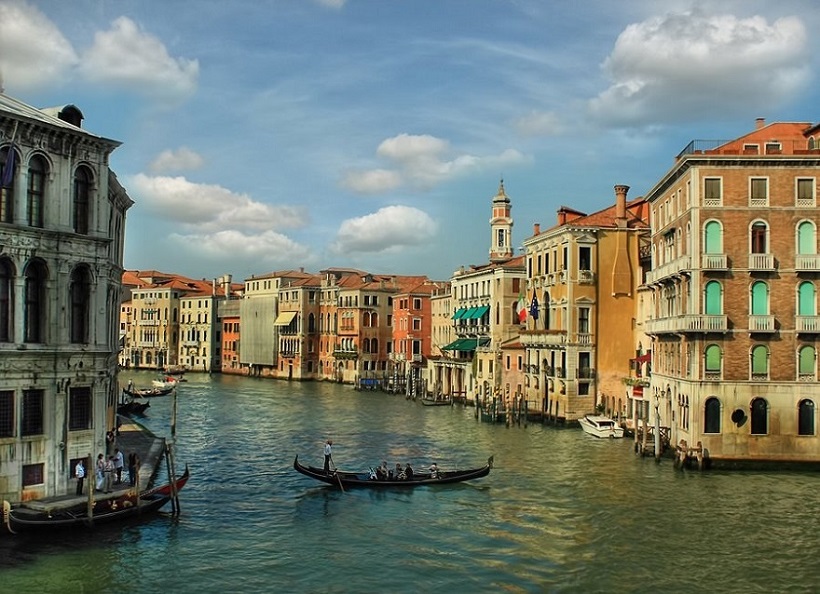
Photographs of Venice, the Veneto and Italy
These are some of the loveliest photographs of Venice and Italy that I have ever seen. Absolutely stunning is the only way to describe them...enjoy!
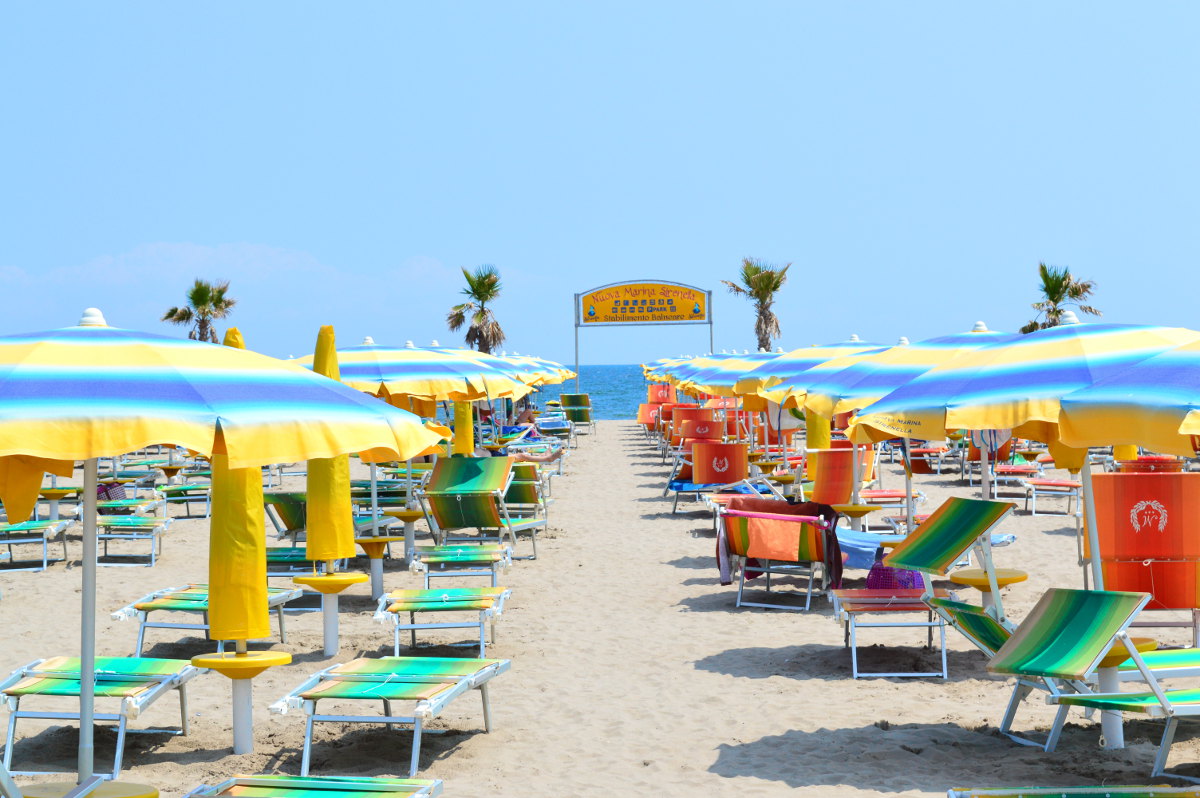
The Venice Italy Beach Guide
Come summer I can only take so much history before I need a beach. That's what the Venice Italy Beach Guide is about. Discovering the best beaches near Venice.
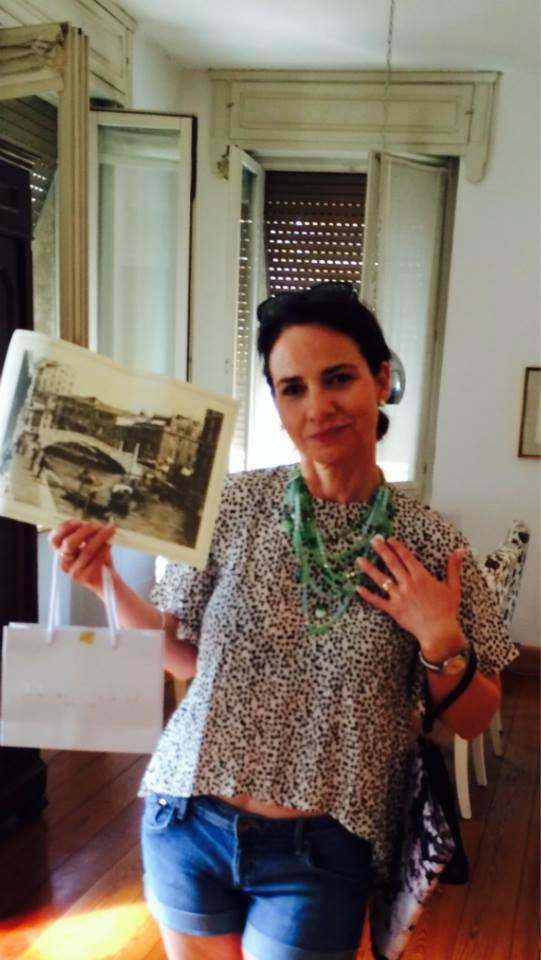
The Wonderful Story of a Day in Venice
Arriving in the early morning we spent the entire day in Venice. It didn’t take us long to get lost in Venice’s many twist and turns...
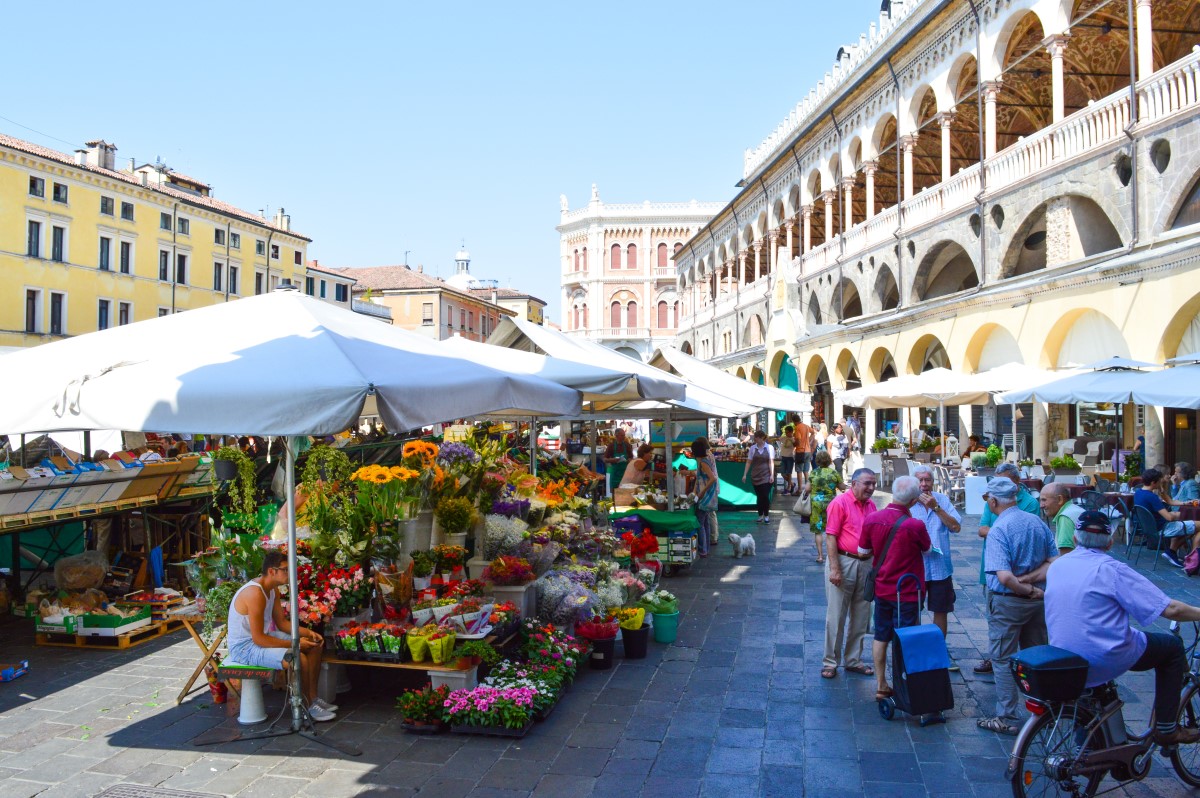
Padua Italy - A Home for the Heart
Padua Italy, known as Padova in Italian, has to be one of the loveliest of all Italian cities.
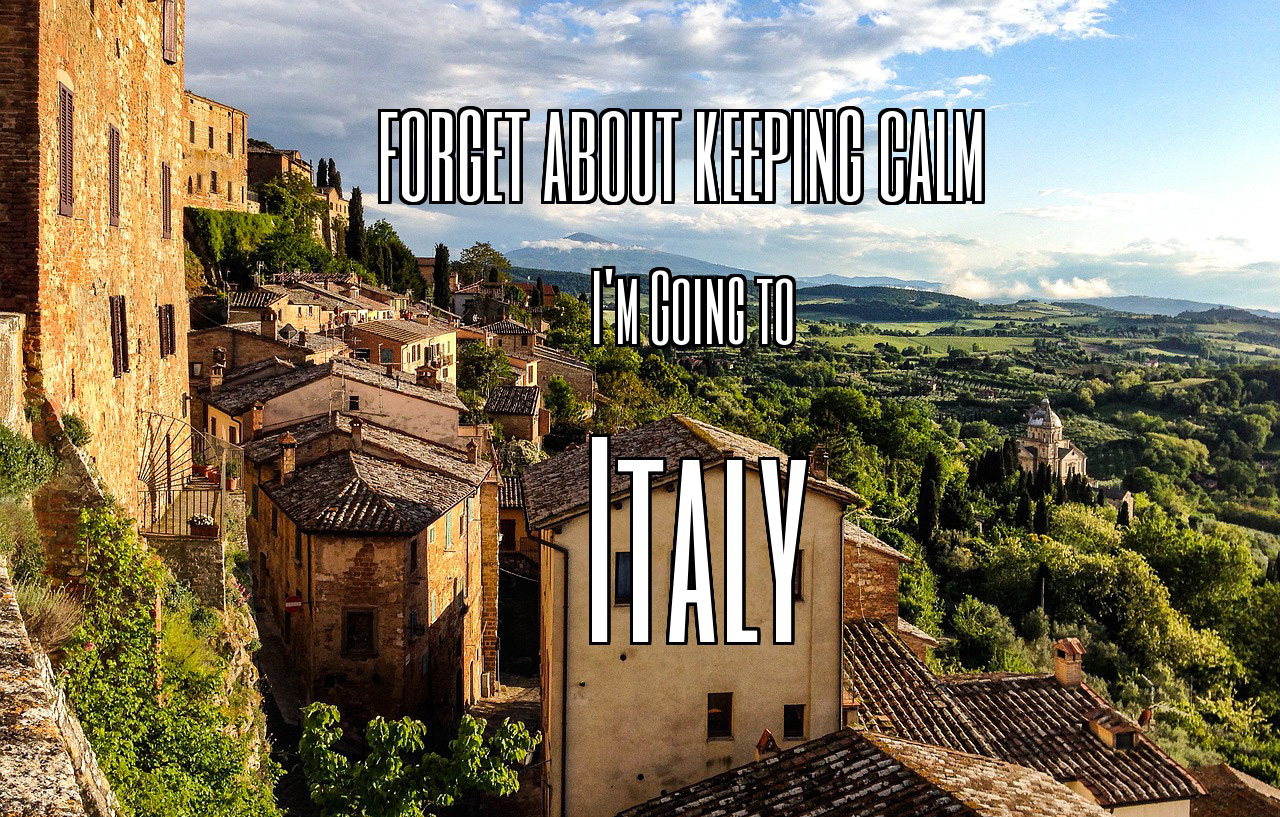
A Guide to Buying Property in Italy - Updated for 2024
We bought our first home in Italy after 5 years of living there. You definitely don't need to wait that long. Our guide to buying property in Italy is ...

The 5 Best Cities in Italy
These are the 5 Best Cities in Italy. Cities of ancient mystery where medieval history and vibrant avenues of excited Armani clad Italians meet.
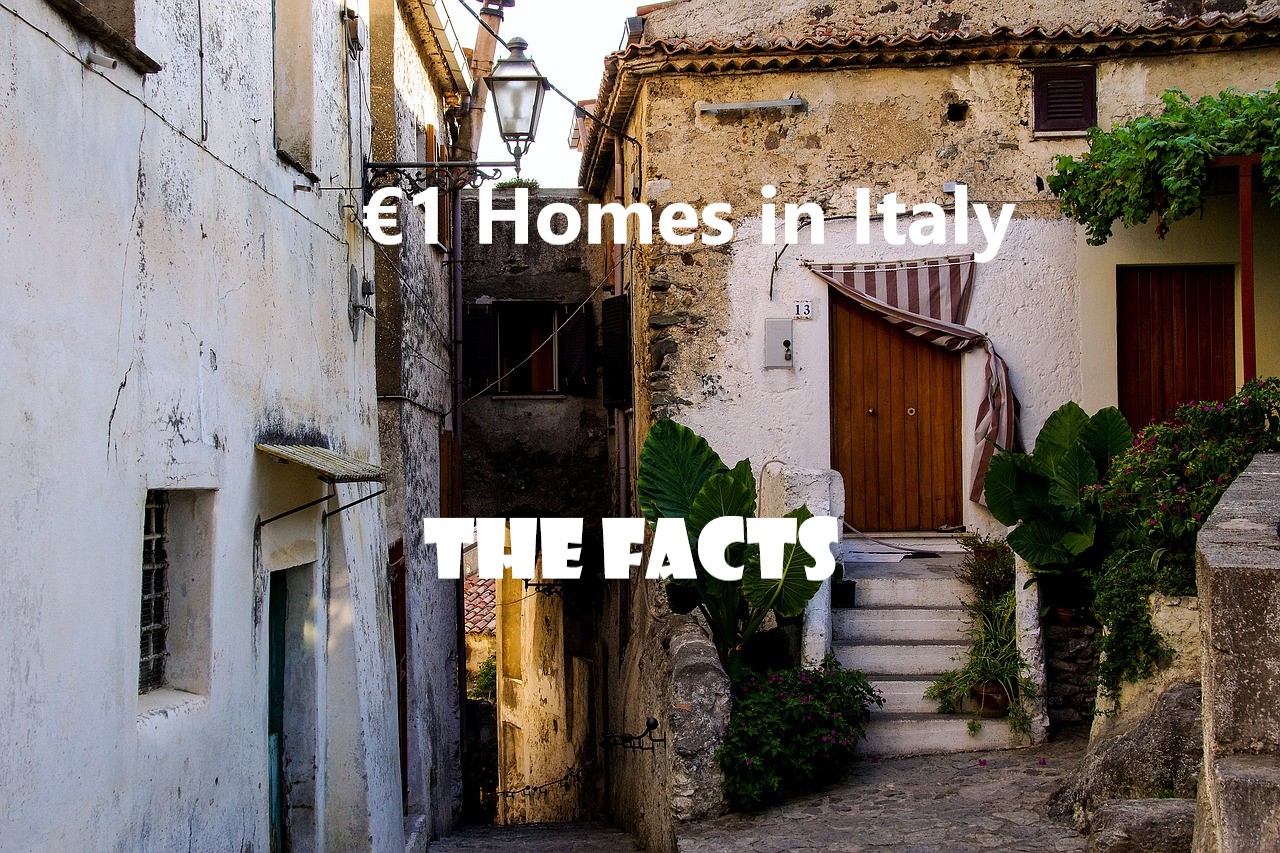
1 Euro Houses in Italy in 2024
Have you read about the 1 Euro houses in Italy? Why is Italy selling houses for 1 Euro? Would you like to buy one? We have everything you need to know!
More Travel Tips:
- Book your tickets to museums and other attractions in advance on Tiqets.com
- Book your accommodation . Booking.com and Agoda help you to book accommodation in advance
- Book your excursions. Wherever you go, make the most of your time! Excursions with professional guides will help you do this - choose a location and the best option for yourself on Viator or Getyourguide
- Book your car. At least a month before is best. Use Discover Car Hire.
- Cash Back on Flights: Great deals & money back with WayAway
- Get peace of mind when traveling. Get insured with VisitorsCoverage.com
New! Comments
SUBSCRIBE TO OUR FREE EZINE
Italy Mamma Mia

Support Us Via our Sponsors I earn a small % on purchases. it costs you no more.
For full sponsor list visit our privacy policy
As an Amazon Associate I earn from qualifying purchases.

Privacy Policy and Disclaimer
Our review of Solo Build It!

Coastal towns near Venice: 8 unmissable destinations
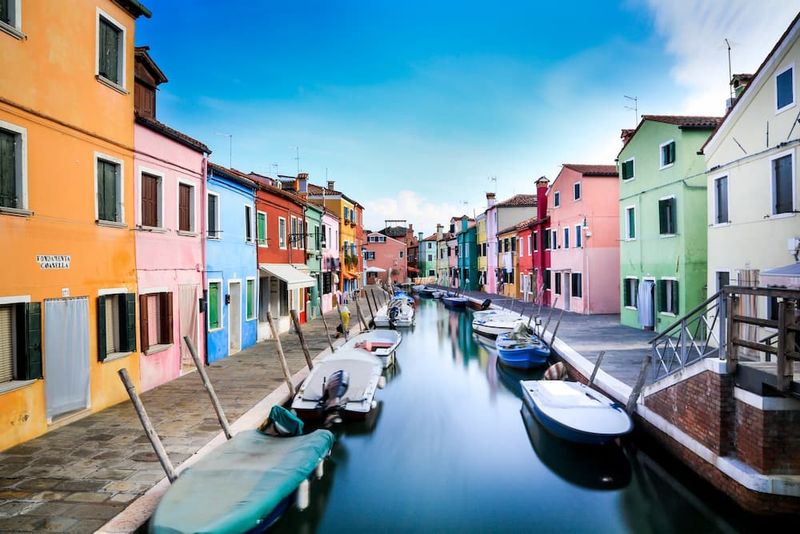
Welcome to our insider's guide to exploring the vibrant coastal towns near Venice, Italy . Yes, you heard it right – there's more to this Venetian adventure than just St. Mark's Square.
So grab your sun hat and sunglasses as we embark on a thrilling day trip to uncover the colorful and picturesque towns that lie just a stone's throw away from the Floating City.
Discovering the Coastal towns near Venice
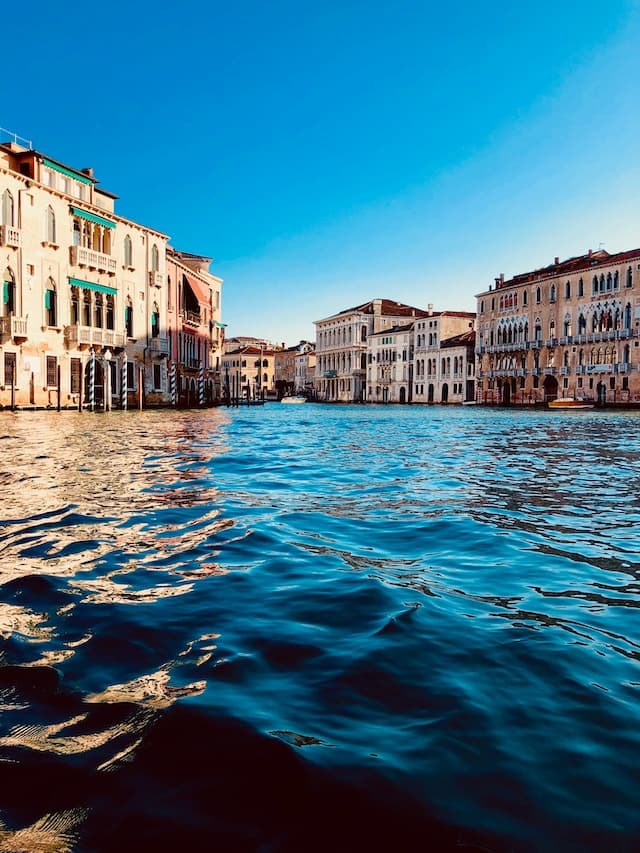
Are you ready for a seaside escapade from Venice's bustling streets?
Today, we're spilling the beans on the most delightful coastal towns that await your exploration (since we have already made you tour across the most beautiful lidos ).
If you are looking for a change of scenery from Venice's labyrinthine alleys, we've got you covered with our hand-picked coastal towns that promise a delightful retreat.
From ancient villages to lively beach towns, these destinations offer a captivating blend of history, culture, and natural beauty – all within easy reach of Venice.
Hop aboard as we reveal the perfect ideas for your adventure along the Adriatic coast !
The Coastal Towns Awaiting Your Arrival
1. chioggia - the little venice of the south.
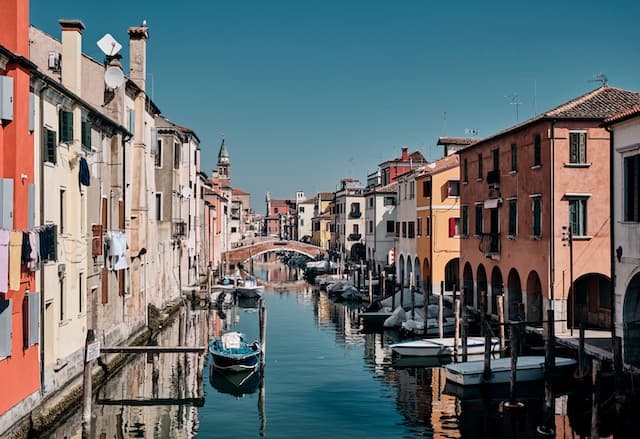
Known as " Little Venice ", Chioggia is a true gem situated on a small island just south of Venice's Lido.
This picturesque fishing town charms visitors with its colorful houses, narrow streets, and bustling fish market. Stroll along the lively promenades, admire the striking Chioggia Cathedral, and savor fresh seafood at local trattorias.
To reach Chioggia, catch a boat from Venice's San Zaccaria or Fusina and enjoy a scenic journey through the Venetian Lagoon.
To have more ideas about the scenarios you can expect from Chioggia, you can have a look at this Italian web serie!
2. Caorle - Where History Meets the Sea
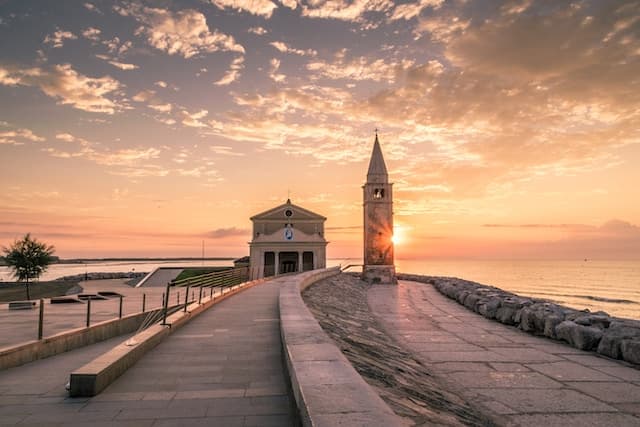
Prepare to be mesmerized by the timeless beauty of Caorle .
This charming coastal town boasts a historic center with winding streets, ancient Roman ruins , and a stunning church overlooking the Adriatic Sea .
Wander through the atmospheric alleys, indulge in delicious gelato, and unwind on the golden sandy beaches .
To get to Caorle, take a direct bus or drive along the coastal road – a picturesque journey in itself!
3. Jesolo - The Lively Seaside Retreat
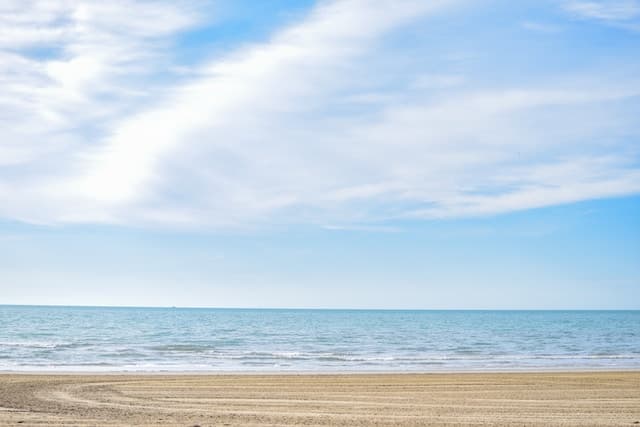
For those seeking a vibrant beach town near Venice, Jesolo is the place to be.
This bustling resort destination offers a lively atmosphere , with endless entertainment options , water parks , and a buzzing nightlife .
Whether you're a family looking for fun-filled activities or a group of friends seeking beachside revelry, Jesolo has something for everyone.
Reach Lido di Jesolo with ease by hopping on a direct bus from Venice's Piazzale Roma.
4. Grado - A Serene Oasis on the Adriatic coast
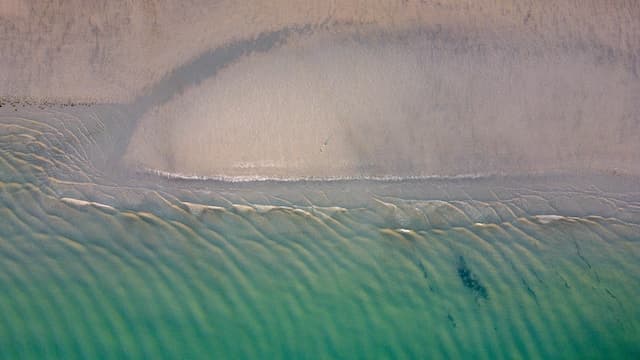
Prepare to be enchanted by the tranquil charm of Grado , a hidden gem nestled on a natural island between the sea and the lagoon.
With its peaceful atmosphere and sandy beaches , Grado offers a haven of relaxation for those seeking a break from the bustle of Venice.
Explore the picturesque old town , marvel at the Basilica of Sant'Eufemia, and take leisurely strolls along the seafront.
To get to Grado, take a direct bus or drive along the scenic coast from Venice.
5. Trieste - Where Cultures Collide

Embark on a captivating journey to Trieste , a city that embraces the fusion of Italian, Austrian, and Slovenian cultures .
Located on the northeastern edge of Italy, Trieste boasts a splendid mix of architectural styles, from Roman ruins to grandiose Habsburg-era buildings . Wander through the charming old town, sip a coffee at historic cafes, and gaze at the mesmerizing Miramare Castle overlooking the Adriatic.
To reach Trieste, hop on a direct train from Venice's Santa Lucia station and savor the scenic ride along the coast.
6. Rosolina Mare - Seaside Bliss and Nature Retreat
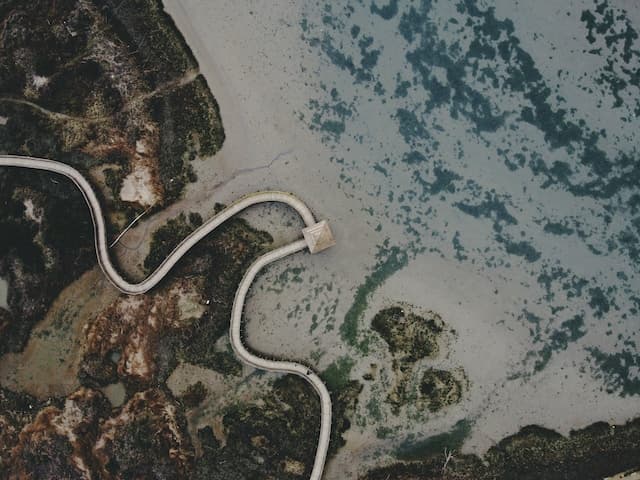
Nestled along the coastline of the Po Delta Natural Park , Rosolina Mare is a coastal gem offering a perfect blend of beachside bliss and unspoiled nature .
Here, you can bask in the sun on the pristine sandy beaches , take a refreshing dip in the azure waters, and indulge in the tranquility of the surrounding pine forests .
For a taste of local culture, explore the town's vibrant promenade and discover delightful seafood restaurants serving up the freshest catches.
To get to Rosolina Mare, take a direct bus or drive through the lush landscapes from Venice.
8. Cervia and Cesenatico - A Tale of Salt and Maritime Heritage
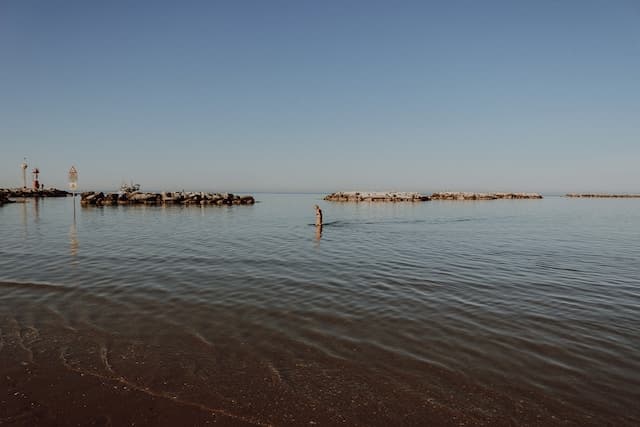
Dive into the captivating history of Cervia , a town steeped in the ancient tradition of salt harvesting .
Walk along the historic salt pans and witness the picturesque "Cervia Camillone," unique wooden towers used for monitoring the evaporation process.
From Cervia, continue your journey to Cesenatico , a charming fishing village with an enchanting canal port designed by the great Leonardo da Vinci himself.
Explore the Maritime Museum and immerse yourself in the town's seafaring heritage.
To visit Cervia and Cesenatico, take a train from Venice to Cervia, and then a short bus or taxi ride will lead you to Cesenatico's maritime wonders. You can of course go by car!
Dive Deeper into Venice's Coastal Charms
As our sun-kissed adventure comes to an end, we hope you've caught a glimpse of the delightful coastal towns that lie just a skip and a hop away from Venice.
These hidden gems offer a kaleidoscope of experiences , from history-steeped streets to sun-drenched beaches, all waiting to be explored.
But remember, dear wanderers, this is just the tip of the iceberg when it comes to experiencing the true essence of Venice.
The Floating City has so much more to offer. So, as you return to Venice, be prepared to uncover even more secrets , as we're here to guide you through every twist and turn of your Venetian escapade.
So keep your compass pointed towards adventure, and let your heart guide you through the magic that awaits in the City of Canals.
Until next time, fellow explorers – ciao for now!
Popular tags

9 easy day trips from Venice by train you can’t miss
If you're heading to Venice and have a few extra days on hand, plan some sightseeing adventures with this list of easy day trips.
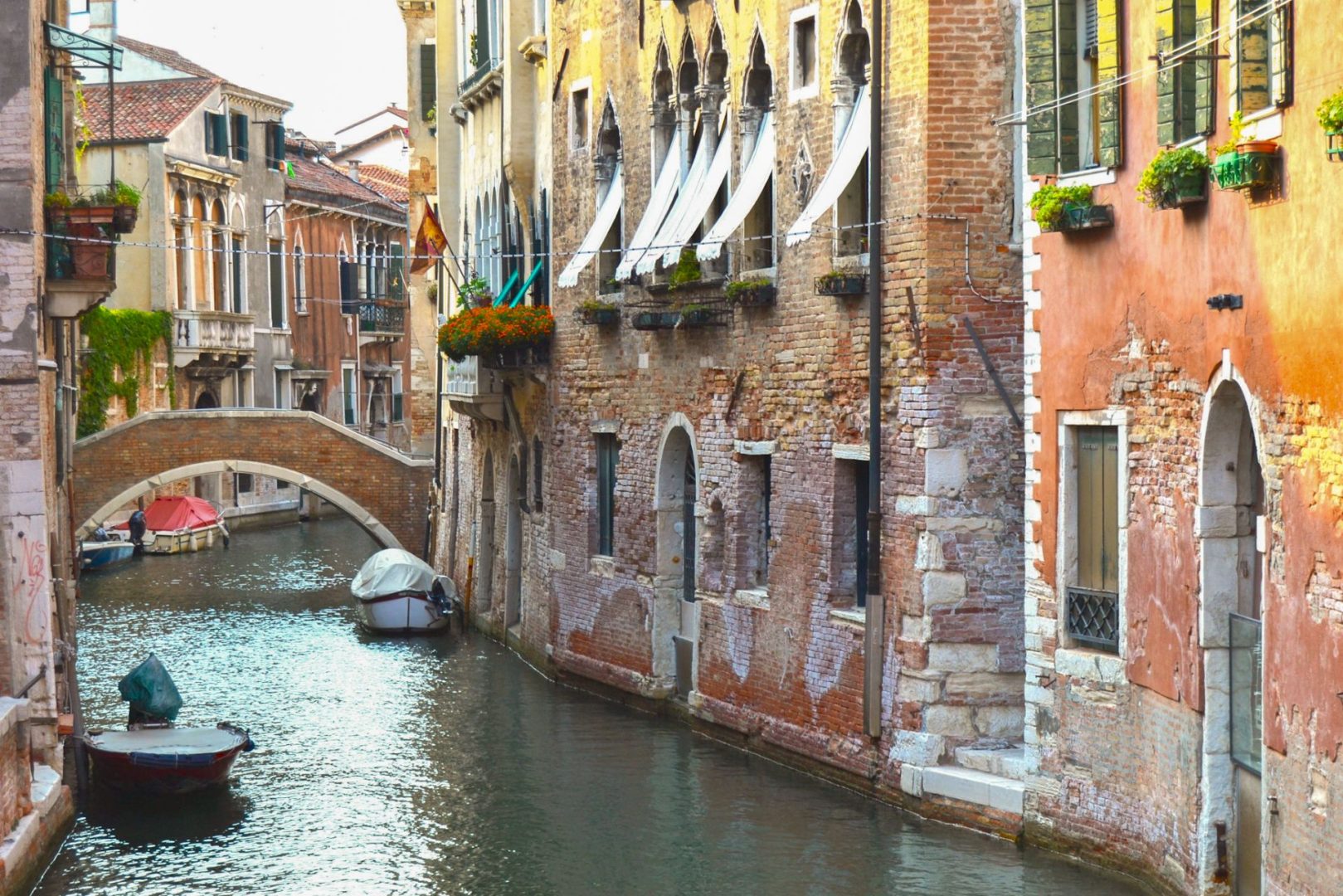
Table of Contents
Ah, Venice! No matter how much time I spend in this beautiful city, it’s never enough. But hey, I get it, some of you might want to explore further afield once you’ve seen all the top sights. After all, Italy has such a rich and diverse heritage that once you’re here you want to cover as many sights as possible, right?
There are some great places near Venice that are well worth a visit, each a treasure trove of unique experiences. From the artistic wonders of Padova to the gastronomic delights of Bologna, you’ll be spoilt for choice.
Obviously, one day won’t be enough to see everything, but you’ll be sure to leave with a ton of travel memories and plenty of reasons to come back soon.
This article only features destinations within a two-hour train ride from Venice (except for the last one). After all, you don’t want to spend most of your day trip traveling, right?
At the end of the page, you’ll find a link to my guide to train travel in Italy, which will help you navigate the Italian railway system. This way, you can easily book train tickets for your sightseeing adventures.
So, these are my suggestions for some great day trips from Venice.
Artistic marvels in Padua
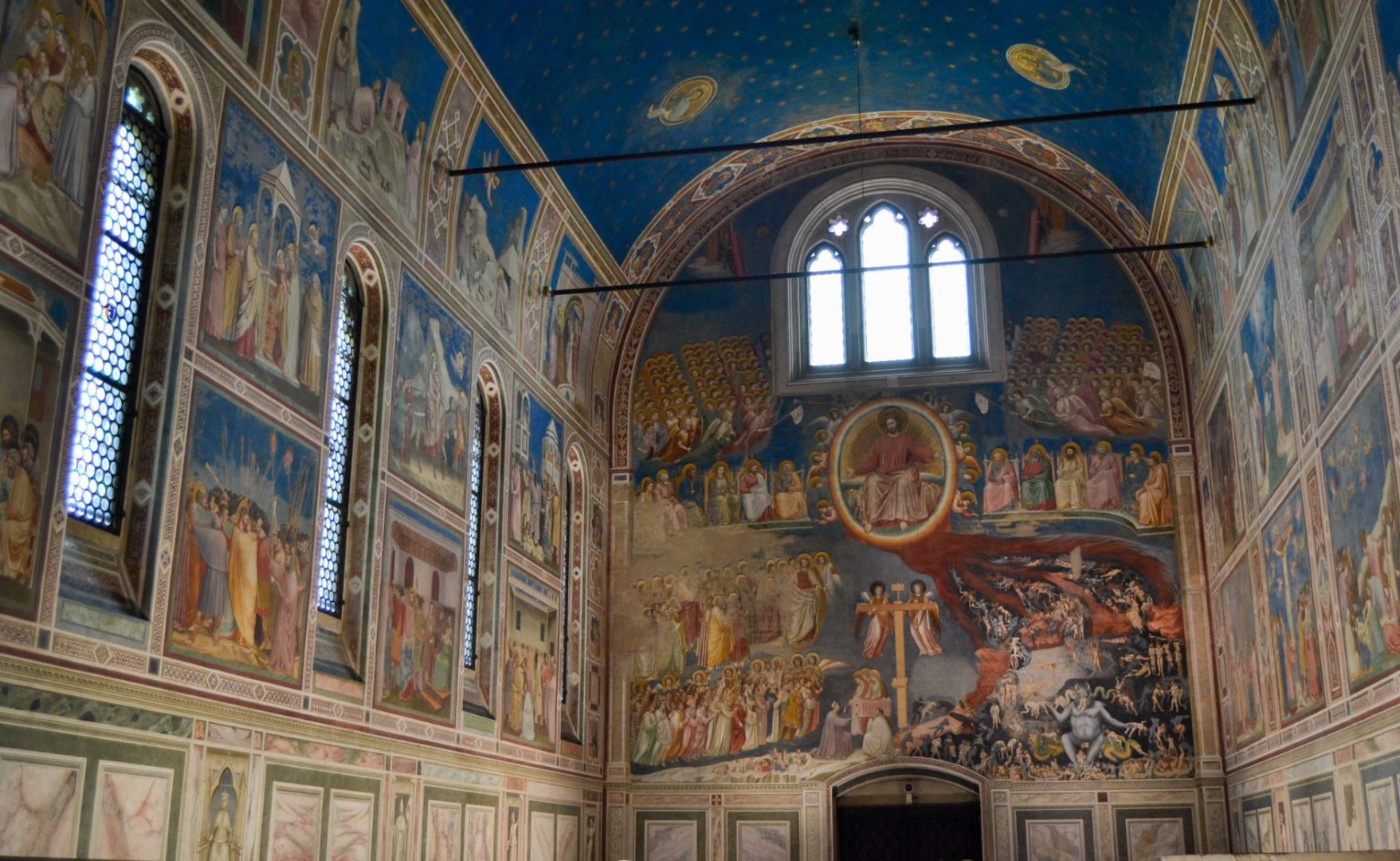
Padua is my top choice when it comes to side trips from Venice. It’s super quick to reach and offers many beautiful things to explore.
The main attraction is the Scrovegni Chapel, where Giotto painted stunning frescoes listed among the most important works of Western art.
You can see one of the oldest universities in Europe, whose faculty once included Galileo Galilei. This is also where a woman got an academic degree for the first time ever.
Other highlights include the world’s very first botanical garden dating from 1545, and Prato della Valle, one of the biggest squares in Europe.
Padova is also a deeply religious city and its Basilica of Saint Anthony is a major pilgrimage site in Italy. Don’t miss a visit for the stunning architecture and pay homage to the saint’s relics.
How to get from Venice to Padova by train: it’s an easy half-hour train ride using either Trenitalia (opt for Regionale Veloce or Frecciarossa trains) or Italo.
Val’s tip: Caffé Pedrocchi may be the most famous historic venue in Padua but there are many other spots to explore: try gelato at Gelato da Ruggero and stock up on food souvenirs at Drogheria ai Due Catini d’Oro.
Read more: 1 day itinerary in Padua
Verona between romance and history
If chasing your inner Romeo and Juliet fantasies has always been your secret dream, then you should visit Verona.
Here, you can see all the iconic sites associated with the story of the two Shakespearian lovers, including the famous balcony and the tomb of Juliet, hidden in a 13th-century convent.
Verona offers also a wealth of fascinating attractions to explore, all reflecting the city’s vibrant history. For instance, Castelvecchio is the city’s medieval heart, featuring a museum and panoramic ramparts, while the Scaligeri Tombs are considered one of the finest examples of Gothic architecture in northern Italy.
A must-see in Verona is the Arena, built before Rome’s Colosseum and now the best-preserved Roman amphitheater in the world. Today, it serves as a fascinating open-air opera house.
For a taste of Renaissance landscaping, be sure to visit the Giardino dei Giusti, a beautiful garden that first opened its doors to the public in the 16th century.
How to get from Venice to Verona by train: it takes about 1 hour and 15 minutes to get from Venice to Verona. You can use either Trenitalia (Frecciarossa or Regionale Veloce) and Italo trains.
Val’s tip: one of my favorite things to do in Verona is visiting Juliet’s Club, where I can be one of Juliet’s secretaries for a few hours! I wrote about it here .
Read more: What to see in Verona in 2 days
Treviso, the Little Venice
Treviso is a charming town often overshadowed by more renowned cities in Veneto, yet it boasts a wealth of attractions. It’s an excellent choice if you’re seeking a change of pace after the bustling crowds of Venice.
Within its historic walled center, you’ll find Renaissance palaces, bridges, and canals that earned Treviso the nickname “Little Venice”.
Start your exploration from Piazza dei Signori, the main square full of cute shops, cafés and historic buildings. Among them is the imposing Palazzo dei Trecento, where communal assemblies took place back in the day.
Key highlights of your visit include a multi-domed Cathedral featuring a beautiful Annunciation by Titian and the Church of San Nicolò, where you can see the first pair of spectacles ever depicted in a work of art. And don’t miss the Treviso fish market, charmingly located on an islet in the town center.
How to get from Venice to Treviso by train: the train journey is about 30 minutes with either Trenitalia (Regionale Veloce or Regionale) or Italo.
Val’s tip: if there’s one in place in Italy where you should feast on Tiramisù and glasses of chilled Prosecco, that’s Treviso. This town is the birthplace of the famous Italian dessert (the restaurant that invented it is still there – Le Beccherie ), while Prosecco is produced in the hills just outside town.
Vicenza and its architectural treasures
Vicenza’s primary appeal lies undoubtedly in its architectural wonders. This is the city where the 16th-century architect Andrea Palladio – the guy who influenced architectural standards worldwide for the past 500 years – crafted exquisite villas and palaces, earning Vicenza a coveted spot on the UNESCO World Heritage list.
Thanks to Palladio’s influential work, Vicenza stands as an extraordinary open-air museum. The most impressive sites include La Rotonda, whose design inspired the White House, and the Olympic Theatre, where you can see the world’s oldest surviving stage set still in use.
The town is also renowned for its jewelry-making tradition, so make sure to include also a visit to the Jewellery Museum, the first of its kind in Italy.
How to get from Venice to Vicenza by train : it’s a 45-minute journey with either Trenitalia (Frecciarossa or Regionale Veloce trains) or Italo.
Val’s tip: if your day trip to Vicenza falls between April and September, be sure to enjoy an aperitivo at Terrazza della Basilica , a fabulous panoramic café at the top of the Basilica Palladiana!
Bassano del Grappa and its historic distilleries
For a change of scenery, consider heading to Bassano del Grappa, a charming little town nestled in the Venetian Pre-Alps.
Palladio also left his mark here, specifically on the town’s most iconic sight – the Alpini Bridge. This wooden covered bridge spans the river Brenta and was reconstructed by the Renaissance architect in the 16th century after being destroyed multiple times.
Bassano is renowned for producing Italy’s strong alcoholic drink, grappa. Two excellent places to delve into the world of this famous Italian distillate are Grapperia Nardini, the country’s oldest distillery, and the Poli Grappa Museum.
Fans of grappa include Ernest Hemingway, who served as a voluntary driver for the American Red Cross here during World War I in 1918. This villa is now a museum dedicated to the writer.
How to get from Venice to Bassano del Grappa by train: the journey is about 1 hour and 15 minutes with the Regional trains provided by Trenitalia.
Val’s tip: don’t leave without trying a“Mezzo Mezzo”, the local aperitivo.
Brescia, the town with tho cathedrals
Often overshadowed by its bigger sister Milan, Brescia is a beautiful town in Lombardy that you can easily visit on a day trip from Venice.
Brescia and its province are home to 5 UNESCO World Heritage Sites, a testament to the town’s rich cultural heritage.
To begin with, Brescia boasts one of the largest archaeological sites in northern Italy. Trust me, as soon as you see the Roman Forum, you’ll think you’re in Rome.
More surprises await you at the stunning Santa Giulia museum complex, featuring a remarkable array of attractions spanning over 2,000 years of history. A highlight is the famous Cross of Desiderius decorated with 211 gemstones.
Brescia also boasts elegant historic squares with lots of lovely cafés, a splendid opera house, a large medieval castle, and two fabulous cathedrals, all of which make it an ideal day trip destination from Venice.
How to get from Venice to Brescia by train: the journey time is about 1 hour and 50 minutes with Trenitalia (Frecciarossa trains) and Italo.
Val’s tip: if you visit in June, you might see the Mille Miglia, the world’s most famous vintage car race. Crews come from all over the globe and the itinerary covers seven Italian regions, from Brescia to Rome and back.
Read more: A day trip to Brescia
Ferrara, the Renaissance gem
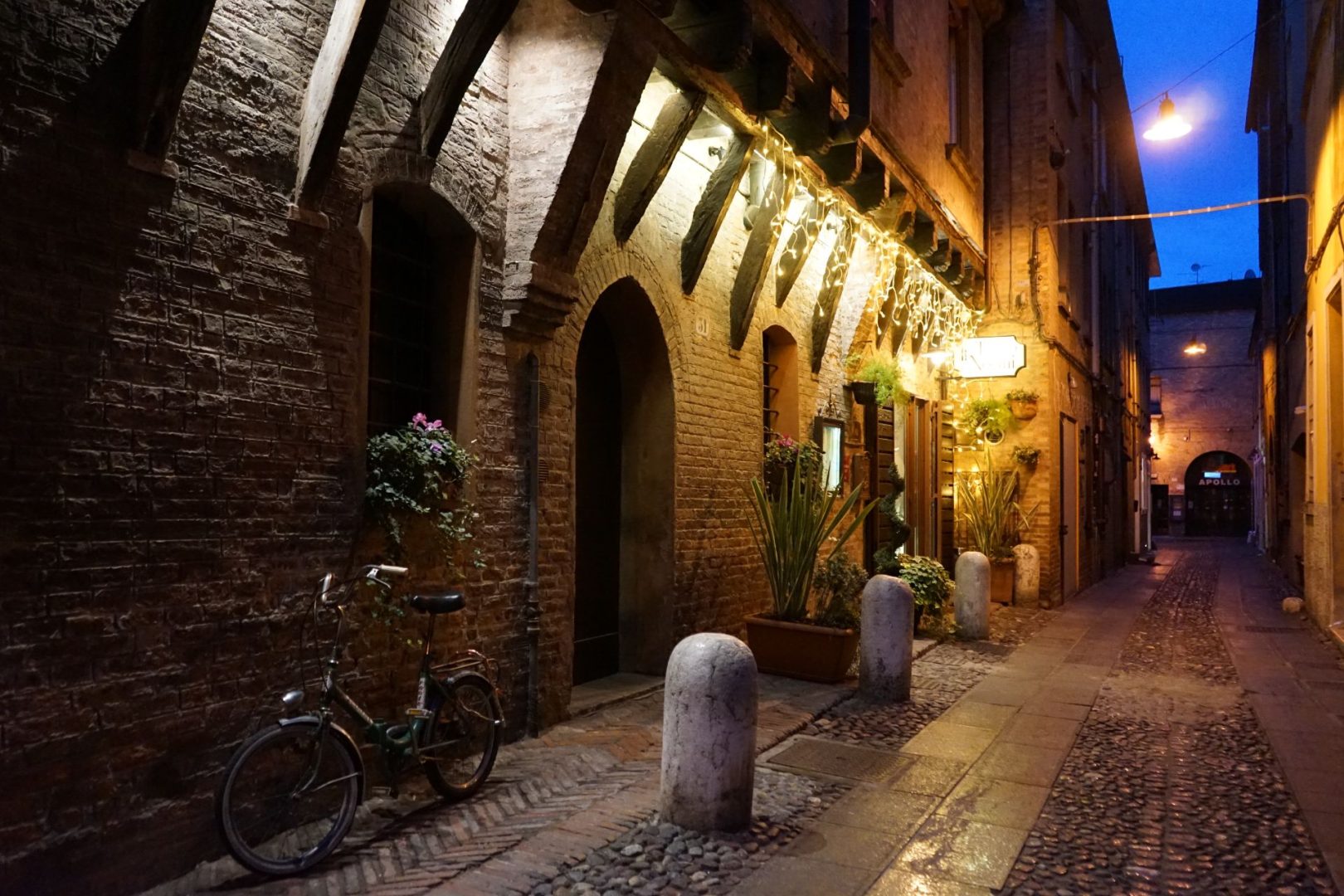
Your day trips from Venice could also take you to the Emilia Romagna region, more precisely to the charming town of Ferrara.
The history of this town is closely tied to the powerful Este family, who ruled it between the 13th and 15th centuries. They transformed Ferrara into a thriving cultural center that attracted artists such as Piero Della Francesco, Jacopo Bellini, and Andrea Mantegna, making sightseeing here particularly fascinating.
Its historic center is just adorable, surrounded by ancient defensive walls and filled with charming cafes and captivating streets like Via delle Volte and Corso Ercole I d’Este, considered Europe’s longest street without shops.
Notable attractions in Ferrara include Castello Estense (one of the few castles in Europe still surrounded by a water-filled moat), the superb Palazzo Diamanti, and the San Giorgio Cathedral with its stunning marbled facade.
For a hidden gem, pay a visit to the Monastery of Sant’Antonio in Polesine and ask the residing nuns to see the chapel, where you can find some wonderful frescoes from Giotto’s school.
How to get from Venice to Ferrara by train: Italo makes it easy to get to Ferrara in 1 hour. Alternatively, you could also take the Frecciarossa (1h) or Regionale Veloce (1h30min) trains from Trenitalia.
Val’s tips : Ferrara is extremely bike-friendly, offering numerous interesting cycle paths to explore. Consider renting a bike for your day trip.
Read more: Things to do in Ferrara, Europe’s first modern city
Bologna, the ultimate foodie escape
Since we are talking about Emilia Romagna, how about treating yourself to a full day of food and wine experiences in Italy’s culinary capital?
Bologna boasts numerous sights that can’t be explored in a single day, from Europe’s oldest university to 40 km of UNESCO-listed porticos. Therefore, why not plan your day trip around one of the town’s best assets – food!
Start by exploring the local specialties at Bologna’s ancient food markets—Quadrilatero and Mercato di Mezzo. Then, take a seat at one of the communal tables of L’Osteria del Sole , the world’s oldest tavern dating back to 1465. They don’t serve food, just drinks, so your market shopping will come in handy.
For a more hands-on experience, consider trying your hand at making tortellini and tagliatelle by participating in a cooking class at the home of a local sfoglina (that’s what they call the past-making ladies in Bologna).
If you are travelling with kids, a gelato-making class at the Carpigiani Gelato Museum is also a great idea (it’s a 30-minute bus drive from Bologna train station).
How to get from Venice to Bologna by train: it takes about 1 hour and 40 minutes with Trenitalia (Frecciarossa or Regionale Veloce trains) and Italo.
Val’s tip: every October, Bologna hosts the Tortellino Festival, an excellent opportunity to sample all the different varieties of the town’s famous food.
An art tour of Florence
I know many of you are interested in day trips from Venice to Florence, so here’s an idea.
But first, let me just say that while it’s technically possible to organize a day trip from Venice to Florence by train, I wouldn’t recommend it. The Tuscan capital has so much to offer that it rightly deserves a dedicated trip.
Nevertheless, if you decide to go for it, you might want to focus on the Uffizi Gallery, Michelangelo’s David, and the complex of Florence Cathedral (including the fabulous views from Brunelleschi’s dome). Don’t forget to indulge in a schiacciata from L’Antico Vinaio and a gelato from Gelateria della Passera between sights.
How to get from Venice to Florence by train: it takes 2 hours and 15 minutes on the Trenitalia Frecciarossa or Italo trains, so better leave Venice at dawn to make the most of your day trip
Tip: carefully choose which parts of Florence you want to see and pre-book all the tickets and arrival time slots to avoid spending most of your day trip standing in line.

Pssst… Pin this article for future reference and get in touch if you have any questions about your day trips from Venice!
Share this article on:
Grazie mille for reading My Italian Diaries!
If you’ve enjoyed the blog and found my articles useful, you can treat me to a virtual coffee to support the creation of new content and the site’s running costs. Just click on the button below and sprinkle a little virtual caffeine magic my way. Cheers to you!

Things to do in Ferrara, Europe’s first modern city
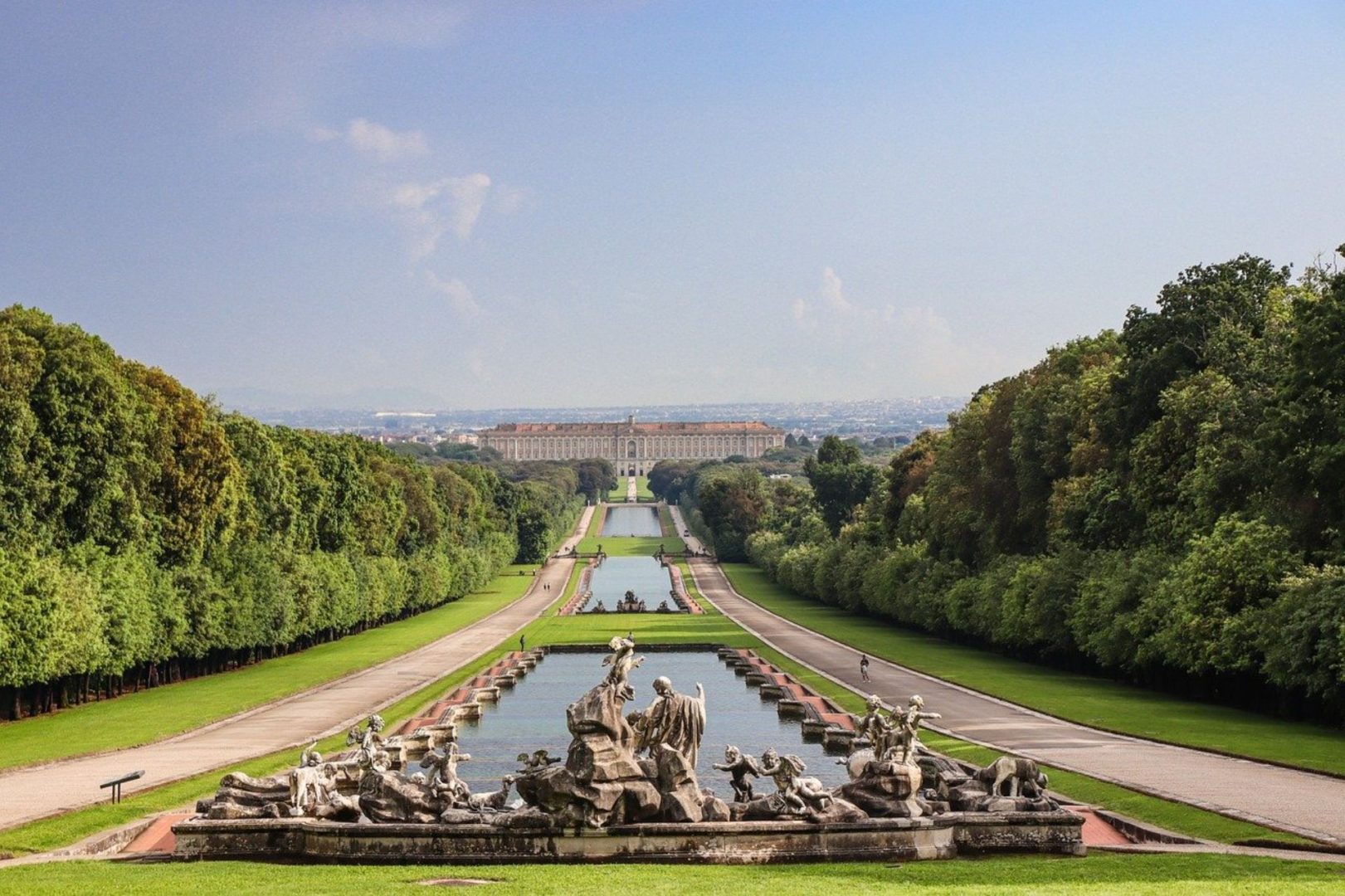
What to see in Caserta beyond the Royal Palace
Leave a comment cancel reply.
This site uses Akismet to reduce spam. Learn how your comment data is processed .

An Italian travel writer in love with my country. Having travelled widely across the globe, I realized there was more to explore closer to home. My Italian Diaries is the place where I share itineraries, activities and off-the-beaten-path places to help you experience the best of Italy like a local!

Get the latest news, fresh posts, and exclusive unblogged stories from Italy delivered straight to your inbox each month.
I consent to the processing of my personal data as per the Privacy Policy
You’ve just been sent an email that contains a confirmation link. Just click on it to finalize your registration.

My Italian Diaries is the place where I share with you stories, photos and useful tips from my travels around Italy. I hope you will enjoy reading it and that my stories will inspire you to organize your next trip to my beautiful country.
Let's collaborate Collaboriamo Contact

Best places to visit near Venice Italy: day trips and short breaks
There are so many great places to visit near Venice, Italy.
If you’re looking for day trips from Venice or even short breaks, you have a lot to choose from! There’s the sea, there are mountains, cities and towns, and you can even go abroad!
So if you’re still wondering what other places to add to your Venice itinerary, we’ve got you covered here.
Best places to visit near Venice, Italy
There are some places just by Venice that many people, us included, add to their Venice itineraries . Those are, for example, visiting the islands of Murano, Burano, and Lido.
In this article, though, you’ll find places that are actually further away from Venice and not really a part of it.
And there are so many places to visit!
Cities near Venice – perfect for day trips from Venice by train

The train system in Italy is very well made, which makes it easy to use them for all kinds of trips. I know people who have travelled extensively all over Italy just by using trains!
And since there is a huge train station in Venice that is very close to the historical centre, it makes sense to go on day trips by train.
Of course, you can rent a car as well, but if you’re just planning on a couple of trips, it might not make sense financially.
So, here are some of the best day trips from Venice by train.
Vicenza – an easy day trip from Venice or a great base outside it

Contributed by Dhara of It’s Not About the Miles
If you are looking for places to visit near Venice, you can’t go wrong with Vicenza.
Located on the Bacchiglione River, Vicenza’s historic centre boasts gorgeous architecture, with many monuments by Andrea Palladio, the famous Renaissance architect. The historic centre, and villas built in the surrounding countryside by Palladio, are designated a UNESCO World Heritage Site.
One of the best things to do in Vicenza is just wander the streets of the centro storico , admiring the beautiful buildings. Linger in the main square, where you can gawk at the Basilica Palladiana, and snap a photo of the slender Torre Bissara: you can’t enter the tower or climb to the top, sadly.
A short distance from the centre of town, you’ll find the famous La Rotonda, a villa that is said to have inspired many other famous buildings around the world, including Thomas Jefferson’s Monticello and the White House.
You can also climb the portico to the top of Monte Berico to visit the sanctuary. From the grounds of the church, you get spectacular views over the city of Vicenza.
Vicenza is easy to visit from Venice: you can take the train from the Santa Lucia station in Venice and arrive in under an hour. You can definitely visit Vicenza for the day because its historic centre is compact, but you can also spend longer if you are looking for a quieter base in Veneto. Antico Hotel Vicenza is a great place to stay!
Bologna – a place to visit near Venice for some great culinary experiences

Recommended by Angelo from Travlinmad Slow Travel blog
Yes, Venice, Italy is one of the most beautiful cities in the world, but it’s also one of the most heavily touristed as well. When you need a break from the crush of the crowds, take the high-speed train to Bologna. You’ll be there in less than an hour and a half making it a perfect day trip.
There are many more things to do in Bologna than can be done on a single day trip making it perfect for a full day experience. Bologna has a laid-back feel and is world famous for its excellent cuisine like tortellini en brodo, tagliatelle Bolognese, prosciutto, and parmigiano reggiano. It is also one of the most fascinating and historic cities in Italy.
You can enjoy the city by staying in the pedestrians-only historic district surrounding the Piazza Maggiore. Throughout the historic area are 25 miles of the UNESCO World Heritage porticoes dating to the 11th century. On a day trip make time to climb the Asinelli Tower for a bird’s-eye view of the city.
Definitely wander the narrow streets of the Quadrilatero with its food stalls, cafes, and restaurants. Buy a few things to munch and grab a seat in the 15th-century Osteria del Sole where you can chat with locals over a glass of wine.
Padua – definitely worth visiting

Contributed by Christine Rogador of Italy In Focus .
Are you looking for a place to visit near Venice? Padua is a perfect place to visit on a day trip.
Padua, also known as Padova in Italian, is a historic city located in the Veneto region of northeastern Italy, considered the oldest city in Northern Italy. It is well known for its historical frescoes and marketplace.
There are so many fascinating places that you can visit and explore in Padua. You can start your journey by admiring the prominent and historical pilgrimage of Basilica of Saint Anthony, which houses the tomb of Saint Anthony; this church features magnificent Byzantine-style domes.
You can also wander around Prato della Valle. This is one of the largest squares in Europe and one of the iconic landmarks and symbols of Padua. It is an oval-shaped space surrounded by a canal and adorned with beautiful statues. The square is often bustling with locals and tourists enjoying walks, picnics, and social gatherings.
Do not forget the charming botanical garden of The Orto Botanico di Padova, the oldest university botanical garden, which houses a vast collection of plants from around the world and serves as an important research and educational institution.
Explore Prato della Valle Market, the bustling open-air market in Prato della Valle, where you can find fresh produce, local delicacies, clothing, and more. Immerse yourself in the vibrant atmosphere of this popular local market.
These are just a few of the best things to do in Padua. The city’s rich history, cultural heritage, architectural treasures, and vibrant atmosphere make it an enticing destination for travellers seeking a unique and enriching experience.
An easy day trip from Venice to Verona

Contributed by Chelsea from Adventures of Chels.
For a great place to visit near Venice, Italy, head over to the beautiful town of Verona.
Located roughly 1.5 hours away from Venice is quaint Verona. It’s such a beautiful and romantic place that Shakespeare himself used it as the setting for his timeless play “Romeo and Juliet.” Between the winding streets, quintessential Italian architecture, and panoramic views, this city is a must-visit in Italy.
While you’re there make sure to visit Juliet’s House. You can take a tour of the inside of the house, but it’s the balcony outside in the courtyard that’s believed to have inspired the famous balcony scene in Shakespeare’s “Romeo and Juliet.” Leave a letter to Juliet in the designated mailbox about your woes of love and, though it may take a few months, you’ll get a response!
Visit the Verona Arena, which hosts operas during the summer, and take a stroll through the colourful Piazza Bra. For some incredible views of the city from above, visit Torre dei Lamberti, and Castel San Pietro.
If you plan to stay to spend a night (or two) in Verona, consider booking at Hotel Milano & SPA. This hotel offers clean rooms in a great location for a competitive price. It’s just what you need for your stay in Verona.
Enjoy your visit to this beautiful town!
Ravenna – a day trip off the beaten path

Recommended by Rai from A Rai Of Light
Ravenna, found in the Emilia-Romagna region, may be small and not as well-known as other popular places in Italy, but it is still worth a visit. The city has a long and rich history as one of the most important cities in Europe during the Roman and early Christian eras which can still be seen today through its many archaeological sites.
Highlights of a visit include the octagonal Basilica di San Vitale, the 6th-century Sant’Apollinare Nuovo, and the cross-shaped Mausoleum of Galla Placidia.
Ravenna has a vibrant artistic culture and is most famous for its colourful Christian and Byzantine mosaics that can be seen in many of the city’s buildings. Walking around to view the intricate designs of these mosaics that date back to the 5th and 6th centuries is one of the most unforgettable experiences in Italy .
There are also a number of museums and galleries showcasing contemporary works alongside traditional art forms such as ceramics and glassblowing.
Despite being a small city, Ravenna offers easy access to other destinations in the region. The city is also easily reached from Venice with 4 daily trains connecting the cities.
Best places to visit near Venice for one-day or multi-day trips

So, with these places, it’s your choice. Theoretically, you can do a day trip here, but in my opinion, they really do require more than one day.
Dolomites – close enough for a day trip from Venice, but more days are definitely needed

Dolomites are incredibly popular, and it’s for a good reason. These mountains, part of the UNESCO world heritage, are just spectacularly beautiful.
Yes, they theoretically are close enough for a day trip from Venice – it takes a bit less than 3h to drive there from Venice if you have a car. So with an early start and a late finish, theoretically , you can make a day trip.
But realistically, you can’t exactly enjoy… well, anything on a day trip. I spent 2 whole days and a bit in Dolomites in April , and it still seemed like way too little time there. We just managed a road trip to some cool locations, but it wasn’t possible to do any hikes.
And there is so much to see and do in the Dolomites! Some of the most beautiful mountain lakes are there, such as the Instagram-famous Lake Braies. And there are so many interesting hikes to do, so many mountain passes to cross, and so many cute little towns to visit!
My favourite mountain passes are Passo Giau and Passo Pordoi (among others). The best towns? Cortina d’Ampezzo and Dobbiaco. We did a hike to Lake Sorapis with Michal, which was spectacular, and of course, there’s the iconic Tre Cime di Lavaredo as well.
As you see, so, so many things to do! So you should stay for at least 3 nights there.
And where to stay ? I can definitely recommend a cute little apartment in Dobbiaco called Haus Greg if you are ok with self-catering – it helps save quite a bit, as the restaurants are quite pricey in the Dolomites. Or Hotel Lajadira & Spa if you’d like something more luxurious. If you’d like to see more options, check out our best places to stay in the Dolomites article.
A day trip from Venice to Lake Garda – can be done with a car

Editor’s note: it can be done as a day trip, yes, especially if you’re going to a closer town such as Sirmione and if you have a car. On the other hand, though, and especially if you’re going by train, I’d recommend staying at least a night there – just like Jolene is suggesting.
Contributed by Jolene from Wanderlust Storytellers
Lake Garda is a must-visit when you are in Venice. Whether you do a day trip or stay for a few days it’s the biggest and most beautiful lake you’ll find in all of Europe.
One of the places that I just loved visiting is the Madonna Della Corona. This church was built back in 1625, and it’s a sight to behold. It’s nestled on the side of a mountain, and the view from there is breathtakingly beautiful. The church itself is just stunning, with ornate dedications and a really cool steeple.
If you want to really explore Lake Garda, I highly recommend renting a boat from Limone. You get a quick lesson on how to drive the boat, and then you’re off! You can head out to see some of the most amazing waterfalls around the lake, or even visit the famous James Bond tunnel. How cool is that?
For nature lovers, a hike up Monte Baldo will treat you to some wild nature and seriously breathtaking views. There are routes that are great for kids, or you can even take the cable car.
If you decide to stay at Lake Garda for a few days, I suggest renting a car so you can explore all the beautiful towns around the lake, the drive itself is pretty impressive too!
And if you’re bringing the little ones along, make sure to check out Gardaland Theme Park. They’ve got rides that the whole family can enjoy, and it’s a great way to mix things up a bit.
There are so many charming villages with accommodation options to suit everyone’s taste if you are staying at Lake Garda. Whether you’re looking for something romantic, luxurious, or family-friendly, you’ll find it.
Personally, my favourite town to stay in was Limone Sul Garda . We booked this amazing place called Appartamento Delux Villa Castello, and let me tell you, it was incredible. The place was so spacious, and it had not one, not two, but three different balconies! And the views of Lake Garda from there were absolutely breathtaking.
A trip to Lake Garda is definitely worth it and you won’t regret it, I promise!
Grado – another day trip from Venice if you have a car, but not with a train

Contributed by Martina of PlacesofJuma
Grado is located on the picturesque Italian Adriatic coast and is a real treasure for a day or multi-day trip from Venice. With its charming atmosphere, stunning beaches and rich cultural heritage, Grado offers the perfect conditions for a seaside getaway. Both couples looking for a romantic getaway and families with children will love this town and its beautiful surroundings.
From gorgeous beaches to fascinating landmarks, Grado really has a lot to offer. The long sandy beach of Grado is an absolute highlight and the beach resorts still exude the historic charm of times gone by. For more than 100 years ago, the resort was an imperial health resort, where even then the motto was: see and be seen. The historic old town is also beautiful, with its winding alleys, quaint stores and cosy cafés that invite you to explore.
A special experience is a boat trip to the church island of Barbana, an important place of pilgrimage in Grado. Even the trip from the picturesque harbour through the lagoon of Grado is an unforgettable experience. Other recommended excursions include the UNESCO World Heritage Site of Aquileia and the Val Cavanata nature reserve, where you can even see flamingos.
For a perfect stay, I recommend the Hotel & Apartments Eldorado as a small, charming retreat. This modern and new hotel offers spacious rooms with stunning sea views, a delicious breakfast, and free bicycles to explore the surrounding area. An absolute must for dinner is the Trattoria Alla Borsa. This cosy trattoria in the heart of the historic old town serves delicious Italian cuisine, including fresh fish dishes and homemade pasta. The location, surrounded by charming stone houses, is also simply unbeatable.
Trieste – the best place to visit near Venice for some incredible architecture

Submitted by Noel from Travel Photo Discovery
If you are looking for a cool place to visit that is a short drive from Venice then Visiting Trieste is an easy day trip or overnight stay. The city facing the Adriatic Sea is the largest city bordering the eastern edge of Italy and Slovenia and definitely worth the drive. The easiest way to get to Trieste from Venice would be to take the bus shuttles that go through both cities regularly throughout the day. It takes about an hour’s drive from Venice to reach the historic district of Trieste.
Trieste is large but the historic district is compact and easy to walk around with pedestrian streets, large piazzas with flowing fountains, a grand City Hall, ancient Roman ruins and so many other wonderful attractions that you can easily cover on foot. It’s easy to visit the tourist office at the main piazza, pick up a map of the historic district and tour the many attractions in the area.
The architecture is beautiful and grand covering a range of influences from Italian, Austro-Hungarian and Slovenian styles that range from the historic medieval past to more ornate Neoclassical and Austrian creations. It’s fun to just explore on foot and wander through the various neighbourhoods with a map on hand and find some cool shops, popular coffee shops and places to hang out and even try a local restaurant offering some traditional food from the area. Trieste is easy, and comfortable to walk around with stunning vistas, piazzas and architecture. It really is a great getaway that is a short distance from Venice and worth a visit.
Florence – a great place to visit near Venice for art, history, and food

Recommended by Daniel from North Carolina Travel Guides
The city of Florence is one of the best places to visit near Venice. One can reach the city by car within 3 hours and by train in about 2 hours and 15 minutes.
Florence is the capital city of the region of Tuscany, and the city was an important city during medieval times and the Renaissance. In the past, Florence was very influential in Europe in terms of culture, art, and economics.
The city’s historic centre is a UNESCO World Heritage Site and it contains many interesting historic buildings and monuments, such as Ponte Vecchio, the Cathedral of Santa Maria del Fiore, and Palazzo Vecchio.
There are also very good museums in the city, such as the Uffizi Gallery, where works by Michelangelo, da Vinci, and Titian can be seen, and the Galleria dell’Accademia, where the famous David statue by Michelangelo can be seen.
When walking in the city of Florence it feels like you are walking in an outdoor museum. Everywhere you look, you can see statues, monuments, and beautiful architecture.
The city also has many good restaurants that serve authentic Italian food, such as Essenziale. Mercato Centrale Firenze is a food market that can also be great to go to when you want to try artisan food when you are in Florence.
Best places to visit near Venice that require at least one night there

So many of the best places to visit near Venice, Italy, are just a tad too far for a day trip. But they do make incredible additions to your whole trip to Italy and shouldn’t be left off many itineraries.
Trentino – one of the best places near Venice for some nature and tranquillity

Contributed by Lavina D’Souza of Continent Hop
While exploring the beautiful countryside of Italy, I stumbled upon a hidden gem called Valle di Cembra, Trentino . It was an absolute delight! Nestled amongst rolling hills, just a short drive away from Venice, this charming valley stole my heart.
I spent a couple of days in Valle di Cembra, and I could have easily stayed longer. What I loved most about this place were its tranquillity and untouched beauty. The vineyards stretched as far as the eye could see with some of them dotted with castles along the way.
The naturally formed Segonzano pyramids were quite a surprise as I wasn’t aware that such a thing existed in this part of Italy.
For wine enthusiasts, a visit to Cantina dei Baroni is a must. This winery produces exceptional wines, and its knowledgeable staff guided me through a delightful wine-tasting experience.
To immerse myself in the local culture, I visited the Area Archeologica Acqua Fredda, where I had the opportunity to learn the traditional art of making copper artefacts. To add a unique twist to my adventure, I visited Bee Wellness Contadino, where I had the chance to relax in a hut surrounded by the sound of buzzing bees.
I had the pleasure of staying at Hotel Belvedere during my time in Valle di Cembra. It was a fantastic choice. The hotel offers stunning views, a warm and welcoming atmosphere, and a convenient location.
If you’re looking for an off-the-beaten-path destination near Venice, don’t miss the opportunity to explore this enchanting valley. You won’t be disappointed.
Milan – a fashion capital with an incredible history

Contributed by Kristin from Scotland Less Explored
Milan is the fashion capital of Italy, but it is not all about shopping. The city also has a rich history of art and amazing architecture and it is home to one of Da Vinci’s most famous paintings.
In terms of architecture, nothing beats the Duomo, one of the largest cathedrals in the world. Construction started in 1386 and only finished in 1965. One of the highlights is that you can walk on the roof. The views of the city, the plaza and the cathedral are fantastic. Tickets can be bought online in advance to skip the long queues.
Next door is one of the prettiest shopping centres in the world called Galleria Vittorio Emanuele II. It is worth a visit, not for the shops, but for the architecture, glass domes and mosaics.
Milan might not be able to compete with Rome and Florence when it comes to art but it is home to one of Da Vinci’s most famous paintings, The Last Supper. Seeing this painting cannot be arranged on the spur of the moment since tickets are limited and booked out months in advance. Make sure you buy your ticket at the official site which has the lowest prices.
If you still have time left visit the museums at Castello Sforzesco or head to Milan’s canals in Navigli. Walk along the canals and stop for a drink or bite to eat at one of the many canal side bars and restaurants.
Prosecco hills – a great wine region near Venice, with the best Prosecco in the world

Contributed by Maddy from Venice Travel Tips
The Prosecco hills are one of the best places to visit near Venice and a well-renowned wine region located in northeast Italy. This wine-making area extends into both the Veneto and Friuli-Venezia Giulia regions, but it is only in a circumscribed area that the best Prosecco in the world, the Prosecco Superiore Valdobbiadene Conegliano DOCG, is produced.
Since 2019, the Conegliano e Valdobbiadene Prosecco hills have been a UNESCO World Heritage Site. Only in the areas of Conegliano, Valdobbiadene and Asolo, where the Glera grapes are grown at a certain altitude in mineral-rich clayey soil, it is possible to produce the best Prosecco.
If you’re currently in Venice, you can join a guided tour or arrange your own transportation.
I recommend visiting the Prosecco hills from late spring to early autumn to enjoy pleasant temperatures and make the most of its incredible views.
Staying two or three days is the ideal time to explore the Prosecco hills at a slower pace. This way, you can meet local producers and also taste the delicious local cuisine.
On my list of the best places to visit in the Prosecco hills, there’s the Locanda Sandi for dinner and for an aperitif or Osteria Senza Oste, a place where you can admire stunning views of the surrounding vineyards.
Lake Como – one of the must-visit places near Venice

Submitted by Katie from KatieCafTravel.com
Lake Como is hands down one of the most beautiful places to visit near Venice, Italy.
In just a four-hour drive, you can escape the bustling canals of Venice and be greeted by the serene beauty of Lake Como.
To get there, I suggest hopping on the direct train that runs daily from Como to Venice. The trains in Italy are super convenient – once you arrive at the station you can use Uber or call a cab to get to your hotel from Como’s train station.
While Como is close to Venice in proximity, it has a completely different vibe and ambience. Picture crystal-clear blue waters embraced by lush green mountains – it’s like something out of a fairytale. Unlike Venice, which is known for its canals and historic architecture, Lake Como is a more peaceful and calm travel destination, great if you need a break from the tourist crowds!
Now, let’s talk food! While there are tons of 5-star upscale restaurants at Lake Como, the one place that blew me away when I visited was Trattoria San Giacomo. An unassuming traditional Italian restaurant, you can get truly great Italian fare here (not tourist food!). And if you’re looking to dine with a view, you must try La Terrazza Lake Como.
Lake Como is a must-visit. Its proximity to Venice, breathtaking landscapes, and varied dining options make it a destination you won’t want to miss.
Lake Iseo – one of the best off-the-beaten-path places to visit near Venice, Italy

Lake Iseo – or Lago d’Iseo in Italian – is located a little bit more than a 2h car ride away from Venice. It’s a real hidden gem that is mostly known only to locals.
And, as much as I’d like it to remain a hidden gem, I believe more people should enjoy the beauty and peace that is Lake Iseo. We lived there for a bit more than a year, and everyone who visited us called it “a paradise”.
When visiting Lake Iseo, our favourite things to do are going around the lake with a car and stopping in the little villages on the way. Driving up to the village of Parzanica offers some of the best views over the lake, but the ride is not really for the faint-hearted.
You might also like: Venice photo diary
Another thing to do is hiking, as there are many incredible hiking trails around Lake Iseo. My personal favourite is Corna Trentapassi, but Michal really loves Monte Bronzone or Monte Gulliermo, as well as Punta Almana, which is a bit further away.
Of course, going to Monte Isola – the biggest lake island in Europe – is something that should be done, too. But being able to do it depends on the season you’re visiting.
Unlike the other popular lakes in Italy, lake Iseo is definitely less touristy with worse public transport connections. That’s why for visiting it I recommend renting a car – it gives you better options for seeing many things.
We usually stay in Sarnico when going to Lake Iseo, as it offers the best balance between “touristy” and “local”. A great hotel there is Riad Rooms. If you’d like something more luxurious, check out Hotel Ulivi in Paratico – it’s just over the bridge.
Our favourite restaurants in Sarnico are definitely La Pagoda di Eolo and Al Tram, both great for regional specialities.
Places abroad that are near Venice and worth visiting

Since Venice is not so far from the Italian border and it has a port, there are actually quite a few countries that you can visit on a short trip from it.
Incredibly, you don’t necessarily have to spend a night abroad – it can easily be on a day trip from Venice!
Skocjan Caves in Slovenia

Recommended by Kamila from My Wanderlust
Located around 175 km east of Venice, Skocjan Caves in Slovenia is one of the most spectacular places you can visit in Central Europe.
The place became a UNESCO World Heritage Site in 1986 and attracts numerous visitors each year. And it is popular for a reason – Skocjan Caves is a breathtaking and mind-blowing place, one you will not forget for a long time. This is where you will find one of the largest underground river canyons in the world and enormous underground chambers of exceptional beauty.
The first part of your trip, when you go underground, is done with the guide. It lasts around 1,5 hours, and in that time, you will walk around 2,5 km, including 400 stairs. Along the way, you will stop a few times when the guide gives commentary on the place or points to interesting spots, such as the old, 19th-century tourist trail inside the cave.
Once you are done with it, you can choose from three routes back to the visitors’ centre, varying in the distance and the number of steps you need to walk – each of them is beautiful so no matter which one you choose, you are in for a treat.
Altogether, you can expect to spend some 2-3 hours visiting Skocjan Caves.
When you are in the area, you can also include the Adriatic seaside of Slovenia in your itinerary.
The easiest way to get from Venice to Skocjan Caves is by car; you can also use the train, as all the international trains from Italy to Ljubljana stop in the nearby Divaca.
Istria in Croatia

By Karen of Outdoor Adventure Sampler
The Istria area of Croatia is a perfect overnight trip from Venice. The heart of the Istrian Peninsular is a three-hour drive from Venice. It is also possible to reach the major cities of Istria by train or bus.
Istria is known as a famous wine-producing region. The terracotta soil and the breezes from the Adriatic Sea make for ideal conditions for growing grapes. The rich red wines of Istria combined with the abundant local foods make for an unforgettable experience. The highlands area is also famous for truffles. You can take a tour with a local truffle hunter with trained dogs to find this underground gourmet speciality.
The hill town of Motovun which dates back to Medieval times is a recommended stop. Stroll through the walled Old Town and enjoy a panoramic view of the surrounding countryside. Tasting a truffle-infused dish at a Motovun restaurant can’t be missed.
The beaches of the Istrian Peninsula are popular for sun-seekers and water enthusiasts. Rovinj, a city on the Adriatic Sea, is well-loved for its crystalline waters, historic buildings, and twisting cobblestone streets. Make sure to get out on the water to see the old city from the sea. A dolphin watching or sunset cruise, or a sea kayaking trip in Rovinj is delightful.
Piran in Slovenia

Recommended by Erin of Wanderlust With Kids
Located on the Slovenian coast, Piran is one of the loveliest towns on the Adriatic Coast and an easy visit from Venice.
Whether you take the ferry from Venice to Piran or drive along the Italian coast to Slovenia, Piran is worth a visit.
Stroll along the narrow cobblestone streets that wind through the historical centre or sample some delicious seafood at any one of the numerous cafes in the Old Town. There are plenty of things to do in Piran , but it’s also a town where you can wander and get lost in the laneways while relaxing and soaking up the charming atmosphere.
Piran also boasts stunning views. Take a walk along the promenade for some fantastic views across the Adriatic Sea or climb to the top of the bell tower for some views of Piran from above. Walking along the old Venetian walls also provides some stunning views of the city, as well as the coastlines with Croatia on one side and Italy on the other.
As the day draws to a close, find a spot along the rocks or at one of the restaurants along the waterfront to witness the spectacular sunset. It’s a perfect way to spend a day or weekend away from Venice.
Did you enjoy this post! Save it on Pinterest!

Guest author
Kristine Eksteine-Nizka is a guest author of Wanderlust Designers. She has lived in 4 countries and has visited over 200 places in 30 countries, all while holding a full-time job or studying, and is determined to inspire and teach others to do the same.
Similar Posts

Things to do in Venice at night – and the best tips for Venice by night
There are quite a few things to do in Venice at night. And Venice by night is amazing, as the crowds of daytrippers are gone, which means that the city is quieter and much, much calmer. Which, in my opinion, is a win-win situation! If you enjoy going clubbing after the sun has set, you…

Packing list for a mountain vacation with kids: don’t forget anything!
I decided to interrupt my Venice posts with a lovely little packing list for a mountain vacation. The reason for that? Well, let me tell you why. Storytime We went on a weekend trip to Tatry – Strbske Pleso, to be exact. Staying in a nice hotel, lovely room with a kitchen, breakfast. Nice and…

First time flying tips: make your experience amazing
First-time flying tips from an ex-flight attendant, what more can you wish for? I’ve been giving advice and tips to so many of my friends, family, and acquaintances lately, that it just seemed like a good idea to put a whole article together. It turned out quite comprehensive really! So here are my first time…

11 unique things to do in Venice: the best unseen activities
Everyone knows that when you visit Venice, you should explore the canals and bridges, visit the Saint Mark’s Square, ride a gondola, go to Burano, and similar things. But there are so many more unique things to do in Venice as well! So, if you have time left in Venice to do something more than…

What to pack for Venice and what to wear in Venice – must haves
At first, I was thinking of writing two separate articles, that is, What to wear in Venice and What to pack for Venice. But really, in my opinion, these two subjects overlap way too much to warrant two articles. To properly enjoy Venice, you don’t really need to take a lot of stuff with you….

25 Types of Travellers: which one are you?
There are as many different types of travellers (or tourists) as there are types of people. Some people are thrifty, some spend on luxury items. Some rather relax at home by watching TV, some go out in the mountains to hike. So why would it differ for tourists? During our extensive travels over the years,…
Leave a Reply Cancel reply
Your email address will not be published. Required fields are marked *
Save my name, email, and website in this browser for the next time I comment.
This site uses Akismet to reduce spam. Learn how your comment data is processed .
Top Things to Do
Free Things to Do
Traveling With Kids
Best Museums to Visit
Guide to Carnevale
Top Venice Restaurants
Nightlife in Venice
Best Time to Visit
Weather & Climate
Marco Polo Airport Guide
Neighborhoods to Know
Venice's Vaporetto Transportation
Best Gondola Rides
Day Trips From Venice
Best Day Trips From Venice
Make Venice a Base for Exciting Day Trips in the Region
:max_bytes(150000):strip_icc():format(webp)/martha_bio-56a3c8865f9b58b7d0d3b5fe.jpg)
TripSavvy / Christopher Larson
Venice is a beautiful city to visit, and certainly has enough attractions and diversions to keep you busy for at least several days to a week or more. But if you have the time and want a break from the canals of Venice, there are many excellent nearby options for day trips as well. The Veneto region holds interesting towns and cities outside Venice, most easily reached by public transportation.
Venice's Top Islands
TripSavvy / Christopher Larson
Murano, Burano, and Torcello are the top three islands to visit on day trips from Venice. Murano is known as the island of glassmakers, Burano has canals lined with picturesque colored houses and is known for lace making , and Torcello is a green island where you can see Byzantine mosaics in the 7th-century Cathedral.
- Getting There: From Fondamenta Nove, Vaporetto Number 41 or 42 to Murano, or Number 12 to Burano and Torcello.
Venice Lido
Venice Lido is a long strip of land off the Venice coast. The Lido is lined with beaches and is a good place for nightlife, shopping or to get away from the tourist crowds in Piazza San Marco. In early September, the Venice Film Festival is held on the Lido. There are shops, restaurants, bars, and hotels (often less expensive than in Venice) on Venice Lido, as well.
- Getting To the Lido: Vaporetto Number 1 from Piazza San Marco. Vaporetti run from other parts of Venice, too.
- Read more about going to the beach in Italy .
Venetian Villas on the Brenta Riviera
Along the Brenta Canal between Venice and Padua are a number of beautiful ancient villas, some designed by famous Renaissance architect Andrea Palladio. Although most can only be viewed from outside, some of the former gardens are now public parks and a few villas are open to visitors.
- Getting There: You can take a bus that runs from Venice (from Piazzale Roma) to Padua, stopping in Mira or Stra, although the best ways to visit are by boat or car.
Padua (Padova) is a walled city east of Venice. It has Europe's oldest botanical gardens, the Basilica di Sant’Antonio, and Scrovegni Chapel frescoes by Giotto. The gardens and Basilica are across town from the train station, a pleasant walk through the historic center.
- Getting to Padua: Trains from Venice to Padova take about half an hour and run frequently.
Treviso is a pleasant medieval town north of Venice with canals and alleyways running through its center. The defensive walls, town gates, and moat can still be seen. Treviso's center, a short walk from the train station, is a nice place for wandering or enjoying a drink in a cafe.
- Getting There: Trains from Venice to Treviso take about half an hour and run frequently.
Chioggia, a fishing port in the Venetian lagoon, is sometimes called "Little Venice." A wide pedestrian street lined with cafes and restaurants runs down the center of town to the port. Chioggia has a great morning seafood market, clock tower museum, and the Museum of the South Lagoon. Beaches are 2 km from the center. It's a nice place for relaxing and good for day trips to Venice in the summer.
- Getting to Chioggia: In summer, a direct tourist boat runs from Saint Mark's Square to Chioggia. At other times, vaporetti or train connections can take two hours.
Vicenza was an important city from the 15th through 18th centuries. Famous Renaissance architect Palladio was from Vicenza and he designed 23 of the buildings in the city, including Palazzo Barbaran da Porto that houses the Palladio museum. The Basilica Palladiana is considered by many to be Palladio's masterpiece. With a car, you can tour Palladian villas outside Vicenza.
- Getting to Vicenza: Trains from Venice to Vicenza take about forty-five minutes and run frequently.
Verona, sometimes called the Florence of the North, is famous for the house and balcony said to belong to Juliet in the Shakespeare story, "Romeo and Juliet." Verona has a 2,000-year-old Roman Arena where summer opera performances are held, a Roman bridge and a market square that was once the Roman Forum. Verona is one of Italy's most visited cities.
- Getting There: Trains from Venice to Verona take between 60 and 90 minutes.
Bassano del Grappa
Bassano del Grappa is a pretty medieval town below Monte Grappa on the Brenta River. Bassano del Grappa is known for its Alpine wooden bridge, grappa, and ceramics. It's a pleasant base for exploring the nearby Venetian villas, castles, towns, and attractions of the Veneto region.
- Getting There: Trains from Venice to Bassano del Grappa take about 90 minutes.
Original article by Martha Bakerjian.
Best Places to Go in Northern Italy's Veneto Region
Bassano del Grappa Travel Guide
The Best Things to Do in Venice, Italy
A Traveler's Guide to Chioggia
Veneto Region of Northern Italy: Tourist Map With Cities
Venice Neighborhoods Map and Information
Venice, Italy Guide: Planning Your Trip
Northern Italy's UNESCO World Heritage Sites and Cities
How to Travel From Munich to Venice by Train, Bus, Car, and Plane
Visiting Venice's Islands
How to Save Money on Your Italian Vacation
The Complete Guide to Bassano del Grappa, Italy
The 15 Best Destinations in Italy
Murano: Planning Your Trip
Venice's Vaporetto Transportation System: A Complete Guide
Burano: Planning Your Trip

Touropia Travel
Discover the World
11 Best Day Trips from Venice
By Carl Austin · Last updated on May 20, 2024
Venice is a wonderful city, but there may come a time when travelers want a change of pace and scenery, if only for a day. Visitors have a lot of options when it comes to getting away from Venice for a few hours. They need only hop on a train or take a tour for a trip to the scenic beauty of the southern Alps, also known as the Dolomite. Or they can travel down the coast of Italy or inland to smaller towns with a great heritage and beauty. An overview of the best day trips from Venice:
11. Bassano del Grappa
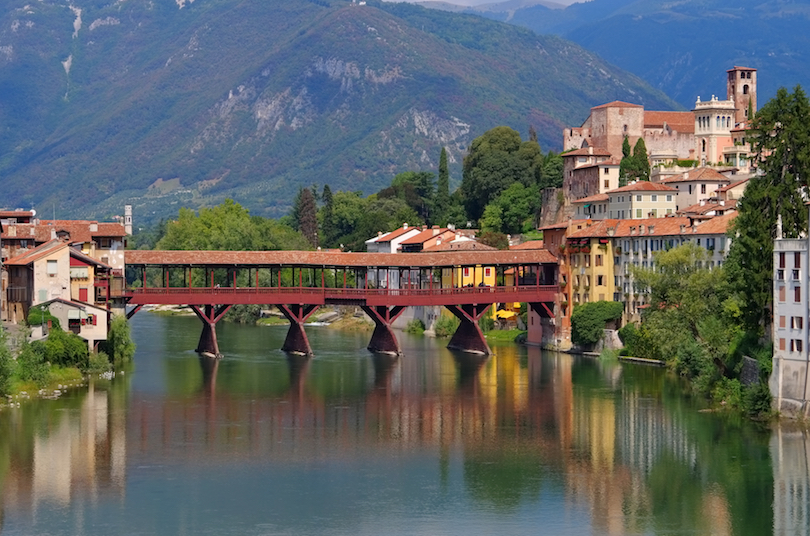
Located in a beautiful setting with the foothills of the Alps rising behind it and the Brenta River flowing through it, Bassano del Grappa makes for a great day trip from Venice, and there is loads for you to see and do. As well as boasting lots of impressive palaces, churches, and architectural wonders dating to both the Middles Ages and the Renaissance, the city is also famed for the strong grappa spirit produced here.
While Piazza Garibaldi and Piazza della Liberta may be at the heart of life in Bassano del Grappa, the beautiful Ponte degli Alpini is undoubtedly its most popular attraction; it is certainly a great place to take a memorable photo or two before heading back to Venice.
Getting to Bassano del Grappa
- Lying to the northwest of Venice, Bassano del Grappa is very easy to get to by public transport, and a direct train line connects the two. Trains depart very frequently, and the journey only takes an hour and 15 minutes.
- Another option is to take a guided tour; this is a great way to get a feel for the lovely Venetian hill towns. With stops at Bassano del Grappa, Asolo, and Marostica included, alongside prosecco tasting at a local vineyard and a visit to a Palladian villa, it is an action-packed day out. See prices
10. Bologna

Home to the oldest university in the world, Bologna is well worth visiting. It is full of lovely architecture and a host of impressive historical and cultural landmarks. Piazza Maggiore, for instance, is ringed with gorgeous buildings, and Basilica of San Petronio and Palazzo del Podesta are just two of the highlights.
Famed for its beautiful colonnades found everywhere in the city, Bologna is widely considered by Italians to be one of the most beautiful cities in the country. In addition to this, it has one of the largest historical centers in Italy. Due to its sizeable student population, there is a youthful and lively feel to Bologna; the streets are lined with great bars, restaurants, and cafes for you to check out.
Getting to Bologna
- By train, it only takes an hour and a half to reach Bologna from Venice. The main train station lies about 20 minutes walk away from Piazza Maggiore in the center of the city.
9. Lake Garda
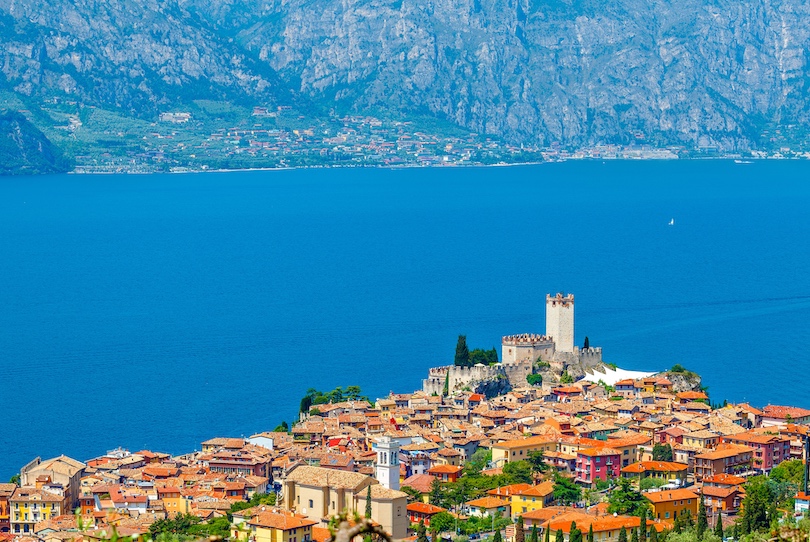
The largest lake in Italy, Lake Garda is an absolute treat to visit, and its glittering waters are lined with charming towns and villages that hug the lakeside. As such, there are loads of great places to visit; one of the most popular attractions is the beautiful Castello Scaligieri, which is located in Sirmione.
While Desenzano del Garda and Peschiera Del Garda are two of the main gateways to Lake Garda, it is well worth exploring a little further afield to check out such places as Riva del Garda and Gardone Riviera; both are located amongst some absolutely stunning scenery. You really can’t go wrong wherever you visit, however, as everywhere you go, you’ll be blessed with breathtaking views over the lake with beautiful mountains in the distance.
Getting to Lake Garda
- From Venice, it only takes an hour and a half to get to the glorious Lake Garda by public transport. Simply hop on a train at Venice Santa Lucia station and alight at Peschiera Del Garda station with the lake glittering before you.
8. Florence

Renowned throughout the world for being the birthplace of the Renaissance, Florence only takes two hours to get to by train from Venice; as such, it is a must-see if you have the chance. With spectacular sights on show such as the Ponte Vecchio, Piazza Signoria, and Santa Maria del Fiore – the impressive domed cathedral that lies at the heart of the city – Florence truly is a joy to explore.
Everywhere you go, you’ll come across fantastic art and architecture, and both the Uffizi Galleries and Accademia Gallery are full to the brim with incredible artworks. Lined with beautiful churches and lovely little cafes and restaurants, its piazzas are lovely to relax in. At the end of the day, you’ll find it hard to tear yourself away and head back to Venice.
Getting to Florence
- As direct trains connect Venice to Florence, it doesn’t take all that long to get from one to the other. You can find yourself wandering around stunning sights such as il Duomo and il Ponte Vecchio in a little over two hours after having set off.
- Another option for visiting Florence is to take an independent but organized day trip to the marvelous Renaissance city. This includes tickets for the high-speed train there and back, as well as a hop-on-hop-off bus tour around Florence. See prices
7. Asolo & Castelfranco
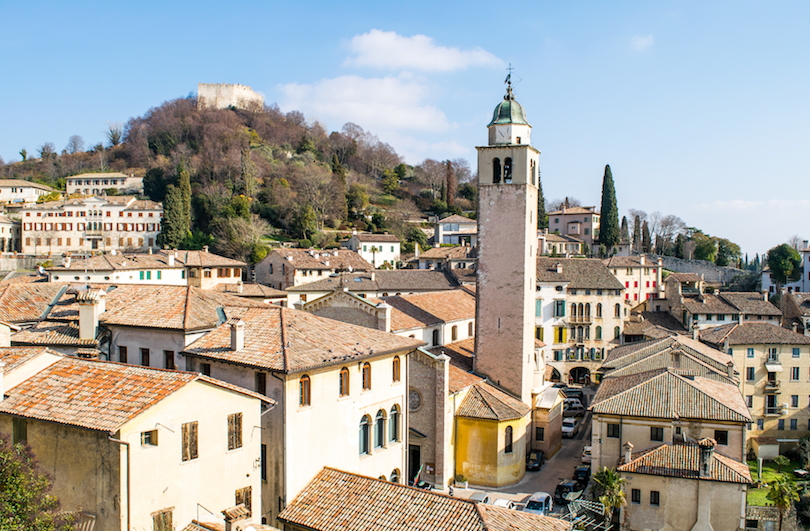
As they lie just a short distance away from each other, many people combine both Asolo – ‘the City of a Hundred Horizons’ – and the walled, medieval city of Castelfranco into one unforgettable day trip. While the former is renowned for its glorious mountain setting that offers up astounding views over the surrounding countryside, Castelfranco is mainly known as being the birthplace of the famous Renaissance painter Giorgione.
In addition to this, it is also a lovely place to wander around. The medieval center has been very well preserved, with its beautiful Duomo, spectacular Teatro Accademico, and imposing Torre Civica amongst its most impressive sights. Asolo has its fair share of historical and cultural monuments to show off, such as its splendid cathedral and hilltop fortress. It is for good reason that it is also known as ‘the Pearl of Veneto.’
Getting to Asolo & Castelfranco
- Visiting both Asolo and Castelfranco in one day by public transport is very easy to do; the latter is only an hour-long direct train journey from Venice. After exploring the majestic walled city, you can hop on bus 204, which will take you to Ca’vescovo in just 25 minutes.
- If you’re a bit pressed for time, taking a guided tour may be the easiest way to see as much of this beautiful part of Italy as possible in just one day. See prices
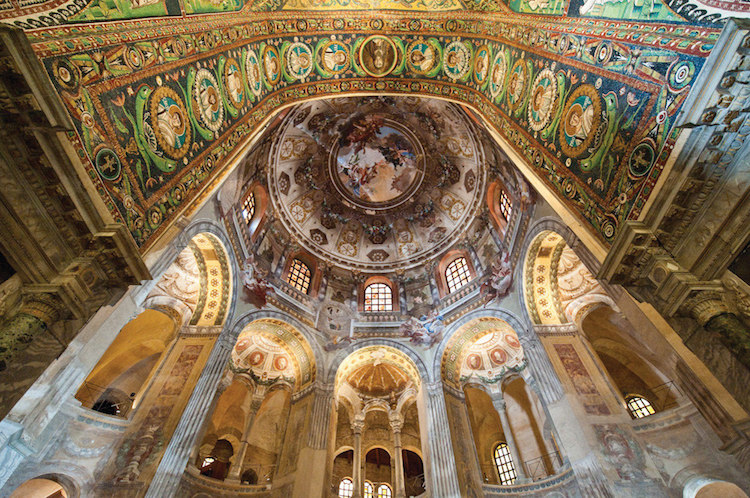
Ravenna’s old churches, some dating back 1,500 years, are a very good reason to make the two-hour train trip from Venice. These churches contain some of the best Byzantine mosaics in Europe. The central city section is popular with pedestrians and bicyclists as they stop to see the Basilica di San Vitale with fabulous mosaics such as scenes with the Apostles.
Other attractions in Ravenna include the Piazza del Populo, the town square that dates back to 1500; the colorful indoor market Mercato Coperto to buy snacks, and the Mausoleum de Gallia Placidia with its fantastic mosaics.
Getting to Ravenna
- Lying almost directly to the south of Venice, Ravenna only takes about two hours to get to by train, although this does involve a change at Bologna.
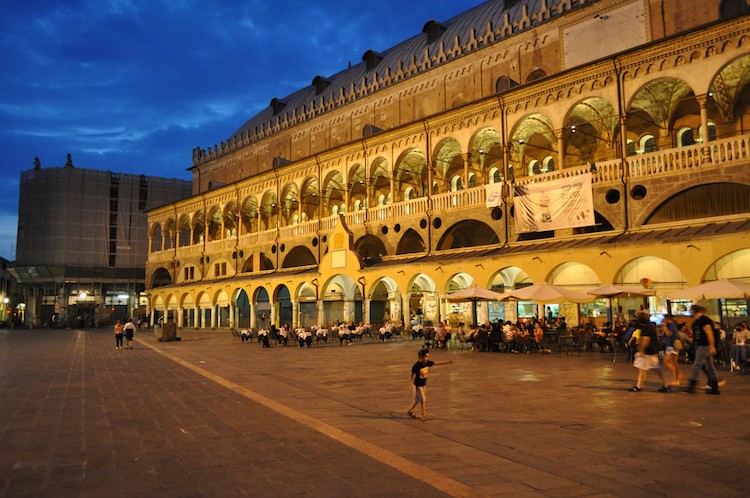
A popular day trip from Venice, Padua may be the oldest city in northern Italy, reportedly founded by the Trojans in the 12 century BC. Ancient history aside, the city’s top attraction is the Scrovegni Chapel that is home to an important series of frescoes painted by Giotto in his later years; the frescoes are considered a masterpiece of 14th century painting in Europe.
Impressive art, including an equestrian sculpture by Donatello, can be found at Basilica de Sant’ Antonio where the apostle St. Mark is buried. Visitors will want to take a break at the Caffé Pedrocchi that has been serving customers since 1831.
Getting to Padua
- By public transport, it takes as little as half-an-hour to get to Padua from Venice and trains depart very frequently.
- Another memorable way to visit Padua from Venice is to join a scenic boat cruise that takes you all along the Brenta river to the historic city. See prices
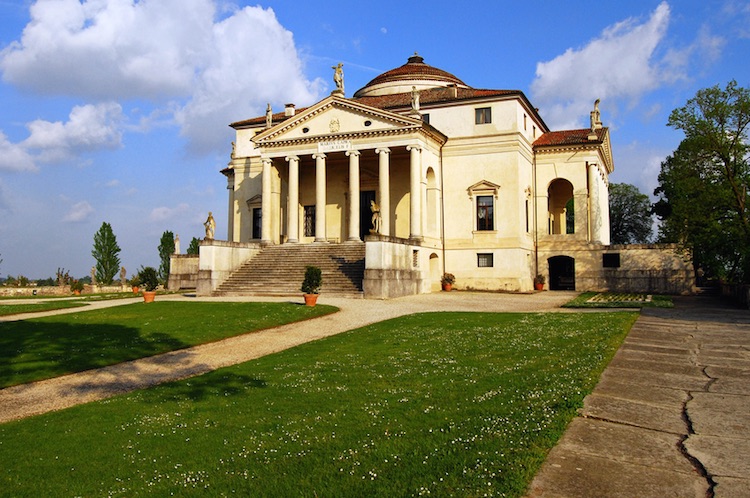
Just 60 km (37 miles) from Venice is the historic, cosmopolitan city of Vicenza. It’s famous for its architecture, especially buildings by Andrea Palladio, who built several, of which the Teatro Olimpico is one of his most famous. Visitors will want to stroll through the historic section, stopping to take in museums, art galleries and public squares, including the Piazza dei Signori that was also designed by Palladio.
Just outside the city lies the Villa Rotonda, the highlight, and sometimes the main reason, of anyone’s trip to Vicenza. Designed by Palladio in 1591, it contains all of his revolutionary ideas into one perfect building. As harmonious as the exterior is, the interior is also breathtaking, being completely frescoed with tromp l’oeil scenes from the villa’s ideal everyday life.
Getting to Vicenza
- As direct trains regularly connect Venice to Vicenza, it takes no time at all to get to the small city by public transport. The journey takes around 45 minutes.
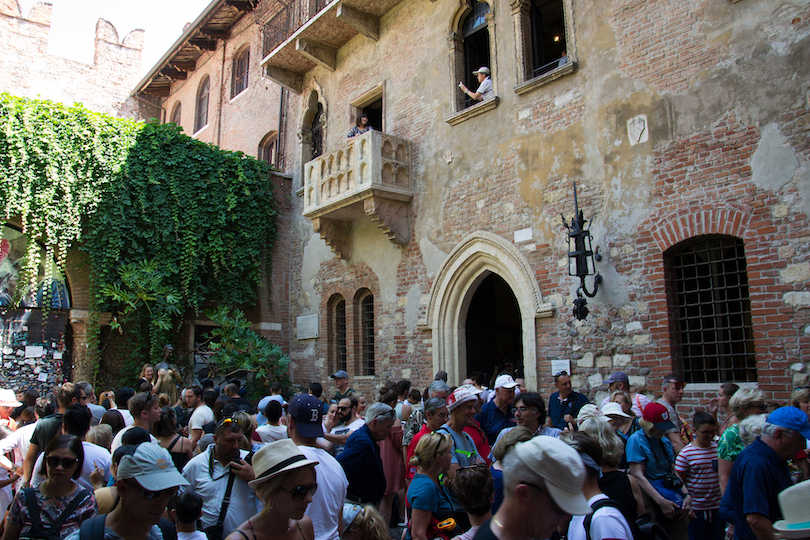
A visit to Verona is a must for Shakespeare fans, since Romeo and Juliet, The Two Gentlemen of Verona and The Taming of the Shrew are set here. Sites connected to the plays, however, are beat out by the ornate Romanesque San Zeno Maggiore Church, which is considered Verona’s top tourist attraction.
Another top draw is the Ponte Scaligero, a bridge first built in the first century and rebuilt after it was destroyed in World War II. The most famous structure in Verona however is the Arena, an enormous Roman amphitheater that is crumbling on the outside but still functioning today. It was erected in the 1st century AD in an elliptical shape, and is the world’s third-largest amphitheater to survive from antiquity. Verona is 114 km (71 miles) from Venice and can be reached easily by train or car.

Getting to Verona
- Lying just to the west of Venice, Verona couldn’t be easier to reach by public transport, and regular trains connect the two cities. Simply hop on a train at Venice Santa Lucia train station and alight just over an hour later in Verona.
- For visitors interested in learning more about Verona’s fascinating past, a guided tour around the city is simply a must. See prices
2. Dolomites
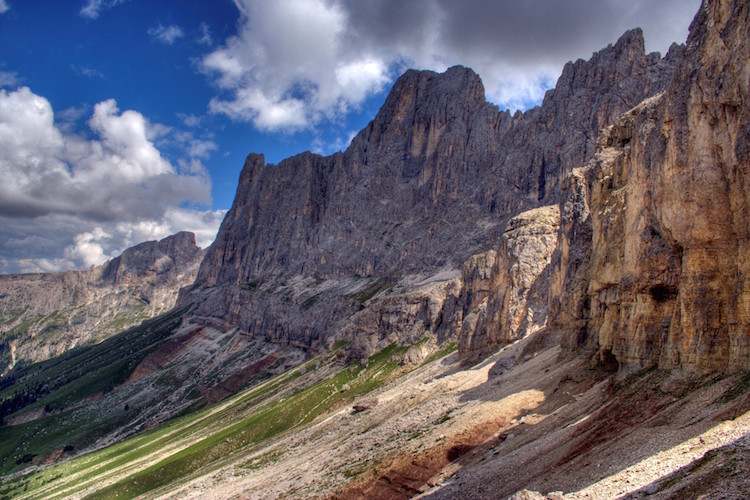
The Dolomites are considered one of the top alpine areas in Europe. While they’re not Italy’s highest mountains, the Dolomites’ red-hued pinnacles are the country’s most spectacular. One of the best places to enjoy the alpine experience is Cortina d’Ampezzo, popular with jet setters and winter sports enthusiasts; Cortina hosted the 1956 Winter Olympics.
The popular 1963 movie, The Pink Panther, was filmed here. The Dolomites are popular with hikers who want to hike its many paths. The spectacular scenery of the Dolomites can be found just over 160 km (100 miles) from Venice.
Getting to the Dolomites
- To get to the Dolomites by public transport from Venice is doable, but as it takes quite a long time. The simplest way to get there is to take a train from Venice to Calalzo di Cadore. From here, take a bus to Cortina d’Ampezzo, which is nestled away amidst the Dolomites. All in all, this should take you around three and a half hours one way, depending on the transfer times. Alternatively, you could head out of the city to Venice Airport and take a direct two-hour bus to Cortina from there.
- If neither of these two options suit your needs, you may be better off taking a guided tour. With a visit to the beautiful Tre Cime di Lavaredo peaks and a stop at Cortina included, alongside a stroll around Lake Misurina this tour is a fantastic way to see as much of this beautiful part of Italy as possible in just one day. See prices
1. Lagoon Islands
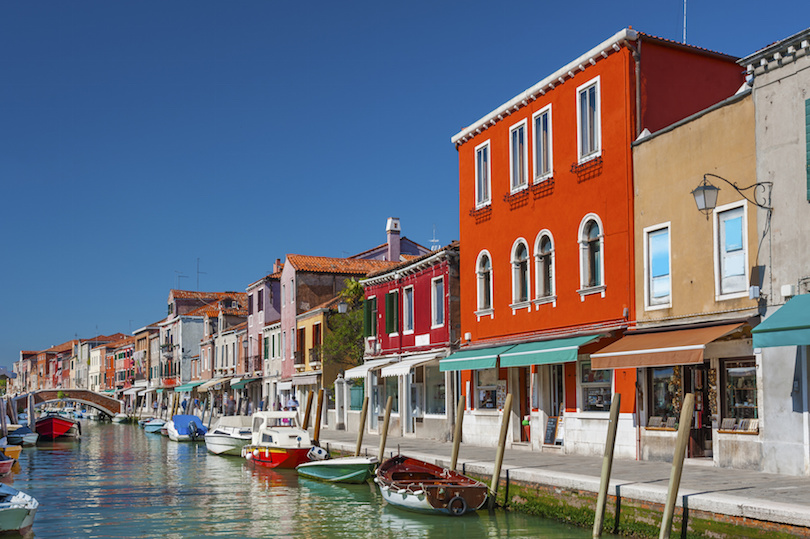
The Venice Lagoon is dotted with islands, with the northern outlying islands of Murano, Burano and Torcello the most famous. Murano is famous for its glassmaking where travelers can visit shops and see artisans at work as well as several historic churches.
Burano is an island of fisher folk that is also known for lace making and its colorfully painted houses. At one time Torcello was bigger than Venice; today, it’s a quiet, green island that is famous for ancient Byzantine churches, including the Cathedral of Santa Maria Asunta. Vaporettos link the islands and Venice together.
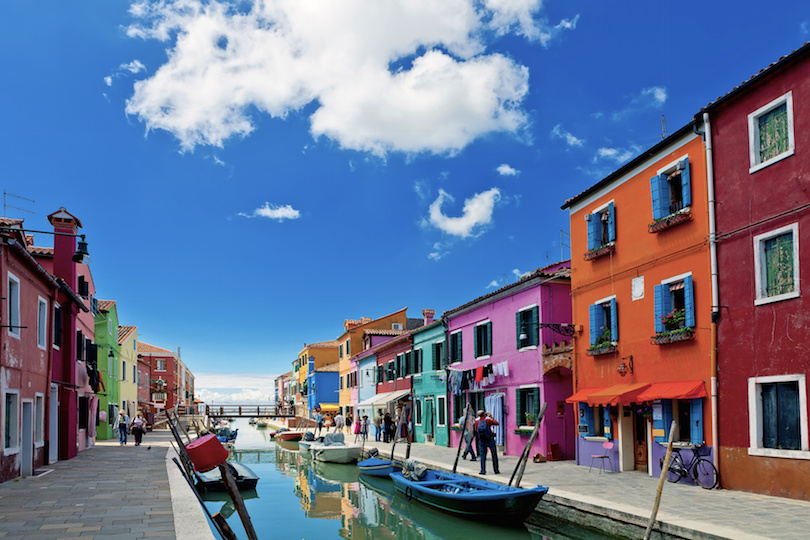
Getting to the Lagoon Islands
- A great option for visiting Murano, Burano, and Torcello is to embark on a guided tour that takes you around the three islands to see glass blowing, beautiful lace being made, and lots of impressive old churches and stunning architecture. See prices
Map of day trips from Venice
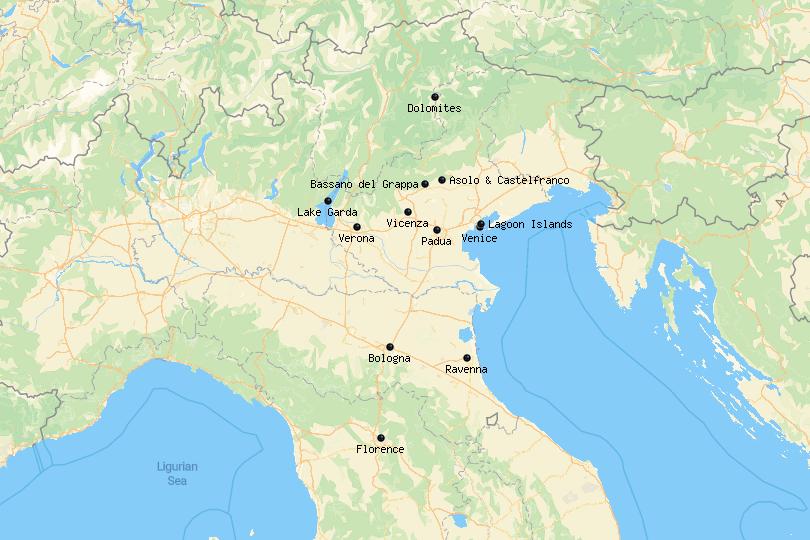
Share this post:
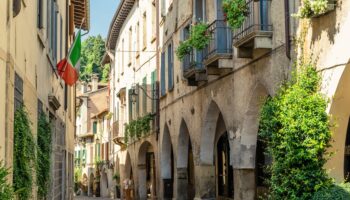
14 Best Places to Visit in Veneto, Italy
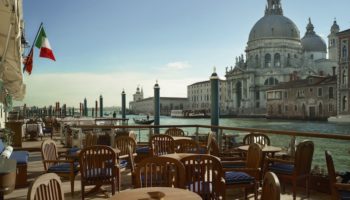
Where to Stay in Venice: 8 Best Neighborhoods
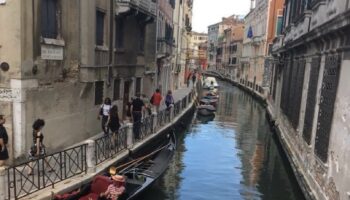
Visiting Chioggia: Little Venice’s Best Kept Secrets
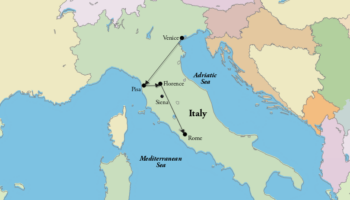
How To Spend One Week in Italy: DIY Itinerary
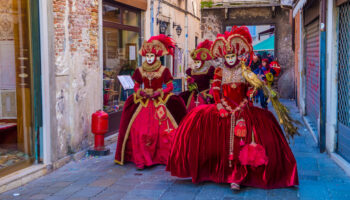
Best Time to Visit Venice: Month-by-Month Guide
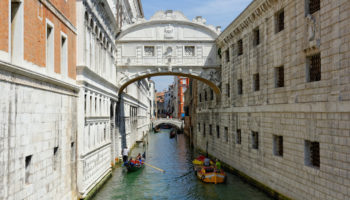
25 Top Tourist Attractions in Venice
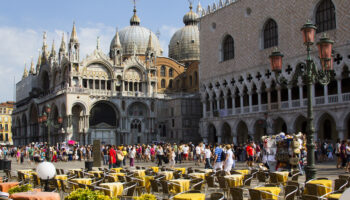
23 Best Places to Visit in Italy
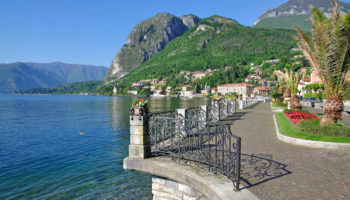
15 Best Places to Visit in Lake Como
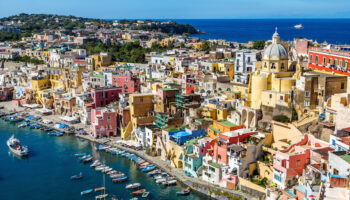
10 Most Beautiful Italian Islands
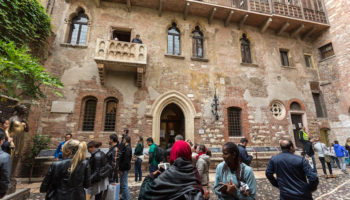
12 Best Things to do in Verona, Italy
Reader interactions.
January 17, 2016 at 2:52 pm
Is it feasible to go from both Padua and Vicenza in one day? Do you have a tour that does this?
Leave a Reply Cancel reply
Your email address will not be published. Required fields are marked *
This site uses Akismet to reduce spam. Learn how your comment data is processed .

- Sailing Updates 0
- [email protected]
- +385 52 422 896
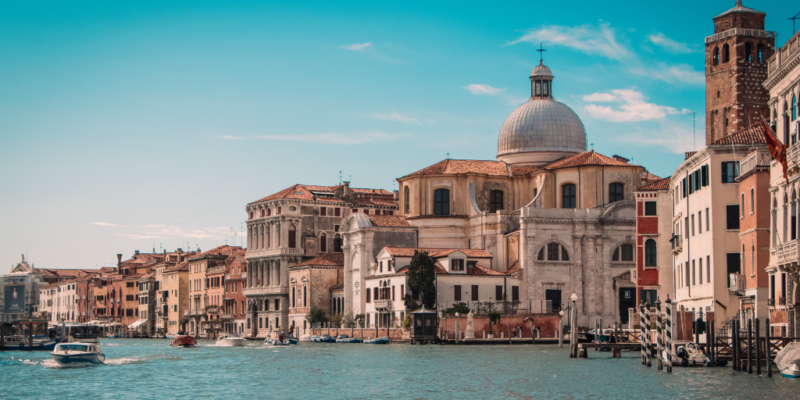
Top 5 day trips from Venice, Italy: destinations and experiences
If your travel plans extend beyond a simple day trip to Venice and you wish to delve deeper into the Italian experience, considering the closest cities to Venice could significantly enhance your itinerary. These noteworthy places offer a wealth of unique attractions and experiences that encapsulate the rich tapestry of Italian culture and history . Today, we’re excited to share with you some of these cities, our favourite destinations that are easily accessible and promise a truly immersive Italian experience .
The closest cities to Venice for unforgettable day trips
From the bustling medieval marketplaces of Padua to the serene Alpine foothills of Bassano del Grappa , the cobblestoned lanes of Treviso laden with the effervescence of locally made Prosecco, the rejuvenating spa treatments of Abano and Montegrotto Terme , to the human chess spectacle in Marostica – each of these destinations represent the best day trips from Venice, Italy . These are just a few of the many noteworthy places to visit near Venice , each offering an unforgettable immersion into diverse Italian experiences. So, where will your Italian adventure take you first?
Known in Italian as Padova , the beautiful city of Padua is one of our top recommendations for day trips from Venice, Italy. Just over half an hour away by train, it’s an easily accessible destination from Venice. Once a powerful city-state, Padua is home to Italy’s second-oldest university and boasts plenty of medieval marketplaces to explore. Don’t miss the Basilica di San Antonio in Padua, a remarkable city near Venice, which houses the remains of St Anthony. Enjoy a stroll around the 90,000 square metre piazza known as Prato della Valle , where you’ll find 78 statues of notable Paduans. This is just one of the many captivating experiences that await you in this enchanting city near Venice .
2. Bassano del Grappa
Venture towards the Alpine foothills to the town of Bassano del Grappa , a charming city near Venice . An hour and 20 minutes away by train, it invites you to discover the history of one of Italy’s most famous liqueurs, grappa, at the Museo della Grappa . The town is also famous for its picturesque 13th-century wooden bridge, known as the Ponte Vecchio (Old Bridge), adding to the charm of this city near Venice.
Noted for its canals, the town of Treviso , a delightful city near Venice, is just 45 minutes away by train. It’s a likely destination if you visit Venice on a budget airline. While it’s much less well-known than Venice, which once owned it, Treviso is worth a visit for its cobbled medieval streets and a beautiful cathedral boasting a work by Titian. This Italian city near Venice is also celebrated for its local sparkling wine, now a popular aperitif: Prosecco .
4. Abano and Montegrotto Terme
For those seeking relaxation, Abano and Montegrotto Terme are ideal destinations for day trips from Venice, Italy . The word ‘Terme’ means ‘bath’, and this area is one of Europe’s best spa attractions. It’s one of our favourite places near Venice to visit when we need to unwind. This wellness haven, one of the closest cities to Venice , is the place to come for all manner of spa treatments, from massages to thermal mud baths. It’s about 40 minutes on the train from Venice, making it a perfect destination for a rejuvenating day trip.

5. Marostica
If you’re visiting Venice in an even-numbered year, and at the end of September, you’re in for a treat if you decide to visit Marostica . This town, just over an hour’s drive, is one of the intriguing places to visit near Venice . Renowned for a local variety of cherry, Marostica, one of the closest cities to Venice, is also famous for its human chess tournament. This unique event takes place on the fourth weekend in September every other year, adding a special charm to the array of experiences offered by the closest cities to Venice .
Related posts
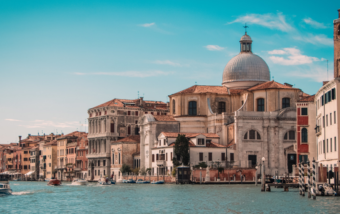
What to do in Santa Croce, Venice
As you’ll know if you read our recent post on the ‘Sestieri’, Santa Croce, Venice is one of the six districts that make up this unique city. If you arrive […]
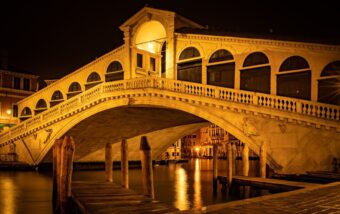
Rialto Bridge: the Venice Rialto Bridge on the Grand Canal
When one speaks of Venice, the conversation inevitably turns to the iconic Rialto Bridge, the oldest bridge in Venice. A must-visit during any Venice day trip, this masterpiece stands as […]
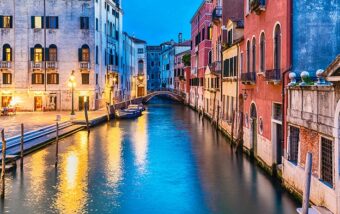
The Sestieri: the Six Venice Areas
Other cities have ‘quarters’, but in Venice, areas of the city are known as “sestieri”. So how many sestieri does Venice have and what are the main things to do […]

Places to see near Venice
Around Venice | 0 comments
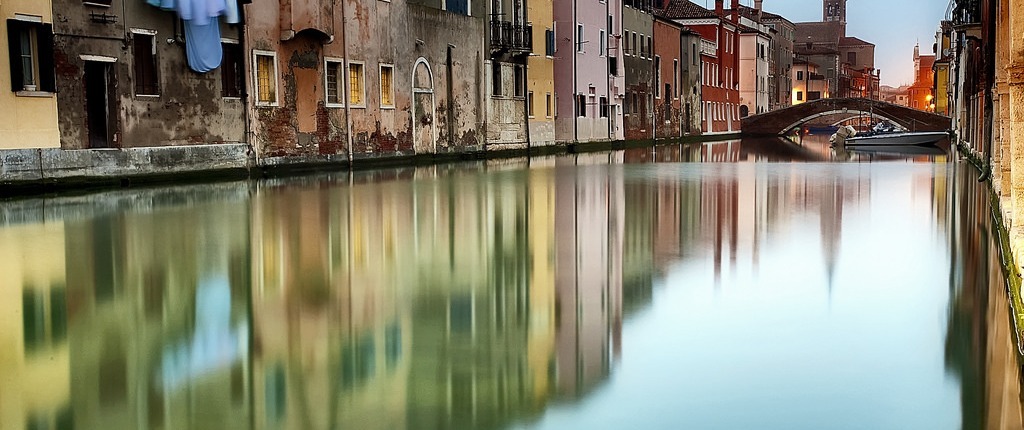
Venice, the Italian capital of beauty, is one of the most visited tourist destinations in Italy. Every year, the lagoon city is assaulted by millions of visitors, fascinated by its unique urban structure. Yet the world does not start and does not end in Venice! Nearby there are numerous interesting places to discover, where you can take a trip in the history and secrets of the ancient Serenissima.
From the villas of the Riviera del Brenta to the historic village of Caorle , passing through the porticoes of Portogruaro and Chioggia , nicknamed the miniature Venice. Find out more about the places to see near the lagoon city par excellence!
Places to see near Venice: Riviera del Brenta
From Padua to Venice there is a landscape of extreme cultural and artistic interest: the Riviera del Brent a. Along the waterway that connects the two cities are the famous Venetian Villas. Among the most important we find Villa Foscarini Rossi (Stra), Villa Foscari in Fusina (built by Palladio, World Heritage Site), Villa Widman (Mira) and Villa Pisani (the most impressive project, located in Stra). The area of the Riviera del Brenta is also ideal for bike tours during which you can plunge into nature and art of the waterway and of numerous Venetian Villas that make up a magical setting. Besides, the 36 km of the Riviera del Brenta can become the ideal route to abandon yourself to a rewarding walk.
Places to see near Venice: Caorle
About 70 km from Venice stands Caorle , included among the 1000 historic villages of Italy. Walking through the town, you will discover its beautiful historic center, where Piazza Vescovado is the master with the Cathedral of Santo Stefano and its bell tower, the symbol of the city. One of the experiences that you absolutely must try is the walk along the cliff which leads to the sanctuary dedicated to the Madonna of the Angel.
In addition to being a village of historical and artistic interest, Caorle boasts 15 kilometers of beaches , which make it an attractive tourist destination during the summer season. In the evening, let yourself be carried away by the lively nightlife of Caorle, its fancy restaurants, creperies, pizzerias, and not least, by the typical “deep fried calamari to take away” !
Places to see near Venice: Portogruaro
Portogruaro is considered by many tourist guides as the capital of eastern Venice . The ancient fortified village, which stands on the bed of the river Lemene, boasts an almost thousand-year history. The foundation dates back to 1140 ; in the following centuries, the city was considered one of the most important commercial hubs for the Venetian territory. Among the main attractions you can visit in Portogruaro are the famous arcades, the Cathedral of Sant’Andrea with its leaning belfry, similar to the tower of Pisa, and its towers, gates of the city. Curiosity : the symbol of Portogruaro are two cranes that make up the Pozzetto del Pilacorte , a fountain located in Piazza della Repubblica.
Places to see around Venice: Chioggia
Nicknamed “the miniature Venice” , Chioggia can offer you an intense stay between the Lombardo and San Domenico canals, as well as its famous streets. The most visited area is the Corso del Popolo and the “grande café” where the twentieth century writer and essayist Curzio Malaparte loved to stroll.
For more experiences Around Venice, visit the dedicated page!
Submit a comment cancel reply.
Your email address will not be published. Required fields are marked *
Save my name, email, and website in this browser for the next time I comment.

40+ Must-see Places & Best things to do in Venice Italy (Tips by a local)
What’s in this article
Are you planning a trip to Venice, Italy, and wondering what the absolute best places to see and things to do in Venice are?
In this guide, I cover all the must-see sights, landmarks, and top tourist attractions in Venice that are well worth your time.
Venice is considered one of the most beautiful cities in the world. It’s also known as “La Serenissima” by many, and was declared a Unesco World Heritage Site, along with its lagoon.
The city’s symbol is the winged lion, also known as the Lion of St. Mark.
It may be a touristy place, but it has a special allure that draws visitors from all over the world. It’s worth visiting!
It’s a city of contradictions:
- both ancient and contemporary;
- frantic yet serene;
- charming but at times just plain old worn out;
- romantic in spots but often overcrowded with tourists;
- beautiful but decaying.
It’s the city of masks, glass, lace, paper, and carnival.
It’s the capital of northern Italy’s Veneto region and is built on more than 100 small islets in a lagoon in the Adriatic Sea that are connected by over 400 bridges.
It has no roads, just canals lined with Renaissance and Gothic palaces.
The historic centre is divided into six sestieri (districts) that are linked by a vast network of bridges that span the canals.
Each “sestiere” is distinct:
Cannaregio is an authentic Venetian district filled with local people. It’s just a short walk from Venice’s Santa Lucia train station.
It’s also home to many Venetian Jews who have lived there for centuries.
Visit the “Ghetto”—the first Jewish ghetto in Europe (established in 1516).
Castello sits on the largest island on the eastern side of the city and has several areas of interest for visitors to Venice.
It’s home to the Venice Biennale headquarters, with its exhibition halls and gardens, and the Riva degli Schiavoni, Venice’s magnificent shoreline that extends over St. Mark’s basin and overlooks the Grand Canal.
Dorsoduro is the most cultural and artistic district of the city. It houses the Accademia Gallery and is home to one of the four bridges that span the Grand Canal, the Ponte dell’Accademia.
Here you will also find Peggy Guggenheim’s modern art collection, housed in her former Palazzo Venier.
San Marco attracts all types of tourists with its famous Basilica di San Marco.
It’s also the city’s lowest point, so it’s frequently subject to the city’s notorious tides.
San Polo is the city’s smallest district.
Santa Croce is Venice’s only district where you can see cars and buses.
Furthermore, the lagoon of Venice is made up of 62 islands, the most well-known and visited of which are Torcello, Murano, and Burano.
However, there are numerous other islands to the north and south of the lagoon, including Sant’Erasmo, Chioggia, and even La Certosa, as well as numerous smaller islands.
And taking a vaporetto between islands while surrounded by the scent of the sea is a once-in-a-lifetime experience.
But let’s get straight to the point and find out what the best things to do in Venice are!
Starting in April 2024, they’re implementing an access fee on certain crowded days. If you’re visiting Venice for the day, you’ll need to pay a 5 euro access fee. This fee applies to day-trippers. However, there is an exemption available for those staying overnight in Venice as well as children under 14. If this applies to you, you can apply for an exemption on the official Venice tourism website . The dates they’ve announced so far are: April 25-30; May 1-5 and 11-12, 18-19, 25-26; June 8-9, 15-16, 22-23, 29-30; and July 6-7, 13-14. On those days you’ll need the QR code from the access fee or exemption proof with you, or you could face a fine up to €300 if stopped without it. It does seem like a bit of a hassle, but Venice has been struggling with the effects of overtourism for a while. This is their attempt to better manage visitor numbers and prioritize residents’ quality of life. The good news is you can easily avoid it by planning your trip for dates outside those announced so far. They may add more dates later in the year too, so it’s worth keeping an eye on requirements if you have Venice on your travel list.
Best places to see and things to do in Venice Italy
Venice is a city that is best seen by foot.
You’ll want to take your time and enjoy the sights, sounds, and smells of this beautiful city.
If you only have one day and want to make the most of your visit, a private tour of the city’s main highlights is the best option.
Here’s my list of must-sees in Venice, organised by sestieri:
The Sestiere San Marco
If you only have a day or so in Venice, it’s very likely that your visit will begin in the Sestiere San Marco. This is where the must-see attractions in Venice can be found:
Explore Piazza San Marco (St. Mark’s Square)
Piazza San Marco is Venice’s largest and most renowned square, which is located right next to the lagoon.
It’s also the only plaza in Venice with that name; all other squares are named “ Campi .”
There is a huge white building covering three of the four sides of St. Mark’s Square. It’s called the Procuratie . It was once the building where the procurators, the people in charge of administering the entire Republic, were located.
Nowadays, it houses the centre of sustainability for the city, the Archeological Museum of Venice , and the Correr Museum .
There are various old cafés on the square, under the characteristic Procuratie’s colonnades, where you can get a coffee; the most famous is the classic Caffè Florian .
It’s not only the oldest café in Venice, it’s also the oldest in the world. It was first opened in 1720.
However, be warned that costs in this area are quite expensive.
St. Mark’s Square , which is always crowded and bustling with traders and tourists, is home to several of the city’s most famous monuments.
Many of the attractions that I’ll shortly describe are located right here or nearby.
Take the elevator up the Campanile di San Marco (St. Mark’s Bell Tower)
Along with the basilica and the square, St. Mark’s Bell Tower is one of Venice’s most recognisable landmarks.
Venetians affectionately refer to it as “ El parón de casa ” (The Master of the House), because it’s the tallest bell tower in the city. Actually, it’s also one of Italy’s tallest bell towers.
The bell tower you see today is not the original one, as it collapsed at the beginning of 1900 because of structural problems.
The new tower, the one you see today, was rebuilt in the same location and in the same design as the old one, and the beautiful entrance, which is located right in front of the Doge’s Palace , was designed by the famous Italian architect Jacopo Sansovino .
The view of Venice from St. Mark’s Bell Tower is spectacular, and from there you can see Venice, the lagoon, St. Mark’s Basilica, and various islands.
It was once used to check if someone was illegally entering the city.
Even if you’re in Venice for just one day, I highly recommend climbing to the top of St. Mark’s Bell Tower. It’s easily accessible, there is also an elevator, and the ticket price is well worth the view.
Visit St. Mark’s Basilica (Basilica di San Marco)
St. Mark’s Basilica is a great symbol of Venice and shouldn’t be missed.
It was built in 829 and houses the relics of Saint Mark, the city’s patron saint .
Its façade is a work of art. It includes five arched doors and a large terrace with the famed four horses from Constantinople.
The interior is just as magnificent as the exterior. The ceiling is totally covered in stunning gold mosaics, and the marble floor features an eye-catching geometric pattern.
If you visit the Basilica between 11:30 a.m. and 12:30 p.m. , the golden mosaics in the church are illuminated.
To get the perfect combination, go to the magnificent St. Mark’s Museum , which also allows you to climb up to the terrace of the Basilica.
A stunning panorama of St. Mark’s Square can be seen from there.
However, plan your time carefully, as a visit to the museum will take at least an hour.
The church doors open at 9.30 a.m., but most visitors arrive much earlier.
That’s because the lines to enter St. Mark’s Basilica can be somewhat long.
I recommend coming before 9 a.m. If you arrive early, you will have more time to tour the rest of the city.
If you don’t want to queue, you can book your ticket online. It costs €3.
Alternatively, you might take a guided tour to avoid the queue.
See the inner workings of The Clock Tower (Torre Dell’Orologio)
The clock tower (Torre Dell’Orologio), also known as the Moors’ Tower ( Torre dei Mori ), is another historical monument to the left of St. Mark’s Basilica, which has been working for over 500 years.
This tall, slender building is one of the most important Renaissance palaces in Venice, among others.
On the façade of the tower, in the lowest box, is the marble astronomical clock. The dial of the clock displays the time, day, moon phases, and zodiac signs. This structure is truly a masterpiece of technology and engineering.
If you look above the traditional dial, you’ll see the first digital clock in the world.
The Winged Lion , which is the city’s symbol, is depicted in the highest panel against a blue background with golden stars.
On top of the tower is the Moors’ bell from 1497 and two bronze statues of Moors striking the hours. They’re not doing it at the exact hour, though.
They are twin statues, but one lacks a beard. The one with the beard is known as the “old” and represents the past, so he’s striking the hours a few minutes before the actual time.
The other is known as the “young,” representing the future, so he’s striking the hours a few minutes later than the actual time. This is a reflection of both the past and the future!
Many tourists are unaware that they may book a special guided tour to see the inner workings of this fantastic time machine.
You’ll also have exclusive access to the terrace and rooftop, where you may meet the two Moors up close. From here, you’ll have a totally unique view of Venice.
The Venice Museum pass includes admission to the Clock Tower for an additional fee. You must book your visit in advance, either online for a fee or in person at the Correr Museum, which is located at the opposite end of St. Mark’s Square.
Tour the Doge’s Palace (or Palazzo Ducale)
The Doge’s Palace is another symbol of Venice. This Gothic palace was once home to Venice’s rulers and was historically known as the “ Palazzo Dogale ” since it was the seat of the doge.
The palace was a fortified castle in the ninth century.
It was, however, repeatedly destroyed by fire, rebuilt multiple times, and ultimately used as a prison.
Today, it contains the Doge’s Palace Civic Museum , which contains an amazing artistic beauty comprised of Byzantine, Gothic, and Renaissance architectural elements.
The inside is both magnificent and interesting, with several works of art by Titian, Tintoretto , and Bellini.
There is no better way to see the Doge’s Palace than through the eyes of a local who can describe the building’s rich history.
The tour also includes access to the well-known Bridge of Sighs.
You can also skip the line with this reserved entry admission ticket !
If you’re interested in Venice’s history, this is a fantastic option !
The Bridge of Sighs (Ponte dei Sospiri)
The Bridge of Sighs is one of Venice’s most iconic symbols and is just a few steps from St. Mark’s Square.
It was built in 1600 to connect the New Prison (Italian: Prigioni Nuove) to the interrogation rooms in the Doge’s Palace. It crosses the Rio di Palazzo.
The most prominent viewing point is from the Ponte della Paglia , which connects St. Mark’s Square to Riva degli Schiavoni.
Thousands of people take pictures here every day with the Bridge of Sighs in the background since it’s regarded as one of the most romantic sites in Venice.
As a result, it’s also known as the Bridge of Love or the Bridge of Lovers; many gondolas pass this bridge, providing a spectacular perspective of the lagoon.
Many tourists don’t know, however, that it’s actually called the Bridge of Sighs because it was built to connect the prisons with the Doge’s Palace.
All prisoners had to pass through this narrow tunnel in order to receive their final sentence, which may have condemned them to a harsh fate.
They could gaze out the grates, sighing because it was possibly the last time they would see the sea and the magnificent vista of the lagoon.
The old jails were known as “piombi” because they were in direct contact with the lead-roofed ceiling. This made the prisons extremely hot in the summer and extremely cold in the winter.
If you’re wondering if you can go inside the bridge, the answer is yes, if you’ve booked a Doge’s Palace Tour . You may get the same amazing view from the grate that prisoners awaiting sentencing used to have.
Enjoy the view from Palazzo Contarini del Bovolo staircase
The Palazzo Contarini del Bovolo is another must-see attraction in Venice’s San Marco district and a cool hidden gem in Venice.
If you’ve climbed St. Mark’s bell tower, you’ve probably seen it from every angle. In fact, the building is clearly visible from the top of St. Mark’s bell tower.
What makes this palace so interesting is the same-named spiral staircase, Scala Contarini del Bovolo. This late Gothic structure was built for the Contarini family between the 14th and 15th centuries and is close to Campo Manin and the Rio di San Luca.
The renowned spiral staircase, which earned the family the nickname “del Bovolo,” was first added to the palace at the end of the 15th century. This is characterised by a series of loggias and arches in the Renaissance style.
The staircase was carved inside a tower structure and provides entrance to a loggia that mimics its architecture on each of its five storeys. It’s known as the “Bovolo,” which is a Venetian term for snails, as it resembles a snail shell.
Finally, on the top floor is a domed belvedere with a stunning view of the city.
Book your visit here !
Visit Teatro La Fenice
The largest and most famous opera house in Venice is La Fenice, which is also located in the sestiere San Marco.
It was opened in 1792 and is considered one of the most famous opera houses in the world, hosting the most important and popular opera and theatre seasons.
The premieres of the most famous Italian composers, such as Verdi, Bellini, and Rossini, took place here.
It’s always enchanting, whether you go only to see it or to attend a live performance.
Despite the fact that it has been restored multiple times after the fires, the outcome is genuinely extraordinary: the stage space and ceiling are stunning.
The facade is especially remarkable, with white marble and columns reminiscent of typical Italian villa architecture.
If you visit the theatre, you’ll get a useful audio guide at the entrance that describes the history of the theatre and the artists who made it famous, with Maria Callas in the lead.
The best time to visit would be during orchestra practise.
Daily tours of La Fenice Theater are available between 9:30 a.m. and 6 p.m., though schedules may be changed for artistic or technical reasons.
If you decide to attend a performance, make sure you are dressed appropriately; more information may be found here !
Walk through The Royal Gardens
The Royal Gardens were commissioned by Napoleon, who had the old granary of Venice demolished to build them; they were then renovated by the Austrians who arrived following Napoleon’s defeat.
They built a greenhouse beside the Zecca bridge and a neoclassical-style Kaffeehaus on the opposite side.
The royal gardens were recently restored and were reopened to inhabitants and tourists in 2019.
They aren’t particularly large or spectacular, and there aren’t many exotic species to admire, but they are located on the Grand Canal, close to St. Mark’s Square.
There is also a lovely café near the royal gardens where you may stop for a snack.
These gardens are also a great spot to rest for a few minutes in the shade, especially if you’re visiting Venice on a hot day.
Go to Isola di San Giorgio Maggiore
When you arrive in San Marco, don’t miss the magical atmosphere of the only Venetian square; then, after walking between the Caffè Florian and the wonderful golden mosaics of the Basilica, go to the island of San Giorgio.
The island has a small dock for small motor and sailing boats, many exhibition spaces for temporary exhibitions, a wonderful Basilica built by architects Palladio and Longhena and with frescoes by Tintoretto, a monastery, and the Giorgio Cini Foundation’s beautiful Borges maze.
However, the island of San Giorgio is also an excellent location for viewing the labyrinth and the fish-shaped city from above. Venice has the silhouette of a fish, and like a fish without water, it cannot live; it is a subtle detail, but one that is easy to imagine from a panoramic perspective.
“Venice is a fish” is also the title of a beautiful book dedicated to this fantastic city on the water by Tiziano Scarpa.
San Giorgio is easily accessible by vaporetto number 2, which departs from the San Zaccaria landing stage (terminal), directly in front of the “Hotel Danieli.”
You can purchase the card to travel by vaporetto to all of the islands in the Venice lagoon here .
The Sestiere Castello
The sestiere Castello is located in the easternmost area of Venice, near the sestiere San Marco.
It’s one of the city’s largest sestieri, and there are fewer tourists here.
It’s one of those Venice districts that can be explored simply by getting lost in its “calli,” which are actually enormous in size when compared to those in the nearby San Marco district.
If you are in town for the Venice Biennale , you will undoubtedly visit this sestiere because the majority of the events are held here, in the Arsenale and the surrounding gardens.
If the Biennale is not taking place, some areas will be closed to visitors, but it’s still worth spending a few hours exploring its sights.
Here’s what to see in the Castello district:
Stroll at Riva degli Schiavoni
Riva degli Schiavoni is the name of the long pedestrian road that runs along the lagoon from San Marco to the Giardini della Biennale in the sestiere Castello, which houses the city’s most luxurious hotels.
The term has historical origins, dating back to the time when merchants from Dalmatia, which was known as Schiavonia during the Venetian Republic, landed with their ships and set up shop on this stretch of the Lagoon.
The Venice shoreline was an essential part of the city’s commercial port because of its proximity to the city’s political and economic power centres.
Today, it’s a bustling transit point due to the presence of several historical and artistically significant buildings, beginning with the Palazzo delle Prigioni, which was erected as an extension of the Doge’s jails. Casanova was imprisoned here, and his escape from this structure is described in the book “My Escape from Venice Prison.”
Continuing along Riva degli Schiavoni, you’ll then come across Palazzo Dandolo, now Hotel Danieli, a stunning 15th-century structure; Chiesa della Pietà, also known as Vivaldi’s church, since he taught singing in the adjoining convent and conservatory; as well as various bars and kiosks.
The view of San Giorgio Maggiore and the lagoon is also spectacular from here.
Visit the Arsenale di Venezia
The Venetian Arsenale, which covers a large area in the lagoon city’s north-eastern outskirts, is an old complex of shipyards and workshops that produced enough ships for the “Serenissima” to meet the demands of a naval power that was, for a long time, one of the most powerful in the world.
The word “Arsenale” comes from the Arabic word “darsina’a,” which means “house of industry, dockyard.” It was the largest in the world for centuries, with over 16,000 employees at its peak.
It’s reachable via a pleasant walk through the Castello district’s alleyways, where the calli are broader and it’s common to come across a field with laundry hanging out to dry in the sun.
This is mainly a residential area, and there are fewer tourists.
Venice Arsenal is currently owned by the Italian Navy and, for the most part, the municipality of Venice, which uses it to host the world-famous Venice Biennale, the renowned contemporary art exhibition.
Unfortunately, much of the Arsenale is not open to the public outside of these or other occasions, but it’s still worth a stroll to this point to explore the Castello sestiere.
Explore Campo Santi Giovanni e Paolo
Campo Santi Giovanni e Paolo is one of Venice’s largest campo (square), located in the sestiere of Castello, near to San Marco and Cannaregio districts.
The campo is well-known for Verrocchio’s monument to Bartolomeo Colleoni and the church of Santi Giovanni e Paolo, as well as the Scuola Grande di San Marco, a stunning Renaissance palace that serves as the entrance to the Ospedale Civile SS. John and Paul of Venice.
Check out the Libreria Acqua Alta (bookstore)
Every reader’s dream is to get immersed in books, in a world of words and vivid fantasies. The Libreria Acqua Alta is the ideal place to let your mind wander and seek out the city of Venice’s most hidden and ancient stories.
It’s located on Calle Lunga Santa Maria Formosa and is one of the world’s most unique bookshops.
A massive collection of new and secondhand books is housed inside boats, gondolas, canoes, and tubs. Books are also used as real furniture in this place. Old encyclopaedias have been transformed into beautiful stairways, or they have been used to cover the walls of the outdoor courtyards, transforming them into colourful surfaces. The decor is completed with balls, oars, and dummies.
It’s truly a special site and a must-see, but I recommend visiting during off-peak hours because, thanks to Instagram, it has become a hotspot, and it’s frequently so crowded that you can’t even get inside.
Find the most intriguing house in Venice
Near the Libreria there’s a very unusual house, Palazzo as it’s the only house in Venice to be surrounded on three sides by water from as many as three canals.
At the location where this odd house is located, the Rio Santa Marina splits into two canals: the Rio di S. Giovanni Laterano and the Rio Tetta. This feature makes this house one of the most intriguing and photographed in Venice, despite the fact that it’s not a well-known palace.
This house is one of the most famous in the city, but it’s well hidden from tourists and off the beaten path.
Sestiere Dorsoduro (District)
Dorsoduro is the city’s southernmost district, linked to the San Marco district by the famous Accademia bridge. It’s bounded by the Grand Canal and the Giudecca Canal.
Here you’ll find the majority of the city’s universities, as well as several of the most well-known Venetian museums.
It’s full of gorgeous calli and campi that are well worth a stroll through, and there are also far fewer tourists than in the neighbouring sestiere of San Marco, allowing you to wander around more freely.
And these are the things not to be missed in the Dorsoduro sestiere:
Walk through Ponte Dell’Accademia (Accademia bridge)
The Accademia Bridge is a lovely wooden bridge and is one of the four that span the Gran Canal.
The first version was built in 1854, and the one we see today dates from 1933, when it was replaced because the old version had become old and not as solid.
The beautiful church of Santa Maria della Salute can be seen from Ponte dell’Accademia, and it’s not far from St. Mark’s Square.
Visit the Gallerie dell’Accademia (Accademia Galleries)
The Accademia Galleries are a must-see for anyone interested in the works of important artists from the 14th to the Renaissance periods, such as Tintoretto, Titian, Tiepolo, and Longhi.
In 1807, Napoleon III decided to collect the enormous number of artistic treasures accumulated during the suppression of hundreds of churches and religious institutions and make them available to the students of the Accademia di Belle Arti, which had recently been assigned the Santa Maria della Carità building complex.
Ten years later, the Gallerie dell’Accademia was opened, and from 1817 to today, visitors can admire the greatest works of the Serenissima’s Grand Masters in its 24 rooms.
Among others, one of Leonardo da Vinci’s most important works, “The Vitruvian Man,” is carefully guarded and rarely exhibited by the Galleries’ curators to avoid deterioration.
If you’re really into art, you shouldn’t miss it on your visit to Venice.
Admire Peggy Guggenheim’s Collection
The Guggenheim museum is a true temple of early twentieth-century European and American art, built over years of research by the eccentric Peggy Guggenheim, a brilliant heiress, art dealer, and patron.
The Peggy Guggenheim Collection in Venice is housed in the Palazzo Venier dei Leoni and features works by Picasso, Dali, Modigliani, Carrà, and many others.
Once inside, you can explore the garden, which contains numerous sculptures by artists such as Henry Moore and Alberto Giacometti, before proceeding to the rooms of the Palazzo, which was once the residence of the exceptional collector herself.
Explore Church of St. Mary of health (Santa Maria Della Salute)
The church of Santa Maria della Salute is located at the eastern end of the Dorsoduro sestiere, and its high dome is clearly visible from both St. Mark’s Square and the island of Giudecca, perfectly complementing Venice’s skyline.
The church is an excellent representation of Venetian Baroque architecture, developed following Palladio’s models.
It was built by Senate mandate to fulfil a commitment made after an awful plague epidemic that killed over 47,000 people in the first half of the 17th century.
It was completed in 1687 and has the shape of a crown, as designed by Baldassare Longhena.
This is the most important church in the Dorsoduro sestiere, with an octagonal design and a massive white dome capped by volute buttresses.
The inside is much grander, with a massive central hall surrounded by columns.
Take in the view from Punta della Dogana
Another must-see when exploring the Dorsoduro sestiere is the stroll to Punta della Dogana, also known as Punta della Salute or Punta (Dogana) da Már.
It’s a triangular point that extends the Dorsoduro district and splits the Grand Canal and the Giudecca Canal, not far from St. Mark’s Square.
Three notable architectural complexes are located in this area: the Basilica of Santa Maria della Salute; the patriarchal seminary; and the Dogana da Mar complex, which gives the area its name.
Following Tadao Ando’s restoration, Punta della Dogana now houses the Francois Pinault Collection.
From Punta della Dogana viewpoint, you can see St. Mark’s Square on one side and the island with the majestic church of Saint Giorgio Maggiore on the other, which is divided by a small canal from the Giudecca Island. The Giudecca island is very residential. There are just a couple of churches, Zitelle Church and Redentore Church.
See how Gondolas are made at “Lo Squero di San Trovaso”
While strolling around the Dorsoduro sestiere’s calli, you may come across the Squero di San Trovaso. This building is made up of low structures and a tiny open space that directly overlooks the canals.
The Venetian word “squero” is derived from the word “squara,” which means “a group of people working together to create boats.” A squero is a boatyard, and this one is unique. It’s the birthplace of the distinctive, sleek black vessels known as Venetian gondolas.
The Squero San Trovaso is one of the city’s oldest squeros, dating back to 1600. During this time, Venetian shipwrights began to repair and manufacture gondolas.
The Squero di San Trovaso is particularly notable for its distinctive architecture, which resembles mountain cottages. And there is a twofold explanation for this: on one hand, both the carpenters and the building wood were from Cadore; on the other hand, the slope of the forecourt and the canopy that partially covered it were handy in case of rain, as well as for storing work materials.
It takes eight different types of wood and months of work to make a gondola.
They are still totally handcrafted by the few remaining “squeraroli” (master craftsmen), without the use of written designs, and they customise each boat to the buyer’s specifications. Each one is unique.
If you’re interested, you can book guided tours of the squero in order to view all of the production techniques. The visit lasts roughly 30 minutes.
Alternatively, you may watch the squeraroli at work while sipping a spritz at the legendary Osteria Al Squero on the other bank.
Enjoy the sunset from Fondamenta Zattere (Zattere waterfront)
Fondamenta Zattere is a lovely promenade that runs alongside the Giudecca Canal, almost like a seafront.
Even Venetians prefer it to the overly touristy Riva degli Schiavoni for a wonderful walk in the sun.
The view of the islands and the Giudecca Canal from here is stunning.
It’s a very quiet promenade lined with important churches like the Gesuati, as well as the Madonna della Salute, period palazzi, and a few vintage shops.
One of the most beautiful sunsets can be seen from here. When you arrive at Fondamenta Zattere al Ponte Lungo, treat yourself to a “gianduiotto” from Gelateria Nico and watch the sunset over the lagoon.
Sestiere Cannaregio
The Cannaregio sestiere is another of Venice’s biggest districts, located in the northern part of the city.
This is where Venetians who have chosen to reside in the historic centre live. There are several bustling bacari, especially after work hours, making it a perfect location for a bacaro tour.
Although it’s relatively unknown to most tourists, there is a lot to see here as well.
Let’s find it out:
Do a walking tour around Cannaregio District
Cannaregio is one of the six sestieri (districts) of Venice, located north of the Grand Canal, and it’s one of my favourite places to visit in Venice because it’s very authentic and not as crowded as other areas of the city.
The sestiere of Cannaregio is Venice’s largest and most populous sestiere. It’s crossed by the Cannaregio Canal, the only one in the ancient city that, like the Grand Canal, is traversed by vaporettos. It connects the lagoon to the Grand Canal.
The sestiere’s name is thought to stem from the existence of enormous reed beds (land cultivated with common reeds) before the area was reclaimed and afterwards populated.
The Cannaregio district is a great place to get a feel for everyday Venice; it’s home to a number of small cafes, restaurants, and shops where you can stop for coffee, a cicchetto, or lunch.
It takes around ten minutes to walk from Venice’s Santa Lucia Station to the Cannaregio quarter. You must exit the station and turn left onto Fondamenta degli Scalzi, then walk along Rio Terà Lista di Spagna. You will then be in the heart of the Cannaregio sestiere.
Visit the Jewish Ghetto of Venice.
The Cannaregio district is also home to the Jewish Ghetto of Venice, one of the oldest still existing in Europe.
The Venetian ghetto was established in 1516 and is considered to be the first segregated community.
It was a small island separated by a canal, with only two bridges that were locked at night.
This was done to protect Jewish citizens against abuse and assaults by local Christians.
The Ghetto is home to Venice’s small and lively Jewish community.
There you will discover a world that has been preserved for centuries, including the sights, smells, and traditions of this historic quarter.
It’s divided into three areas: Ghetto Vecchio, Ghetto Nuovo, and Ghetto Nuovissimo.
The New Ghetto is the oldest area that was first inhabited by Jews, and to accommodate the entire population, the houses were developed vertically, reaching up to eight floors high.
Around the main square, you can see the presence of five synagogues, the places of worship of the Jews.They are located mainly on the top of the buildings and are characterized by the presence of five windows aligned, in symbol of the books of the Torah.
The synagogues and schools are still in use today.
This location alone has a lot to see and learn. If you want to get the full experience, I highly recommend joining this Ghetto walking tour led by a local .
If you prefer, you can visit the Jewish Museum to learn about the history of the Jewish community in Venice and immerse yourself in its inspiring atmosphere.
The Jewish Museum and a visit to the synagogues
Every day from June 1 to September 30: 10 a.m. to 7 p.m.
From October 1 to May 31, the hours are 10 a.m. to 5.30 p.m. daily.
Saturday closed
Visits to the synagogues take place every 30 minutes, starting at 10:30 am.
Stroll along Fondamenta Degli Ormesini
Leaving Campo del Ghetto Novo, you cross the iron bridge to reach Fondamenta degli Ormesini.
A fondamenta is a section of road in Venice that runs beside a canal or a rio.
Fondamenta degli Ormesini is Venice’s longest, and is the natural continuation of Fondamenta della Misericordia, a street that runs alongside Rio de la Misericordia.
This is where Venetians mingle with tourists (though there aren’t many of them), and students.
It’s peaceful in the mornings and early afternoons, making it an ideal spot for a stroll.
There are numerous tiny pubs here where you can stop for a coffee, a spritz, or an “ombra,” as a glass of wine is known in Venice.
Cross Ponte Chiodo
Ponte Chiodo is an ancient bridge in the Sestiere di Cannaregio, within a few metres of the Scuola Grande della Misericordia, one of the renowned architect Jacopo Sansovino’s works.
It’s Venice’s only bridge without a parapet, or railing.
Originally, all bridges in Venice were constructed without side defences known as parapets, or bande.
However, beginning in the nineteenth century, they were all equipped with parapets for safety reasons.
Nowadays, there are only two bridges without safety barriers: Ponte Chiodo in Venice and Ponte del Diavolo on the island of Torcello.
It’s definitely one of those hidden gems worth checking out as part of a secret Venice tour.
Stroll along Strada Nova and visit Campo Santa Sofia
From Ponte Chiodo, continue on Fondamenta San Felice, and after crossing the San Felice bridge, you’ll find yourself on Strada Nova. While you’re in the area, if you’re feeling hungry, you should try the meatballs at La Vedova; they’re the best in Venice.
After regenerating, proceed to Campo Santa Sofia, which overlooks the Grand Canal.
The campo’s name comes from the church of S. Sofia, which was rebuilt in the late 17th century to a design by Antonio Gaspari, whose bell tower and façade stand just behind a 19th-century building lining the Strada Nuova.
From here you can cross the Grand Canal on a gondola ferry, which connects Campo Santa Sofia directly with the Pescheria, known as the Rialto market.
Find the narrowest “calle” in Venice.
Calle Varisco is Venice’s smallest street, measuring only 53 cm wide. It’s located in the Cannaregio sestiere and has a view of the Rio dei SS. Apostoli.
Actually, only the last segment of the calle is that narrow, leading to the canal “introduced” by a Doric column.
Calle Varisco is located around midway between the Rialto Bridge and Fondamenta Nove.
Visit the Churches of Santa Maria Dei Miracoli & Santa Maria Assunta
If you enjoy religious architecture, in the Cannaregio sestiere you’ll find the Church of Santa Maria dei Miracoli overlooking the Campo dei Miracoli, a quiet and little-known place.
The church is a work of art, a little marble treasure chest. It’s considered Pietro Lombardo’s masterpiece and the first example of Renaissance architecture in Venice.
Instead, the Church of Santa Maria Assunta can be found at Campo dei Gesuiti, not far from Fondamenta Nove.
It was built in the 12th century and renovated in the 18th century, and it boasts a majestic Baroque facade filled with statues. The interior design has white and green marble inlays on the walls, which are accented by gilded stucco.
The pulpit is distinctive, with stone drapery that gives the appearance of fabric. The altar, with its twisted columns encircling the sculptural complex with the cross, is also worth seeing.
Aside from that, there are masterpieces by Tintoretto (the Assumption of the Virgin) and Titian (Martyrdom of St. Lawrence).
The Church of the Scalzi, also known as the Church of Santa Maria di Nazareth, is located near the station and was built at the initiative of the Carmelitani Scalzi. It is an example of Baroque art. This church has a view of the Grand Canal.
The Church of the Madonna dell’Orto is another noteworthy church in the Cannaregio sestiere. A true example of Venetian Gothic architecture, with paintings by Tintoretto on the inside.
Take a Bacaro tour
A trip to Venice isn’t complete without a stop at a bacaro, and Cannaregio is the sestiere with the best bacari.
These places, which are often open throughout the day and late into the evening, provide a fast bite to eat: “un cicchetto e un’ombra.”
A cicchetto is a little taste of hot or cold fish, and cold cuts served on a piece of bread. Tramezzini, bread with baccalà mantecato, sarde in saor, meatballs, and many other Venetian specialties are examples. The composition of cicchetti changes based on the season.
“Un’ombra”, on the other hand, is simply a glass of wine. It’s thought to have originated from the historical custom of merchants positioning their stalls under the shade of St Mark’s bell tower to keep the wine cool; still today, people in the floating city say “andar per ombre” (to go for shadows) to imply the mid-morning snack routine.
There are several bacari (small pubs) in Venice that serve cicchetti, and they are especially popular among Venetians, which is why you will find them in less touristy areas of the city.
Get lost in a maze of ”calli” and stumble upon Venice’s mysterious Campo dei Mori
Campo dei Mori is a square named after three statues set in the wall of the Palazzo Mastelli del Cammello (the well-known palace with a camel on its façade).
The Mastelli family, who migrated to Venice in the Middle Ages from the Morea (thus the name “Mori”), built this mansion and the other buildings in Campo dei Mori.
The family consisted of three brothers: Rioba, Sandi, and Alfani, who traded in silks and spices but also managed a bank.
A swindled lady, according to legend, prayed to Santa Maria Maddalena to curse the three brothers who were turned into sculptures, which were then put in a niche in
Campo dei Mori as a warning to all Venetians.
The most famous of the three statues is that of Sior Antonio Rioba; in the nineteenth century, the statue lost its nose and was repaired with an improvised piece of iron.
This gave rise to the belief that rubbing it brought good luck.
At Fondamenta dei Mori, at the foot of the bridge, is the 15th century Gothic house that was the home of the famous Venetian painter Tintoretto , where he died in 1594.
Near this campo is also the church of Madonna dell’Orto , which is one of the most beautiful examples of gothic architecture in Venice. Inside you’ll find 10 large paintings by Tintoretto, who is also buried here.
Sestieri San Polo and Santa Croce
The districts of Santa Croce (further west) and San Polo (further east and up to St. Mark’s) are located on the other side of the Grand Canal, in front of the Cannaregio district.
Some of Venice’s most famous sites can be found here among old palazzi and scenic alleyways, beginning with the Rialto bridge, which connects Cannaregio to San Polo.
Visit the Grand Canal and the Rialto Bridge ( Ponte di Rialto )
There are four large bridges that span the Grand Canal in Venice. Rialto Bridge is the oldest, and it’s also one of the city’s most famous landmarks.
It’s well known for both its architecture and its history.
Until the mid-1800s, it was the only bridge that allowed people to cross the Grand Canal.
For many years, it was the economic centre of Venice.
It was designed by architect Antonio da Ponte and built between 1588 and 1591 to replace the previous wooden construction, which had collapsed twice and burned on multiple occasions.
The bridge’s structure has two inclined ramps connected by a portico in the centre, and houses 24 tiny shops for tourists on both sides.
The Rialto Bridge offers one of the most spectacular views of the entire city.
Check out the Rialto Market
Rialto’s Market is one of the best places to experience authentic Venetian folklore.
It’s one of the oldest in Venice and is open every day except Sunday.
The culinary tradition of the floating city is naturally based on fish, which is always purchased fresh at the fish market.
That’s why the market is usually busy, with crowds of Venetians buying ingredients for Venetian cuisine and tourists intrigued by the picturesque market and its plethora of goods: fruit, vegetables, and fish.
The market area is now so busy and touristy that it has lost some of its primary business character and has turned into a meeting place as well.
Indeed, the neighborhood is teeming with a growing number of tourist-related activities and cafes for aperitifs and evening gatherings, where one can linger to enjoy a traditional Venetian ciccheto, or some fresh fruit.
A tidbit about the Rialto fish market: One of the scenes in the movie “The Tourist,” starring Johnny Depp and Angelina Jolie, was shot right here.
Rooftop view over the Grand Canal from Fondaco dei Tedeschi
Head to Fondaco dei Tedeschi’s rooftop terrace for a unique view of Venice’s main boulevard. This old building in Venice is just steps away from the Rialto Bridge.
It has stood since the 13th century and was rebuilt after a fire between 1505 and 1508.
It was home to German merchants who used it as a warehouse and lodging.
Fondaco is derived from the Arabic term funduq, which means “warehouse,” and the Italian word “Tedeschi” that means “Germans.”
It now houses a high-end department store selling luxurious goods.
The terrace is free to visit, but reservations are required. It is open every day from 10:30 a.m. until 6:30 p.m. Book here !
Admire the Basilica Santa Maria Gloriosa dei Frari
The Basilica of Santa Maria Gloriosa dei Frari, often known as the Basilica dei Frari, is Venice’s largest church. It’s located in the heart of the San Polo district, on the Campo dei Frari, and its façade is framed by a tiny canal.
The plain and unimpressive exterior stands in stark contrast to the beautiful interior.
The church took over a century to build and was finished in the mid-15th century. Its bell tower, which dates back to the 14th century, is the second highest in Venice.
What will catch your attention as soon as you enter the Basilica is a Titian painting titled “Assumption of the Virgin.” It’s on the main altar, surrounded by stained-glass windows.
Other points of interest include Antonio Canova’s mausoleum (Canova was an 18th century Italian sculptor). The artist’s students created the funeral monument. You will be surprised by its monumental size, sculptures, and pyramid shape.
And the choir chapel houses magnificent paintings by Vivarini and Bellini.
Walk through Ponte degli Scalzi
The Ponte degli Scalzi, one of the bridges that span the Grand Canal, connects the sestiere of Santa Croce to that of Cannaregio.
The Ponte degli Scalzi is located near two churches on opposing banks of the canal: the church of Santa Maria di Nazareth, also known as the Scalzi church after the monks who built it, and the church of San Simeon Piccolo.
It’s also known as the Station Bridge because of its proximity to the railway station.
Experience the Grand Canal (Canal Grande) on a Vaporetto tour
As you know, Venice is also known as the “floating city” because there are no streets, only canals.
The Grand Canal is Venice’s largest and most famous canal; it could be considered the city’s thoroughfare.
It is actually 4 kilometres (2.5 miles) long and runs through Venice’s entire historic center, dividing it in half and forming an “s” shape.
Some of the most beautiful Venetian architecture can be found here.
You may be surprised to learn that the Grand Canal is only crossed by four bridges and has only a few promenades along it.
The area around the Rialto Bridge is the most beautiful part of the canal that you can explore on foot.
Here you’ll find large waterfront promenades lined with restaurants and cafés. It’s a nice place to have a drink and watch the canal go by.
However, the best way to explore the Grand Canal’s surroundings is from the water, which you can do by taking a vaporetto , or gondola.
A Vaporetto (water taxi) is essentially a floating public bus that makes frequent stops across the city and is the most affordable and convenient way to get around Venice.
A Vaporetto tour of the Grand Canal is a must-do since it allows you to admire Venetian art from a different angle.
The section of the canal south-west of the Rialto Bridge is the most beautiful and should not be missed. So, if you take a boat between St. Mark’s Square and the Rialto Bridge, you will see the best of Venice!
You can also take these water taxis to reach other islands near Venice, such as Murano, Burano, and Torcello.
If you’re on a tight budget and visiting Venice, this is the best way to get around!
Take a gondola ride
If you want to get the classic “Venice” experience, a gondola ride is a must.
Riding a gondola is probably the most famous thing to do in Venice and it’s definitely something you should try at least once, even if it’s not cheap.
I highly recommend going for a ride at sunset when the city is less crowded and all the buildings and churches are lit up.
There are plenty of places where you can take one—the Grand Canal is lined with them, and there are many options on the smaller canals as well.
Hop on a Gondola Traghetto (Gondola Ferry)
Have you ever wondered how Venetians get from one side of the Grand Canal to the other when none of the four bridges are nearby? They simply take the gondola ferry.
At various points along the Grand Canal (away from the bridges), you can travel from one bank to the other in a gondola piloted by two gondoliers who shift between the banks. Locals pay less than one euro, while tourists pay two euros. The Gondola has a capacity of 14 passengers.
This is the experience for you if you want to feel the thrill of riding a gondola without spending a lot of money.
One is the Santa Sofia ferry, which departs from Strada Nuova and crosses the Grand Canal to take you to the Pescheria.
Simply follow the ‘Traghetto’ signs to the nearest landing, which will be a little wooden pier along the Grand Canal’s edge. If the service is active, the boats normally shuttle continuously, so you won’t have to wait long.
If you have a Venezia Unica card , the ticket costs €0.70; if you don’t have the card, the ticket costs €2.00.
Go on a Venetian Mask making class
Venice is known to be one of the most romantic cities in the world, but its beauty isn’t just skin deep.
The city’s famous mask-making tradition dates back to at least the 14th century, when Carnival first came to Venice. The masks were worn as part of elaborate disguises, allowing people to take on a new identity during this time of year.
Venetian masks have been made since ancient times, but they were particularly popular during the Carnival season. They were worn by nobles as well as commoners during celebrations.
The tradition continues today; during Carnival all over Italy, people wear colourful masks, mostly based on historical characters or famous people.
Venice’s mask-making tradition has been passed down through generations of artisans who still create beautiful masks today.
To really appreciate this art form and the patience and mastery required to make the perfect mask, join this mask-making workshop with a local master artisan to learn about the history of this ancient tradition.
Visit Murano glass factory and join a Murano Glass workshop with a Local Artisan
While you’re in Venice, take a tour of the Murano glass factory. You’ll see how this famous Italian art form is made, and you can even buy some souvenirs.
These works of art come in many shapes and sizes, and each one is one-of-a-kind since each one is hand-blown by trained craftsmen utilising centuries-old techniques passed down through generations.
They make everything from Murano glass chandeliers and wine stoppers to contemporary art glass and glass jewellery.
Watching a craftsman at work may look simple, but if you really want to learn the secrets of Murano glassmaking techniques, getting hands-on experience is the best way to truly appreciate what’s involved.
If you wish you can take a private glassmaking lesson where you’ll get hands-on experience with one of Venice’s most renowned craftsmen.
This workshop with a local artisan includes all materials, including your own marvellous glass artwork to take home, as well as a 10% discount on the artist’s glassworks.
Take a boat ride to Burano Island in Venice
Take a boat ride to the cheerful island of Burano, an ancient fishing village founded in 639 AD.
Visit the church of San Martino, which has been recently restored. The church has beautiful frescoes and paintings on display, including works by Giambattista Tiepolo and Francesco Guardi.
Visit the Burano Lace Museum, a beautiful gothic building that was once the Lace School, where young Burano girls learned to make lace.
Burano is still regarded as the most expensive lace in the world.
One Day Itinerary
Venice is one of the world’s most popular tourist destinations, with something for everyone.
Although I believe that visiting Venice requires more than one day, I also understand that many people, for various reasons, are unable to stay longer than one day.
So, to help you better plan your time in Venice here is a one day itinerary suggestion:
Begin your day with a Vaporetto tour along the Grand Canal. Hop on vaporetto line 1 from either Piazzale Roma or the train station.
If you get to the front of the line at Piazzale Roma, or the at the station, you might be able to choose an outdoor seat if you move quickly, this way you’ll have a better view.
However, the service runs every ten minutes, so you could always be the first to board the next vaporetto.
After about 45 minutes, get off at San Zaccaria. This is the stop after St. Mark’s, so this way you’ll have the opportunity to admired St Mark’s Square (Piazza San Marco) and the Doge Palace from the water.
Visit St Mark’s Basilica, the Campanile, the Doge Palace, the Bridge of sighs. To get the most out of it you may want to book a tour with a local guide. Treat yourself at one of the cafes in the square.
After exploring St Mark’s, visit the Rialto district, wander around the market, take in the view from one of the many cafes in the area, book a visit at T Fondaco dei Tedeschi for a top view and possibly book a private tour with a local guide to get a feel for the city.
If you can stay for three days, you can get a real sense of Venice by visiting its galleries and churches, which are filled with important works of art, as well as venturing off the beaten path. A week is sufficient time to explore not only the city, but also the lagoon and surrounding area, as well as to visit lands and travel to a nearby mainland town, such as Verona , Bologna , or Padua.
Check out Venice best tours
How to get to there?
There are several ways of getting to Venice:
The main international hub for Venice is Venice Marco Polo Airport (VCE). The airport is connected to the city by water taxi, by the Alilaguna motor boat, or by using the “Venezia Air Terminal” bus.
The island of Venice can also be reached via Treviso Airport (TSF) by taking the ATVO Bus Express line, which takes around 60 minutes to reach one of Venice’s main tourist hubs, Piazzale Roma, from where particular Actv public transportation navigation lines can be used to reach the old city center.
A transfer service also runs from and to the airport.
Ponte della Libertà is the only bridge connecting Venice to the mainland, finishing in Piazzale Roma, the only place in the city where cars can enter.
There are various car parks at Piazzale Roma, both internal and external, but pay attention to the charges, which are not all the same and vary from one car park to the other.
Check all the options and then select the one that’s most suitable for you.
You can also park in Tronchetto, which can be reached by turning right at the end of Ponte della Libertà, just before arriving at Piazzale Roma. There is both indoor and outdoor parking available here as well.
You can easily get to the city center from either of these sites via water bus, water taxi, or by foot.
If you arrive in Venice by train, you’ll arrive at the Santa Lucia train station, an impressive building located in the Santa Croce district, right at the beginning of the Canal Grande.
You can easily walk from the station to the city center by following Strada Nuova or by boarding the vaporetto from one of the piers in front of the station.
As you can see from the list above,there are many ways to explore Venice, Italy.
Whether it be its colorful buildings or unique history that make it so special, there are endless opportunities for you to enjoy yourself while visiting one of Europe’s most popular destinations.
If you’ve never been before, I highly recommend taking this Venice free tour of the historic centre!
Of course, this is not an exhaustive list of all Venice attractions.
You could also take a cooking class, go on a dinner cruise on the lagoon , or even go kayaking on the canals.
However, if you visit the majority of the attractions on this list, you’ll have seen the best that Venice has to offer!
I hope you found this guide to the best things to do in Venice Italy useful and that it helps you plan a nice itinerary for a truly memorable visit to one of the world’s most unique cities. If you’re planning a trip to Italy you may also want to read this post .
Ciao and safe travel!
I'm a freelance travel writer and SEO copywriter, and I absolutely love what I do. Writing has always been a passion of mine, and traveling is the ultimate source of inspiration for me. In fact, I became particularly drawn to planning travel experiences in Italy back in 2015, and I've been hooked ever since!
I'm what you might call a "slow traveler" - someone who likes to take their time exploring new places and soaking up different cultures. And when I started writing about my travels a few years ago, I was blown away by the incredible opportunity it gave me to share my experiences with others and learn from them in turn. It's truly an amazing thing!
Similar Posts
12 Unusual things to do in Rome you need to know
Facebook When you hear the word Rome, the first image that comes to your mind is a famous postcard-worthy sight, such as the Colosseum, Trevi Fountain, and of course, St. Peter’s Basilica. And hey, those iconic attractions are lifelong must-sees for a damn good reason. Ain’t no way you’ll regret having them on your bucket…
What To See In Siracusa, Sicily: 12 Best Things To Do
Facebook Today I’m going to share with you all the information about what to see in Siracusa. Exploring the ancient city of Syracuse, otherwise known as Siracusa in Italian, is like taking a journey back in time. Once considered to be a rival of Athens, Syracuse is the legendary home of Archimedes and a vibrant…
10 Best things to do in Grazzano Visconti Italy
Facebook Are you looking for Italy’s hidden gems? Maybe Grazzano Visconti is just the destination for you-located 15 kilometres from Piacenza, it’s an unmissable sightseeing destination. Italy’s most successful medieval reconstruction lies hidden in the Colli Piacentini, a lovely land of elegant hills and small cities halfway between the Piacenza Po Valley and the Ligurian…
10 Amazing Wellness Retreats in Italy to Recharge Yourself
Facebook Are you feeling stressed lately? I hear ya – the crazy pace of modern life can really wear a person down. It seems like you could use a proper wellness vacation before you go totally off the deep end! Welcome to the club of folks who need an escape, maybe in one of these…
Italy Wine Tour: 8 Wine Tasting Experiences To Try
Facebook I love traveling and trying out different wines. No wonder, it is very reasonable for me to believe that Italy is a very nice place. While I’ve enjoyed sampling vintages from around the world, there’s really nothing quite like the wine and culture of Italy. As both a wine lover and an Italian, I…
Insider Tips: How To Plan The Perfect One Week Italy Itinerary
Facebook Italy is truly one of the most amazing places to visit, with so much incredible history, art, culture and food. I’m sure you’ll love it here. But if you only have a week for your trip, seeing everything Italy has to offer can feel a bit overwhelming. Where do you even start planning with…
Create a website and earn with Altervista - Disclaimer - Report Abuse - Privacy Policy - Customize advertising tracking
Awesome, you're subscribed!
Thanks for subscribing! Look out for your first newsletter in your inbox soon!
The best things in life are free.
Sign up for our email to enjoy your city without spending a thing (as well as some options when you’re feeling flush).
Déjà vu! We already have this email. Try another?
By entering your email address you agree to our Terms of Use and Privacy Policy and consent to receive emails from Time Out about news, events, offers and partner promotions.
Love the mag?
Our newsletter hand-delivers the best bits to your inbox. Sign up to unlock our digital magazines and also receive the latest news, events, offers and partner promotions.
- Things to do
- Restaurants
- Los Angeles
Get us in your inbox
🙌 Awesome, you're subscribed!

The 23 best things to do in Venice
Aperol Spritz, gondola rides and some of the best contemporary art around? Welcome to the city of love
If you think Venice is stuffy, you’re looking in the wrong places. It’s busy, obviously, but most people are there to see St Mark’s and the Rialto Bridge. A whopping 118 islands linked by over 400 bridges make up the centre of Venice, so there is a whole lot to explore – and that’s where we come in.
Maybe you just want to get lost in the narrow calli and sit canalside with cicchetti (Venice’s famous finger food) and an Aperol Spritz by the water. Maybe you’re coming for the art – Renaissance maestros and modern marvels are all covered here. Maybe you’re here to party like it’s 1699 at Carnevale, or maybe you just want to get away from it all, and hit the outer islands of the lagoon. Whatever you’re into, here’s my local’s guide to Venice.
RECOMMENDED: 🍴 The best Venice restaurants 🏘️ Where to stay in Venice 🍷 The best bars in Venice 🏨 The best hotels in Venice 🛏️ The best Airbnbs in Venice
Julia Buckley is a travel writer based in Venice . At Time Out, all of our travel guides are written by local writers who know their cities inside out. For more about how we curate, see our editorial guidelines . This guide includes affiliate links, which have no influence on our editorial content. For more information, see our affiliate guidelines .
An email you’ll actually love
Best things to do in Venice

1. Piazza San Marco
- Attractions
- Public spaces
Napoleon called this ‘the drawing room of Europe’, and even with today’s crowds and thickets of selfie sticks, St Mark’s Square is as refined as ever. Ride the elevator to the top of the campanile (bell tower) for drone-style views, watch high tides bubble up through the drains (note: that’s why you shouldn’t be splashing through the water barefoot), and visit the famous Correr Museum, located above the famous porticos. Most importantly, have a drink at one of the famous cafes, some of which have been going strong for hundreds of years. Florian has been serving eager Venice tourists since 1720, but our tip is for Quadri, on the opposite side of the square – it’s owned by the local Alajmo brothers, who have a Michelin-starred restaurant upstairs and gourmet bar snacks downstairs.

2. Doge’s Palace
Few buildings on the planet are as gloriously camp as the pink-tinged, candy-striped Doge’s Palace, dandling on the water’s edge. It’s certainly seen some action – the political heart of the Venetian Republic, which lasted for over 1000 years until 1797, this is where doges were ‘crowned’ (and the naughty ones executed), while prisoners were tried and marched to their deaths over the Bridge of Sighs. Some of the greatest artists of the Renaissance came to slather its walls in paintings, and even Casanova was imprisoned here, although he swiftly escaped over the rooftops to slay another day. Leave enough time to see it properly – highlights include the one of the largest canvas paintings in the world (‘ Paradise’ by Tintoretto in the Sala del Maggior Consiglio), the seriously creepy prisons, and the Bridge of Sighs, where you can recreate your own death walk. The regular exhibitions, including contemporary art installations, are always worth a look.

3. Basilica San Marco
- Religious buildings and sites
- price 1 of 4
All that glitters probably is gold, if the Venetians are anything to go by. They looted left right and centre, down the Adriatic and across to Constantinople to make this, their main church, as spectacular as possible. From the intricate Byzantine-style mosaics on the floor (don’t miss the rhinoceros) to the glowing golden roof and wall mosaics, whose saints and martyrs sparkle, it’s deliciously outré. For a small extra fee you can visit the museum upstairs, and walk outside for views of the Piazza.

4. Grand Canal
This is one of the world’s greatest waterways for good reason – splitting Venice neatly into two, lined with palazzos each fancier than the next, and crossed by just four bridges, including the Rialto (below). Luckily in this most expensive of cities, public transport plies exactly the same route around its legendary bends as you’d take in a taxi or a gondola – you just have to make sure you bag a decent seat. Hop on the number 1 boat at Piazzale Roma, and it’ll take you on a 45-minute leisurely cruise, past churches (including the iconic domed Salute church) mindblowingly beautiful palazzos like the gothic wedding cake that is Ca’ d’Oro, fancy hotels like the Aman (where you might get a glimpse of Clooney and his ilk), and gliding under the Rialto. Because it’s a busy waterway, seeing the Grand Canal by gondola can be pretty stressful – you’re better off hopping into one at a quieter stop. What you should do here, though, is take a ride in a traghetto – essentially a public gondola, they cross the Grand Canal at five points. You get all the views, with less of the waves caused by all the boats – and all for €2 a pop.

5. Ponte di Rialto
- Historic buildings and sites
Only in Venice can a bridge be a tourist attraction, a work of art… and a shopping mall. The marble-clad affair, linking the San Marco and San Polo districts via the Grand Canal since 1591, is second only to Piazza San Marco when it comes to visitor numbers. Fight for a space to get a prime view of the Grand Canal, check out the shops that line it (but be aware they’re mostly tourist traps), and most importantly cross it (if you’re coming from the San Marco side) to reach the market that’s been going strong for over 1,000 years. Today, the market itself may be of slightly less interest to visitors, since it’s mainly fruit, veg and fish, but the bars that have fuelled market workers for centuries are some of the best in the city for both atmosphere and cicchetti (see below).

6. Cicchetti
People often slate Venice as expensive – with bad food. These people haven’t eaten cicchetti , the legendary Venetian bar snacks, which started as bitesize fodder for gondoliers and workers on the run. Today, they usually come in the form of slices of baguette bread topped with anything from seafood to meat and cheese – you’ll find some of the best in town at Schiavi in Dorsoduro, where gourmet toppings include egg dusted with tiny flowers and tuna tartare with a sprinkling of cacao. The more traditional cicchetti , though, don’t involve bread – they’re anything from a boiled egg with anchovies, to sarde in saor , sweet-sour-style sardines marinated with onion, raisins and pine nuts. Pair it with an ombra – the Venetian term for a small glass of house wine. The bars around the Rialto market are a good place to start a cicchetti crawl.

7. Gallerie dell’Accademia
When Napoleon conquered Venice, he swiped plenty of its best Renaissance artworks and took them back to France. Lots have been recovered, however, and are now part of this vast gallery, one of the best in Italy, sporting one of the finest collections of Renaissance art on the planet. The high-ceilinged rooms are stuffed with altarpieces by Venetian greats like Titian, Tintoretto, Bellini and Carpaccio, as well as those who hit the big time here, from Mantegna to Veronese. Look out for contemporary exhibitions, too, especially in Biennale years – a recent Anish Kapoor show was mesmerising.

8. Burano
- Walks and tours
Burano might be a 40-minute Vaporetto from the main island, but it’s worth the day trip. This island is filled with homes painted in every colour of the rainbow. Stroll past the 13th-century church of Santa Caterina to check out local restaurants, like the Trattoria Al Gatto Nero, which serves fresh seafood and homemade pasta (look for the bright blue building).

9. Scuola Grande di San Rocco
Throughout the rest of Italy a scuola is a school, but in Venice it’s something altogether less pedestrian – essentially a group of locals who come together to do charitable deeds, and, more excitingly for today’s tourists, called in the best artists of the time to do the decoration. This is the best, covered almost entirely in paintings by Tintoretto – including the kaleidoscopic ceiling in the main room upstairs. It’s a mindblowing place – pick up one of the mirrors on hand so you don’t crick your neck, and follow the cycle. Don’t miss the wall seats sporting esoteric carved figures, either – including what looks like a cowboy.

10. Carnevale
Today, it’s almost exclusively tourists that take part in Carnevale – Venice’s carnival – but that doesn’t make it any less spectacular. Visit during February (usually, depending on the dates – but it ends on Shrove Tuesday) and you’ll find the streets full of your fellow visitors dressed up (you can tell the foreigners because they’ll be dressed in antique-style garb while Italians will be in general fancy dress). So grab a mask – splash out on one from a local artisan rather than buying a cheap plastic one from a stall, you won’t regret it – and join the crowds. You’ll find the official events listed on the Venice Carnival website each year – the most spectacular one is the Volo dell’Angelo, which marks the start of the Carnival, with a young woman ‘flying’ on a zipline from the campanile to the Doge’s Palace.

11. Peggy Guggenheim Collection
When the late, great Peggy Guggenheim moved to Venice in 1949, the city was busy looking back at its past glories. Guggenheim changed that pretty much singlehandedly (the Biennale aside), with her focus on contemporary art, filling her almost modernist-looking single-storey palazzo on the Grand Canal (it’s not a bungalow – it’s just an unfinished classical one) with works by her favourite artists. Today, her home is a museum bursting with her huge collection, with works by the likes of Picasso, Dalií, Pollock and more. Don’t forget to pay respects on your way out to her garden grave, alongside those of her best friends: her dogs.

12. Murano
Come for the glass and stay for the island. Murano is a mini Venice, complete with its own palace-lined ‘Grand Canal’ snaking down its middle – and it’s only a five-minute vaporetto ride into the north lagoon (depending on where you alight). It is, of course, best known for its glass – the streets are lined with glass shops (make sure you’re buying something made locally, not a foreign-import trinket), blazing furnaces fire the factories where maestri blow and hand-turn glass, and there’s a superb – and compact – museum (below). But it’s a gorgeous island in its own right. Don’t miss the Basilica dei Santi Maria e Donato with its 12th-century mosaic ‘carpet’ of geometric patterns and fantastical animals, or the art-stuffed San Pietro Martire church. If you’re buying, Lucevetro has glasses, accessories and glass artwork designed and made on the island at accessible prices, while big spenders should head to Venini , whose collaborations with 20 th -century designers have made it world famous.

13. Torcello
Just across the water from Burano is this semi-deserted island, whose current population just about hits double figures. Back in the day, though, this was where Venice began – before the Venetians settled around the Rialto, Torcello was a thriving port. Today it’s best known as being to a famous restaurant ( Locanda Cipriani – great food, if sometimes snooty service), and the Basilica of Santa Maria Assunta , built in the seventh century, and topped and tailed with glittering 11 th -century mosaics, including the dramatic Last Judgement on the back wall, which has some particularly gruesome depictions of those unlucky souls in hell.

14. Venice Biennale
Every other year from May to November, the art crowd flocks into town for the Venice Biennale, which sees countries from all over the world set up shop (or ‘pavilions’) to showcase the best of their modern artists. There are two official areas – the made-to-measure pavilions in the Giardini (a park to the east of the centre) and the Arsenale, the ancient shipyard, whose centuries-old factory premises make beguiling gallery space. You can get a ticket for one space or for both, and it’s worth adding a guided tour, led by experts, which give much-needed context to the exhibits and the Biennale theme as a whole (it’s contemporary art after all). What’s often more exciting are the ‘fringe’ events, which take place in multiple locations around the city: private palazzos, churches, abandoned buildings and even supermarkets. It’s a window onto another world.

15. Jewish Quarter
In 1516, Venice’s Jewish community was forcibly settled onto an island in Cannaregio, and the word “ghetto” was born. Over the following centuries it expanded, though citizens were still confined to the area at nightly curfew, and had to build ‘skyscrapers’ – as much as eight storeys high – to fit into the tiny area. While they lived in cramped conditions, though, they worshipped in synagogues every bit as fancy as Venice’s churches, and got the starchitects of the time to design them. Each community of origin had its own place of worship – today, guided tours take you to two of the five of them (which ones you get depends on the day). Outside in the area’s main square is a Holocaust memorial, remembering the 246 Jews who were arrested here and sent to the concentration camps during World War II.

16. Fondamenta della Misericordia
Venice has never been a party city, but this is its wondrously watery take on a bar strip: dozens of wine bars, restaurants and boozy joints lining a wide canal in residential district Cannaregio, backing onto the Jewish quarter. Try Vino Vero for fancy (think biodynamic) wines, Al Timon whose seating includes a boat moored on the canal, and Ae Bricoe for delicious cicchetti . There’s also a great artist wedged between bars, Nelson Kishi at his shop Codex Venezia , for a truly unique souvenir of Venice.

17. Museo del Vetro
A museum about glass sounds yawnsome, but this is anything but: it runs you through the history of glass-making, from its Middle Eastern origins, to the Romans, and the medieval Venetian traders who brought back works from Syria to be copied back home – promptly moving the global glass business to Murano. There are plenty of examples, from pre-Roman vases to elaborate Renaissance tableware, as well as more design-led glass art from the 20 th century. If you turned your nose up at the glass chandeliers in your hotel, you’ll be converted here.

18. Take in the views
Few cities look as good from on high as this one, and you’ve a few places to choose from if you want a bird’s eye view. The most obvious one is the campanile in Piazza San Marco – but while that nets you stellar views of the Piazza and the Doge’s Palace, it has the same problem as the observatory of the Empire State Building – you’re in the view. The campanile on the island of San Giorgio Maggiore, just across the water, is a good alternative for classic Venice views, while for the Grand Canal, you’ll want to head to the rooftop of the Fondaco di Tedeschi department store, right above the Rialto Bridge.

19. Lido
When you’ve had enough culture, escape to the Lido – the seven-mile sandbar separating the lagoon from the Adriatic Sea. It’s home to world-class beaches with Miami-style sugary sand – think Dirk Bogarde sprawling on the beach in ‘Death in Venice’ – although you’ll need to rent a sunlounger at one of the many beach clubs, since almost all of it is privatised. The island has celebrities oozing out of its pores come September, when the Venice Film Festival comes to town (the best star-spotting is at the wildly OTT Excelsior Hotel), but it’s lovely year-round, even on bracing winter walks. Take a bus (yes, this island has cars) to the eastern end to find its wilder side, with dramatic breakwaters and dunes that feel a world away from the city.
20. Venezia Autentica
Feel like you’ve got shopping fatigue from passing by all those trashy souvenir shops? Take another breath – and let Venezia Autentica guide you towards the kind of places you actually want to shop at. Venice has been known for its world-class artisans for centuries, and this online platform run by two locals has a detailed database of the best of them. Whether it’s a hand-bound notebook, a blown-glass necklace or an actual Venetian mask (not the foreign-made plastic ones you’ll see all over) there are exquisite items out there – and it’s the most sustainable way to shop in this most fragile of cities, too.
Our first look at Venice's photography museum
@timeouttravel Come with us to Venice’s new photograohy museum, just a hop, skip and a vaporetto ride away from St Mark’s Square. 📸 #venice #veniceitaly #italy #italytravel #traveltiktok #timeouttravel ♬ original sound - Ghibli Shorts
More great things to do in Venice
[image] [title]
Discover Time Out original video
- Press office
- Investor relations
- Work for Time Out
- Editorial guidelines
- Privacy notice
- Do not sell my information
- Cookie policy
- Accessibility statement
- Terms of use
- Modern slavery statement
- Manage cookies
- Advertising
- Time Out Market
Time Out products
- Android app
- Time Out Worldwide

24 Top-Rated Tourist Attractions in Venice
Written by Barbara Radcliffe Rogers Updated Dec 22, 2023 We may earn a commission from affiliate links ( )
In a city as filled with tourist attractions as Venice, it's hard to know where to begin. Perhaps the best way is to simply get lost for a few hours wandering through its enchanting little streets and passageways, strolling beside its canals, and finding its secret corners.
At every turn, you'll see something worth remembering with a photo. No matter where this exploration takes you, it's easy to find your way back to Piazza San Marco and the Grand Canal. Most of the best sights you'll want to visit lie around these two landmarks.
Venice is divided into six sestieri, neighborhoods that have distinctly different characters. San Marco is the central one, surrounded on three sides by a great loop in the Grand Canal. Across Rialto Bridge is the artisans' neighborhood of San Polo, and across the Grand Canal to the south is stylish Dorsoduro, with its prestigious art museums and lively squares.
At the outer edges are Santa Croce, Castello, and Cannaregio, home of the original Ghetto. Beyond the six sestieri – neighborhoods – of the city itself, you'll want to hop aboard a vaporetto to its islands: Lido, Murano, Burano, and Torcello. A fourth island, San Giorgio Maggiore, is worth visiting for the beautiful views of San Marco and Venice from the tower of its church.
To plan your stay so you won't miss any of the best places to visit, use this list of the top attractions and things to do in Venice.
1. St. Mark's Basilica
2. piazza san marco (st. mark's square), 3. palazzo ducale (doge's palace) and bridge of sighs, 4. canale grande (grand canal), 5. ponte di rialto (rialto bridge) and san polo, 6. torre dell'orologio (clock tower), 7. campanile, 8. santa maria della salute, 9. scuola grande di san rocco, 10. teatro la fenice, 11. ca' d'oro, 12. murano and burano, 13. peggy guggenheim collection, 14. explore the ghetto and museo ebraico di venezia, 15. santa maria gloriosa dei frari, 16. gallerie dell'accademia (fine arts museum), 17. santa maria dei miracoli, 18. palazzo rezzonico, 19. torcello island, 21. hear classical music in a church, 22. contarini del bovolo palace, 23. ca' pesaro and galleria d'arte moderna, 24. the arsenal and the museum of naval history, where to stay in venice for sightseeing, tips and tours: how to make the most of your visit to venice, venice, italy - climate chart, more things to see and do.
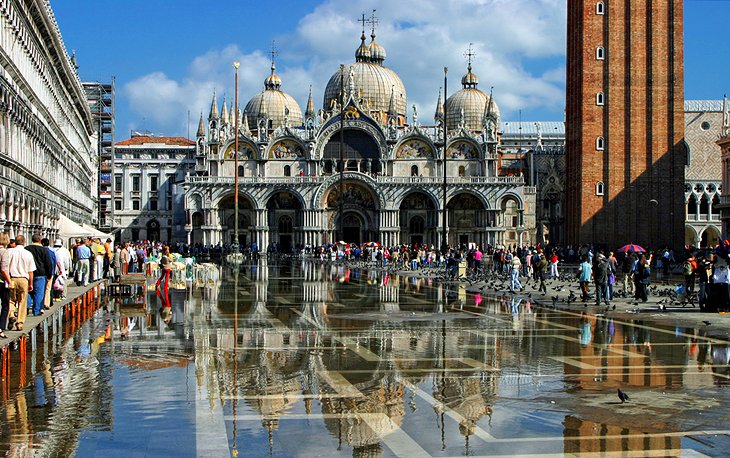
Certainly Venice's best-known church, and one of the most easily recognized in the world, St. Mark's Basilica (Basilica di San Marco) was originally the Doge's private chapel, decorated with Byzantine art treasures that are part of the booty brought back by Venetian ships after the fall of Constantinople.
The gold-backed mosaic pictures above the doorways on the façade only hint at the mosaic artistry inside, where 4,240 square meters of gold mosaics cover the domes and walls. These set a distinctly Byzantine tone to its soaring interior, but you'll find treasures from other periods, including later mosaics designed by Titian and Tintoretto - names you'll encounter all over the city.
The magnificent golden altarpiece, the Pala d'Oro , one of the finest in Europe, was begun by early 12th-century artists, and centuries later, adorned with nearly 2,000 gems and precious stones. If you can tear your eyes from this, the mosaic domes, and the multitude of richly decorated altars, glance down at the floor, a masterpiece of marble inlay. And take time to see the gold reliquaries and icons in the Treasury.
- Read More: Exploring St. Mark's Basilica in Venice: A Visitor's Guide
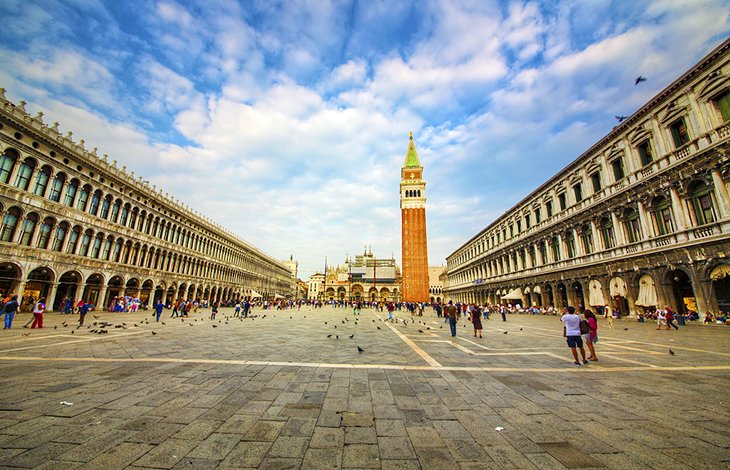
The vast expanse of Venice's largest square is brought together and made to seem almost intimate by the elegant uniformity of its architecture on three sides. But more than its architectural grace, St. Mark's Square (Piazza San Marco) is loved as Venice's living room, the place everybody gathers, strolls, drinks coffee, stops to chat, meets friends and tour guides, or just passes through on the way to work or play.
Three sides are framed in arcades, beneath which are fashionable shops and even more fashionable cafés. The open end is bookmarked by the erratic, exotic curves, swirls, mosaics, and lacy stone filigree of St. Mark's Basilica .
Above it towers the brick shaft of the campanile. For overviews of this busy piazza, you can go to its top or to the top of the Torre dell'Orologio , where a pair of "Moors" strikes the hour.
Author's Tip: Don't be tempted to sit on the steps around the piazza to eat a take-away sandwich. Or throw the crumbs to the pigeons. Both are illegal.
- Read More: St. Mark's Square, Venice: 12 Top Attractions, Tours & Nearby Hotels
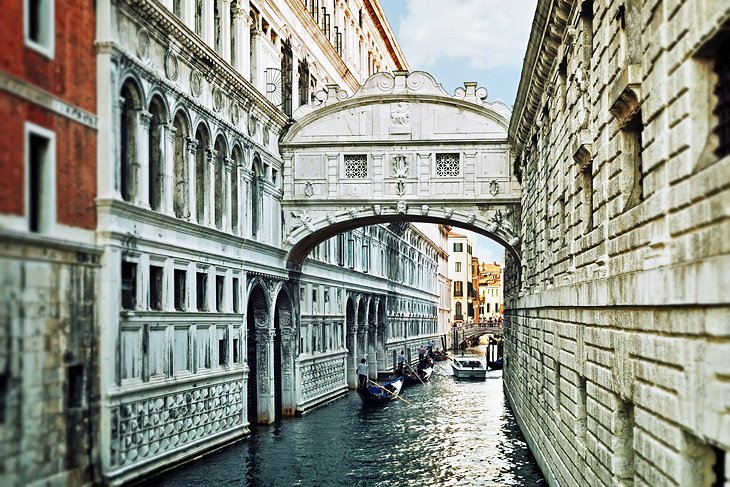
Visitors arriving in Venice once stepped ashore under the façade of this extraordinary palace. They couldn't have failed to be impressed, both by its size and the finesse of its architecture.
If they were received inside by the Doges, the impression would only strengthen as they entered through the Porta della Carta, a perfect example of Venetian Gothic at its height, and ascended the monumental Scala dei Giganti and the gold-vaulted Scala d'Oro to be received in what many consider to be the palace's most beautiful chamber, Sala del Collegio.
Even jaded 21st-century travelers gasp in awe at the palace's grandeur and lavish decoration. You'll see works by all the Venetian greats, including Tintoretto, whose Paradise is the largest oil painting in the world.
Not open on public tours but included on private tours is a walk across the Bridge of Sighs to the dark cells of the Prigioni - the prisons from which Casanova made his famous escape. The best view - and the postcard classic - of the Bridge of Sighs is from the Ponte della Paglia , on the Riva degli Schiavoni behind the Doge's Palace.
Lines for admission to the Doge's Palace are often long, but you can avoid these, and see sections of the palace not open to general visitors, with a Skip the Line: Doge's Palace Ticket and Tour . A local guide will take you past the lines and explain the history and art in each of the dazzling rooms before leading you across the Bridge of Sighs and into the notorious prison.
- Read More: Exploring the Doge's Palace in Venice: A Visitor's Guide
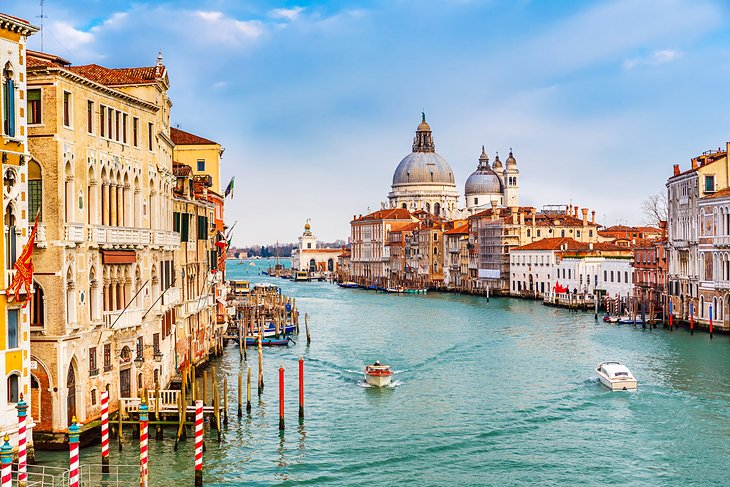
Sweeping through the heart of Venice in a giant reverse S curve, the Grand Canal is the principal boulevard through the city, connecting Piazza San Marco , Rialto Bridge, and the arrival points of the rail station and bridge from the mainland.
Only four bridges cross its 3.8-kilometer length, but stripped-down gondolas called traghetti shuttle back and forth at several points between bridges. The Grand Canal was the address of choice for anyone who claimed any influence in Venice. Palaces of all the leading families open onto the canal, their showy Venetian Gothic and Early Renaissance facades facing the water, by which visitors arrived.
These grand palaces – or at least their facades – are well preserved today, and a trip along the canal by vaporetto, Venice's floating public transport system, is the best way to see them. Or you can see the palaces at a more leisurely speed on a Venice Grand Canal Small Group 1-Hour Boat Tour , which also includes some of the smaller canals. And, of course, a ride along the Grand Canal in a gondola is one of the most romantic things to do in Venice at night.
- Read More: Exploring the Grand Canal in Venice: Top Attractions
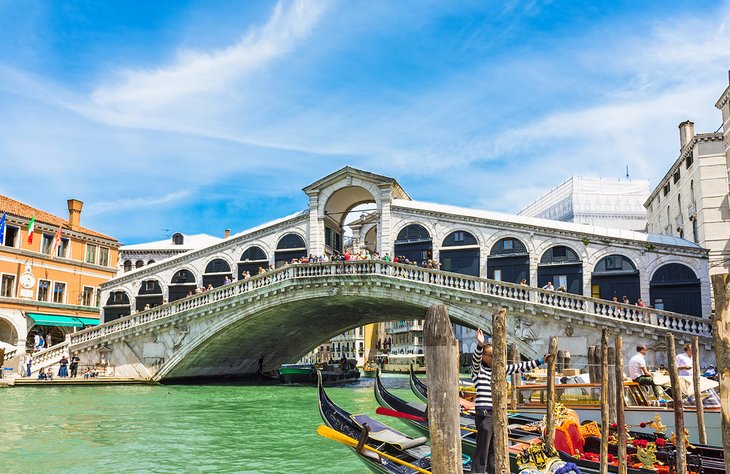
Once the only bridge across the Grand Canal , Rialto Bridge marks the spot of the island's first settlement, called Rivus Altus (high bank). Built in 1588, some 150 years after the collapse of a previous wooden bridge, this stone arch supports two busy streets and a double set of shops.
Along with serving as a busy crossing point midway along the canal, it is a favorite vantage point for tourists taking - or posing for - photos, and for watching the assortment of boats always passing under it.
The church of San Bartolomeo , close to the San Marco end of the bridge, was the church of the German merchants who lived and worked in the Fondaco dei Tedeschi (German Commodity Exchange) bordering the canal here. It has an excellent altarpiece, The Martyrdom of St. Bartholomew , by Palma the Younger. The former exchange is now a popular place to go shopping.
On the other side of Rialto Bridge is the busy food market, where Venetians and chefs shop for fresh produce and seafood. In the narrow streets of San Polo, beyond the market, are artisans' shops and mask-making studios, one of the best places for shopping in Venice . You'll also find places to eat that are not so filled with tourists as those nearer San Marco.
Author's tip: If you're visiting Venice with children , look for the carnival mask and costume studios in San Polo. Masks are inexpensive souvenirs of their trip to Venice.
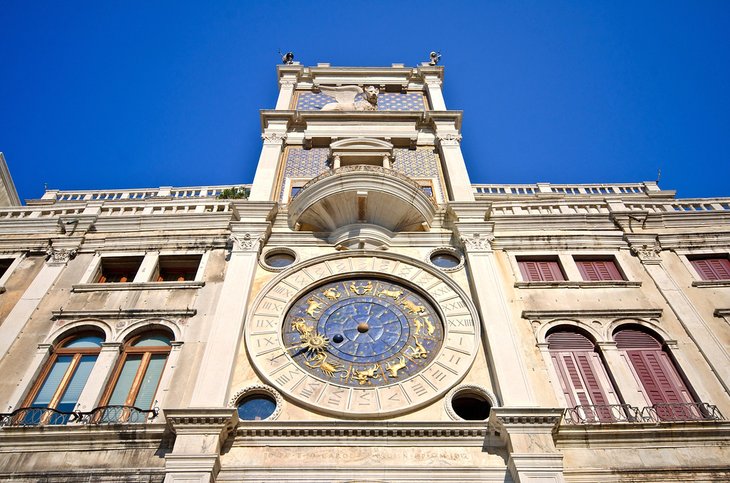
To one side of the basilica, facing onto Piazza San Marco, is one of Venice's most familiar icons, a clock tower surmounted by a pair of bronze Moors that strike the large bell each hour. The face of the clock shows phases of the moon and the zodiac in gilt on a blue background, and above the clock is a small balcony and a statue of the Virgin.
Above that, the winged Lion of St. Mark and a mosaic of gold stars against a blue background were added in 1755 by Giorgio Massari. The tower itself is from the 15 th century and typical of Venetian Renaissance architecture. Through an arched gateway at its base runs one of Venice's busiest streets, the narrow Calle Mercerei.
If you're in Venice during Ascension Week or at Epiphany, as the Moors strike each hour, you can see the Three Kings led past the Madonna by an angel. You can climb the tower for a closer look at the clockwork.
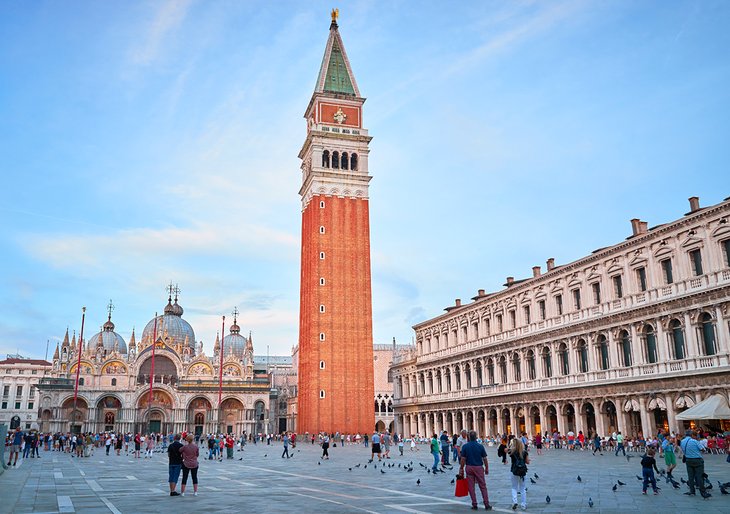
Standing like a giant exclamation point above the expanse of Piazza San Marco, the Campanile is not the first to stand here. The original one, erected as a lighthouse in 1153, collapsed dramatically into the piazza in 1902, and was rebuilt on a firmer footing. Also rebuilt was the Loggetta at its base, a small marble loggia completed in 1540, where members of the Great Council assembled before meeting in the sessions.
In the loggia at the base, you can see Sansovino's four bronze masterpieces between the columns, all of which were rescued from the rubble after the collapse. The Campanile has a grimmer side to its history: in the Middle Ages, prisoners, including renegade priests, were hoisted halfway up the outside in cages, where they hung suspended for weeks.
Today, the Campanile is a popular attraction for the views from the platform on top, which extends across the city and lagoon to the Adriatic (try to go early or late in the day, as lines for the lift can be very long).
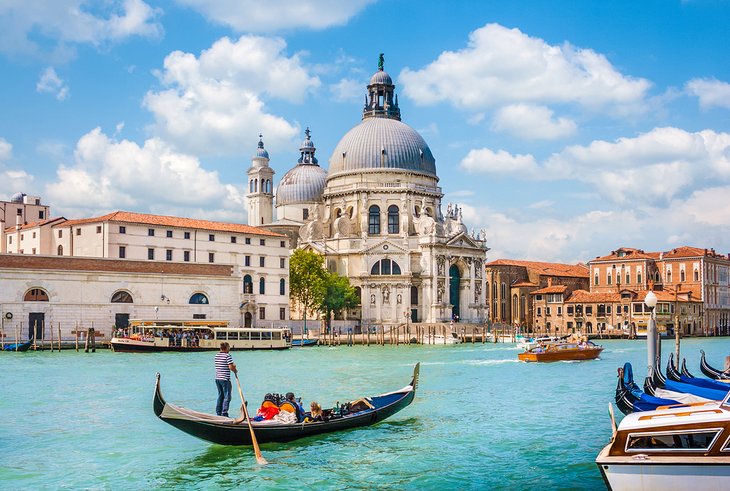
One of the most photographed churches in Venice, Santa Maria della Salute has a postcard setting, rising at the tip of a peninsula across from the Doge's Palace.
The monumental Baroque church was built as thanks for the end of the plague of 1630. But the fragile land wouldn't support its tremendous weight, so its architect, Baldassare Longhena, had more than a million timbers driven into the floor of the lagoon before he could erect the church.
The vaporetto landing is right in front of the church, and the highlight of its interior – apart from the magnificent dome – is the Sacristy, where you'll find paintings that include Tintoretto's Marriage at Cana .
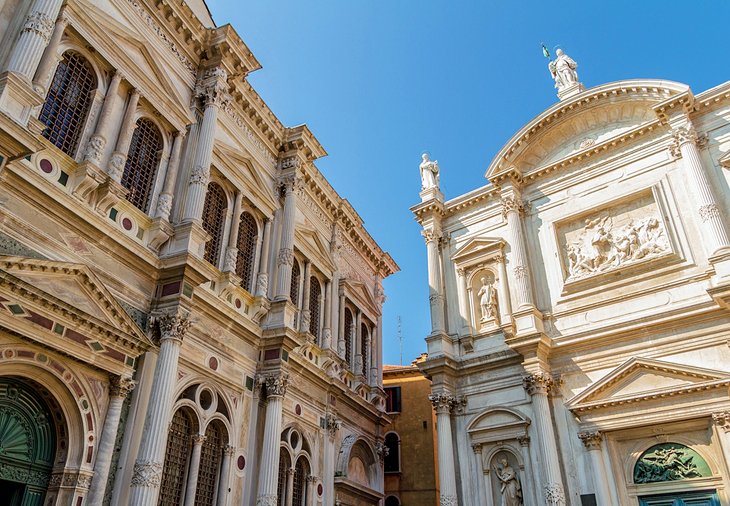
This impressive white marble Scuola Grande di San Rocco was built between 1515 and 1560 to house a charitable society dedicated to San Rocco. Soon after its completion, the great 16th-century Venetian artist Tintoretto won the competition to paint a central panel for the ceiling of the Sala dell'Albergo by entering the building and putting his painting in its intended place before the judging, much to the irritation of his rival artists.
He later decorated its walls and ceilings with a complete cycle of paintings, which are considered to be the artist's masterpiece. The earliest works, in the Sala dell'Albergo, date to 1564 and 1576 and include The Glorification of St. Roch, Christ before Pilate, the Ecce Homo, and the most powerful of all, The Crucifixion . Those in the upper hall depict New Testament scenes, painted between 1575 and 1581.
The lighting is not good, and the paintings themselves are dark, but you can still appreciate Tintoretto's innovations in the use of light and color. You can see the ceilings more easily with one of the mirrors that are provided. More works by Tintoretto are in the chancel of the adjacent church of San Rocco.
Address: Campo San Rocco, San Polo, Venice
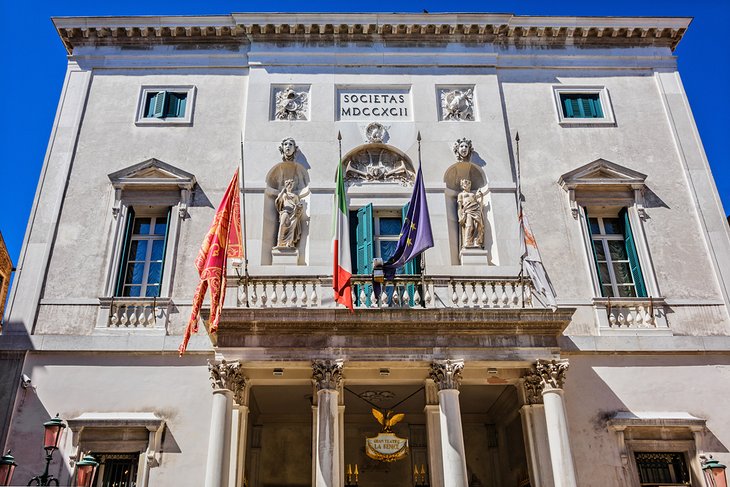
The name La Fenice (The Phoenix), chosen at the constriction in 1792, proved prophetic, as like the mythical phoenix, it has risen from the ashes. The theater has been destroyed by fire three times, the last one, in 1996, leaving only the outer walls standing. Each time, it has been rebuilt, and continues to be one of the world's great opera houses.
Throughout its history, but particularly in the 19th century, La Fenice saw the premiers of many of the most famous Italian operas, including those of Rossini, Donizetti, and Verdi, and today schedules performances of opera, ballet, and musical concerts.
Even after its reopening in 2003 with somewhat expanded seating, La Fenice is still a comparatively small opera house, so tickets are very hard to get, especially for major performances. You can take a tour of the spectacular Rococo interior, however, using an audio guide; these self-guided tours last about 45 minutes and include the public areas of the theater.
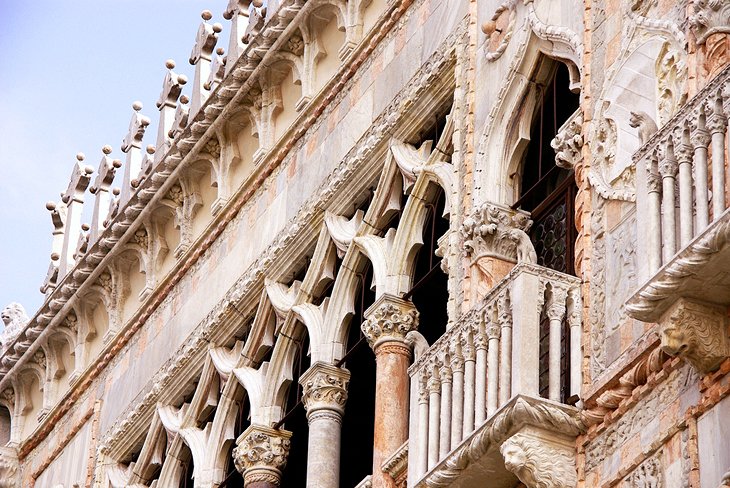
The delicate marble filigree by Bartolomeo Bon seems too lace-like to be carved of stone, and you can only imagine the impression this façade must have made covered in its original paint and gold. Along with the Porta della Carta in the Palazzo Ducale , also created by Bartolomeo Bon, The Ca' d'Oro is considered the most perfect example of Venetian Gothic.
You can admire the interior, too, as this palazzo is now an art museum, restored to provide both a setting for the art works and a look at the way wealthy Venetians lived in the 15th and 16th centuries. The connoisseur responsible for saving the palace, Baron Giorgio Franchetti, gave his art collection to the state in 1922, with works by Titian, Mantegna, Van Dyck, Tullio Lombardo, and Bernini.
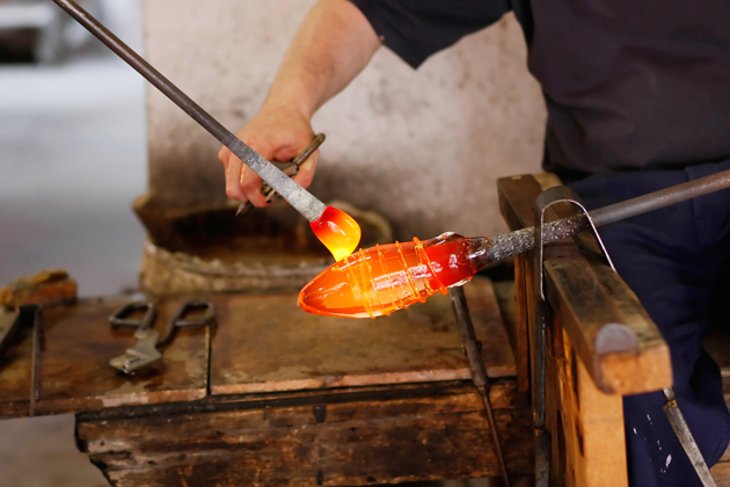
A trip to Venice wouldn't be complete without hopping aboard a vaporetto for the ride across the lagoon to Murano, home of Venice's fabled glass workers. They were sent here in the 13th century in hope of decreasing the risk of fire from one of the glass furnaces sweeping through Venice's tightly compacted center.
Or so they claimed. Just as likely, it was to keep the secrets of glassblowing a Venetian monopoly. This was no small matter to the Venetians, whose Council of Ten decreed in 1454: "If a glassblower takes his skill to another country to the detriment of the Republic he shall be ordered to return; should be refuse, his nearest relatives shall be thrown into prison so that his sense of family duty may induce him to return; should he persist in his disobedience secret measures shall be taken to eliminate him wherever he may be." It was a lot easier to keep track of them if they were confined to an island.
The canal sides today are lined by glass showrooms and studios, showing everything from cheap imported trinkets to exquisite works of art. Inside the 17th-century Palazzo Giustinian is the Glass Museum , with one of the largest and most important collections of Venetian glass from the time of the Romans to the 20th century.
But it's not all glass: The church of Santi Maria e Donato combines Veneto-Byzantine and Early Romanesque features, a result of its various stages of building between the seventh and 12th centuries. Notice especially the columns of Greek marble with Veneto-Byzantine capitals, the 12th-century mosaic floor with animal figures, and the St. Donato above the first altar on the left. Dated 1310, it is the earliest example of Venetian painting.
The 14th-century San Pietro Martire contains several splendid Venetian paintings: Bellini's Madonna in Majesty with St. Mark and the Doge Agostino Barbarigo and his Assumption of the Virgin , along with St. Jerome in the Wilderness and St. Agatha in Prison by Paolo Veronese.
It's a quick hop to the next island, Burano, a fishing village of brilliantly painted houses, known historically for its lace making. The Scuola dei Merletti (lace school) and its small museum will help you distinguish the real thing from the cheap imports you'll find in most shops.
The slender campanile of the 16 th -century church of San Martino leans at an alarming angle, made all the more dramatic by its height.
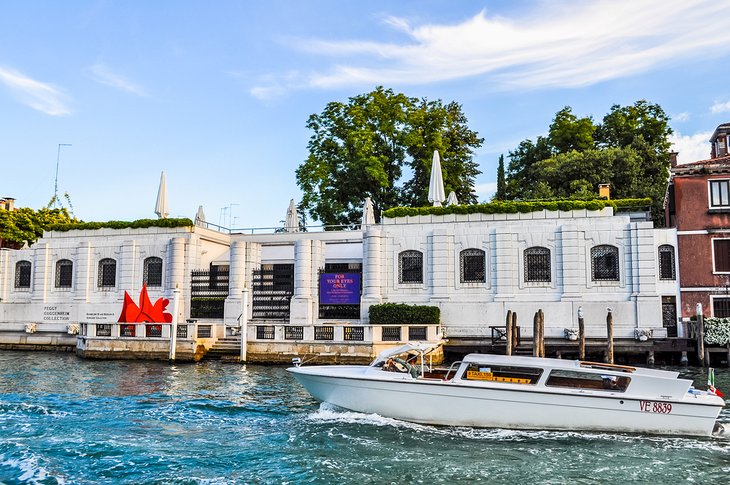
The personal art collections of heiress Peggy Guggenheim are housed in her former home alongside the Grand Canal, Palazzo Venier dei Leoni. Although most of Italy's great art museums are filled with masters of the Middle Ages and Renaissance, the Peggy Guggenheim concentrates on American and European art from the first half of the 20th century.
The low building, with its spare, white interior, is a fitting venue for these bold and often dramatic works, which represent Cubist, Futurist, Abstract Expressionist, Surrealist, and avant-garde schools of painting and sculpture.
The permanent collection includes works by Picasso, Dali, Braque , Léger , Mondrian , Kandinsky , Klee, Ernst , Magritte , and Pollock , and frequent exhibitions bring in works from other major artists. In the museum's sculpture gardens are works by Calder , Holzer , Caro , Judd , and Hepworth .
Address: 704 Dorsoduro, Venice
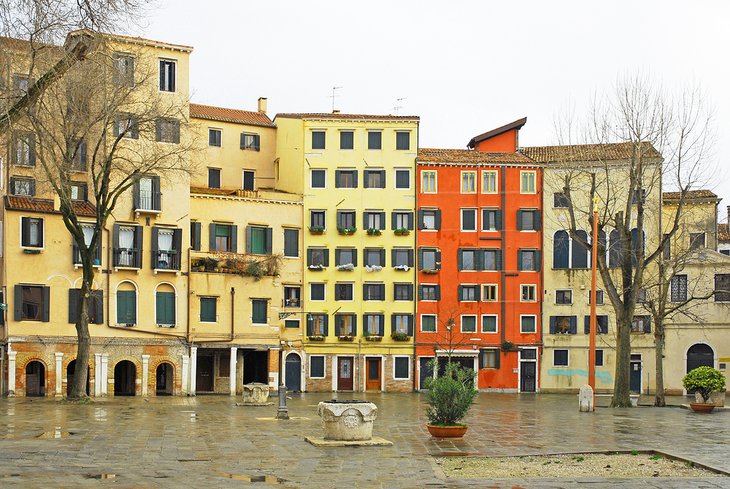
The Venetians called the foundry here geto , and in 1516 it was decreed that all Jews in the city would live on this islet, the origin of the word "ghetto." Residents could only leave in the daytime, and the gates were locked and guarded at night.
This part of the Cannaregio sestiere still has distinct Jewish presence, with synagogues and the Museo Ebraico di Venezia (Jewish Museum) with artifacts of Jewish life here from the 17 th and later centuries. Facing the Ghetto Nuovo Square, a touching memorial of bronze panels, created in 1980 by artist Arbit Blatas, remembers the victims of the deportation during the Nazi occupation of the city in 1943.
Address: Museo Ebraico di Venezia, Campo del Ghetto Nuovo, Cannaregio
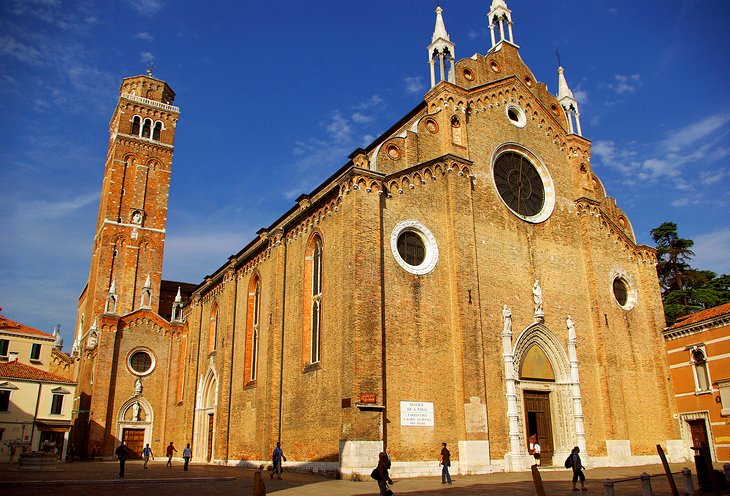
This Gothic church was begun by the Franciscans about 1340 and finished with the completion of the facade, interior, and two chapels in the middle of the 15th century. Its impressive 14th-century campanile is the second highest in the city.
Although the interior is in keeping with the simple unadorned style of Franciscan churches, it contains a wealth of artistic treasures. In the right transept is an important wood statue of St. John the Baptist by Florentine sculptor Donatello, done in 1451 (first chapel to the right of the sanctuary).
In the sacristy is a triptych Madonna and Child Enthroned with Four Saints by Giovanni Bellini. In the left transept, the statue of St. John the Baptist on the stoup of the Cappella Cornaro was created by the sculptor and master-builder Jacopo Sansovino
The Monks' Choir is an outstanding example of the wood-carving of Marco Cozzi, with reliefs of saints and Venetian scenes. And the sanctuary contains the tomb of two Doges by Antonio Rizzo, and over the high altar is Titian's Assunta , painted between 1516 and 1518. The Mausoleum of Titian in the south aisle was a gift from Ferdinand I of Austria, when he was King of Lombardy Veneto.
You can't help noticing the pyramidal mausoleum made by the students of the sculptor Antonio Canova in the north aisle, and opposite, the large monument to Titian, also by students of Canova. Beside the Cappella Emiliani, which has a fine mid-15th-century polyptych with marble figures, is Madonna di Ca' Pesaro , completed in 1526 and one of Titian's most important works.
Address: Campo dei Frari, I-30100 Venice
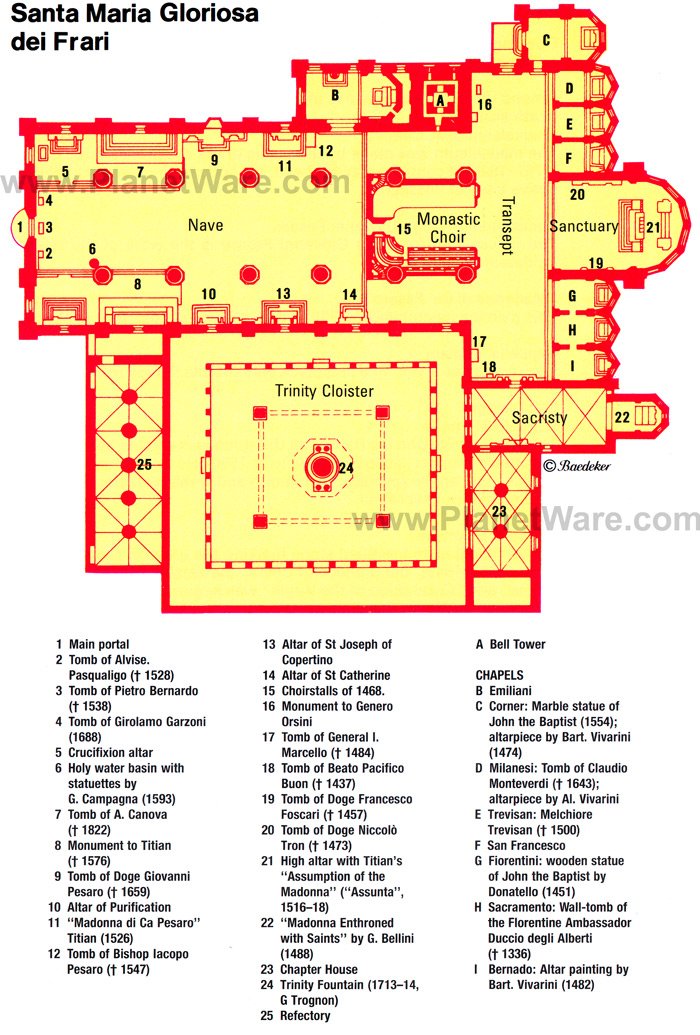
Called " The Accademia " for short, this museum on the Grand Canal has the most important and comprehensive collection of 15th-18th-century Venetian painting in existence. Much of the collection was assembled from monasteries and churches that were closed and from the clearing of palaces of noble families, now displayed in the former Monastery of Santa Maria della Carità.
Some of the galleries, such as the first one, which contains Venetian Gothic Painting, have richly carved and gilded 15th-century ceilings. Works are arranged chronologically, so you can not only trace the evolution of styles, but can compare the works of contemporaries.
Highlights of the 15th- and 16th-century paintings are St. George by Andrea Mantegna, St Jerome and a Donor by Piero della Francesca, Madonna and Saints by Giovanni Bellini, Portrait of Christ by Vittore Carpaccio, and Madonna under the Orange Tree by Cima da Conegliano.
St. John the Baptist and a magnificent Pietà by Titian, Tintoretto's Cain and Abel and The Miracle of St. Mark, Paolo Veronese's Marriage of St. Catherine and Supper in the House of Levi , St. Ursula by Vittore Carpaccio, and several works by Giambattista Tiepolo are also worth special notice.
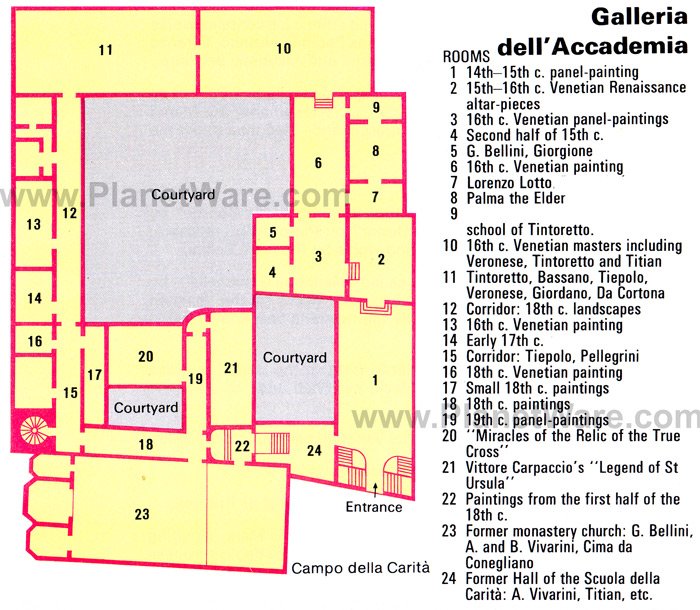
After the vast grandeur of St. Mark's and the soaring expanse of Frari, little Santa Maria dei Miracoli is like a fresh breeze, a masterpiece of Early Renaissance architecture by Pietro Lombardo. This jewel box of pastel inlaid marble was built from 1481 to 1489 to enshrine a miraculous picture of the Virgin.
Unlike Venice's other churches, whose facades are embellished with architectural flourishes and statues, Lombardo used painstakingly matched colored marble to create delicate patterns of rosettes, circles, octagons, and crosses on the facade. The method continues inside, which heightens the effect of the golden domed ceiling rising above gray and coral marble walls.
The nave is separated from the chancel by an exquisite Early Renaissance balustrade decorated with figures. It's no wonder that this is Venetians' favorite place to be married, as its interior is one of the most beautiful in the city.
Address: Campo dei Miracoli, Venice
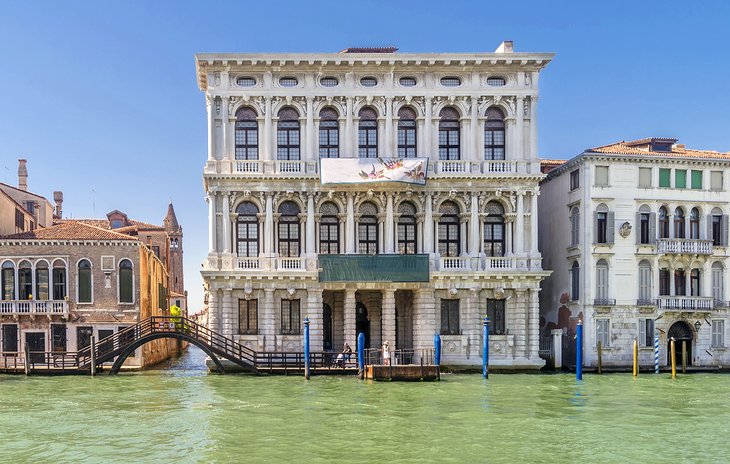
Just as Ca' d'Oro lets you glimpse into the life of the late Middle Ages, Palazzo Rezzonico gives a vivid picture of life here in the Baroque and Rococo periods, in the 18th century. Designed and begun by Venice's master of Baroque architecture, Baldassare Longhena, the palace was completed nearly 100 years later in 1750 by Giorgio Massari.
The furnishings and collections complete the picture painted by the building, including its interior decoration of silk wall coverings, elegant finish details, and Flemish tapestries. The costume collection highlights the importance of silk production in Venice from the late Middle Ages through the 18th century, when it was a major competitor with Lyon, France.
Rigid technical regulations were enforced, resulting in some of the most beautiful silk fabrics ever made. So important was silk that even in times of war with the Turks, battle lines parted for the silk-laden ships to pass through.
The museum details the importance of luxury goods, particularly clothing and fashion, for the Venetian economy in the 18th century, when brocades embellished with gold and silver thread produced here were treasured throughout Europe and the New World.
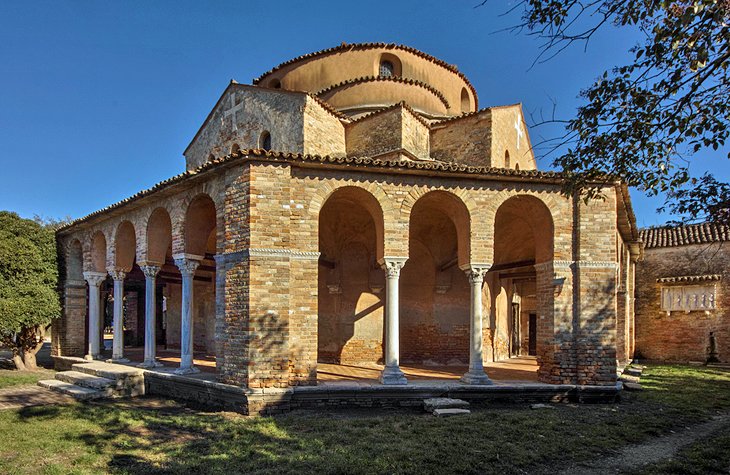
Venice began on this outer island of Torcello, founded here as early as the seventh century, and by the 12th century, it was a flourishing commercial town. Of its palaces, churches, shipyards, and docks, only two churches and a handful of houses remain, dotted over the large island.
You can get some idea of the importance of Torcello from its cathedral, dedicated in 639 to Santa Maria Assunta . It is considered the best remaining example of Venetian-Byzantine architecture. It was reconstructed in 834 and 1008, and the portico and two lateral apses were added in the ninth century; much of the building dates from the 11th century. The mosaics lining the interior are outstanding.
The oldest of these are in the chapel to the right of the high altar, where 11th-century angels carrying a medallion with the Lamb of God show a strong Byzantine influence. The Fathers of the Church ; Gregory, Martin, Ambrose, and Augustine; were added later, along with Christ in Majesty between two Archangels .
The 12th-century mosaics in the main apse and the Virgin and Child above a frieze of the Twelve Apostles surrounded by flowers are all on a gold background. The west wall is covered in tiers of a Byzantine mosaic of the Last Judgment from the late 12th or early 13th century.
Along with the exquisitely detailed marble carvings on the rood screen, notice the 11th-century mosaic floor and the pulpit, which was assembled in the 13th century from earlier fragments.
Adjoining the cathedral is the little 11th-century church of Santa Fosca , on a pure Byzantine central plan with a portico. Your admission ticket includes the interesting little historical museum with artifacts from antiquity to the 16th century.
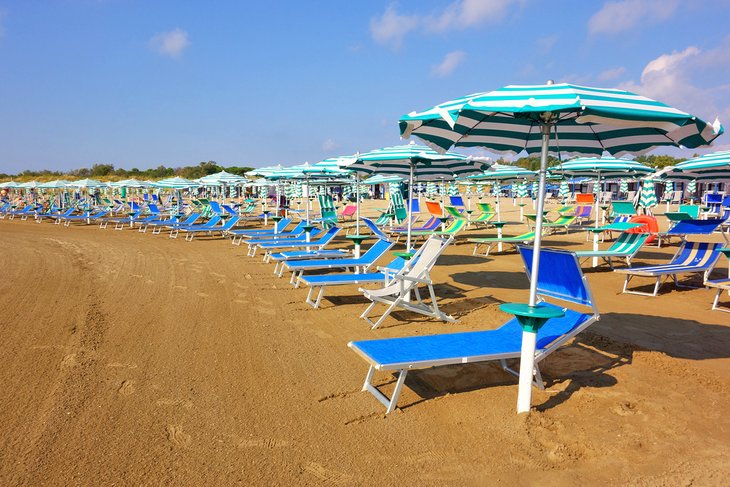
The long (12-kilometer) strip of sand that separates the Venetian lagoon from the Adriatic Sea was Europe's first real beach resort, and in its heyday, at the turn of the 20th century, was Europe's most fashionable watering hole for royalty and the day's celebs. Today, the grand hotels where they reposed still welcome guests and still own the beautiful fine-sand beaches, although for a price you can share them with hotel guests.
Public beaches are at the north end of the island, near the church of San Nicolo, where relics of St. Nicholas are revered. After considerable controversy between Venice and Bari, which also claims the saint's relics, it has been established by an anatomical expert that both have an equal claim; about half the skeleton, including the skull, is in Bari and the other half in Lido. The cloisters are lovely, and in the church are paintings by both Palma the Elder and Younger.
You can tour Lido on foot or a bicycle rented near the landing stage where the 10-minute Motonave or longer vaporetto ride from St. Mark's deposits you. The island is filled with Art Nouveau villas and hotels; to see the villas, wander along some of the side streets. In August and September, the Lido is the venue for the International Film Festival, held in the Palazzo del Cinema.

Two churches in Venice are venues for concerts of classical music , both featuring the works of Venetian composer and virtuoso violinist, Antonio Vivaldi. One of these churches, Santa Maria della Pietà , was Vivaldi's own, where he taught and composed the music for major church feasts. Near Saint Mark's Square, it is a beautiful mid-18 th -century church.
The other church where you can hear concerts is San Vidal church, in Campo Santo Stefano, not far from the Academia bridge. Along with the concerts, the church is notable for its magnificent main altarpiece, San Vidal on Horseback with Eight Saints, painted in 1514 by Vittore Carpaccio. Concerts in both these venues feature "The Four Seasons" and other works by Vivaldi. 123
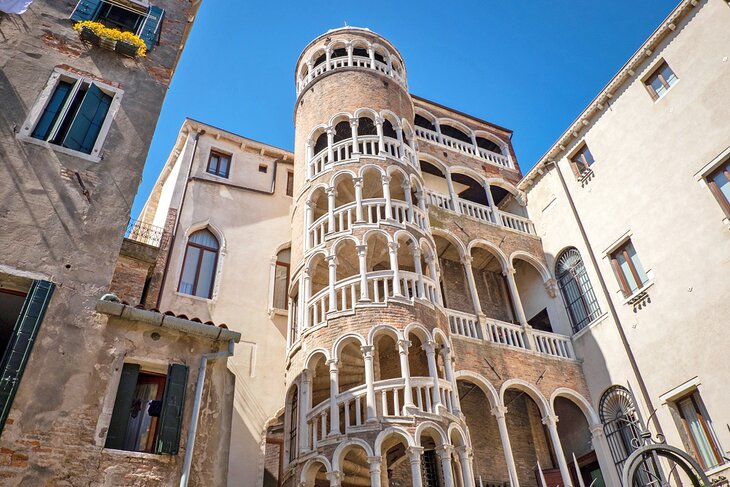
During the 15 th -century renovations of an earlier Gothic building near Campo Manin, a unique spiraling staircase was added to the outside, creating one of the city's most unusual places to visit. The staircase spirals upward, encased by a balustrade and a series of graceful arches that give it an almost delicate air. The building became known as the Contarini del Bovolo Palace , referring to the Venetian word for snail.
Alongside the round tower, a series of 5 layered loggias decreasing in height with each level provides access to the building's five stories. You can see the exterior from the courtyard, or climb the tower for views from the roofed terrace at the top.
Address: San Marco, Campo Manin
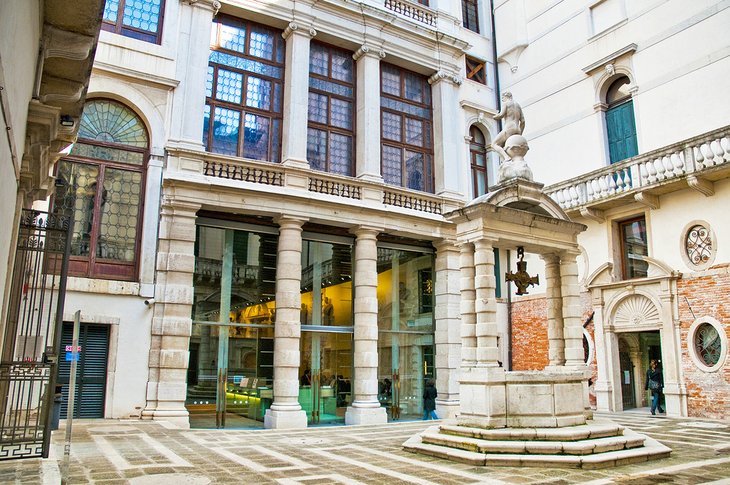
The impressive façade of Ca' Pesaro overlooking the Grand Canal, was inspired by the Sansovino Library that stands across from the Doge's Palace, built a century earlier. The lavish Venetian Late Baroque interior contrasts sharply with the art displayed there, for the palazzo now houses the Galleria d'Arte Moderna.
One of Italy's finest collections of modern art, it contains works by important 19th- and 20th-century painters and sculptors including Gustav Klimt, Marc Chagall, and Auguste Rodin. Highlights include decorative arts of the 20 th century such as works in glass made by Carlo Scarpa in the 1930s and 1940s and rare furniture pieces by the cabinetmaker Carlo Bugatti.
The Museo d'Arte Orientale occupies the third floor of the palace, with collections of fine and applied arts from Asia. Highlights are the Chinese vases and Japanese enamels, porcelains, and armor of the Edo period.
Ca'Pesaro is reached by Vaparetto from the San Stae stop, at the church of Sant'Eustachio, more commonly known as San Stae. Step inside the church to see paintings by early 18th-century artists, including Tiepolo and Pellegrini.
Address: Santa Croce, Venice
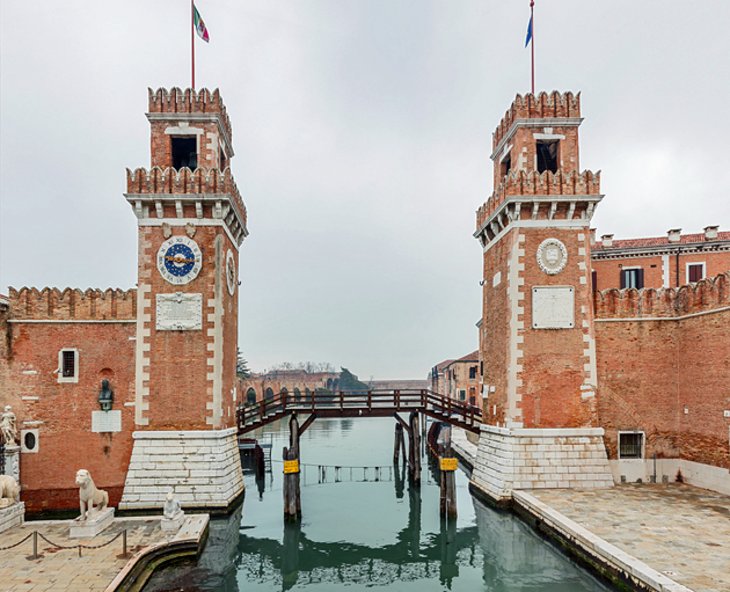
The Arsenal, the shipyard of the Venetian Republic, was the largest and busiest in the world until the end of the 17th century. From its founding in 1104, it was continuously expanded, until in its heyday, it employed as many as 16,000 workers.
Closely guarded to preserve the secret production methods that enabled it to build a fully sea-ready ship in a single day, the Arsenal was accessible by one land and one sea approach only. So tight was its security that the Republic managed to keep its art of shipbuilding secret until about 1550.
At its imposing land entrance is a Renaissance-style triumphal arch guarded by lions brought from Greece as booty after the reconquest of the Peloponnese in the 17th century. Of the two lions on the left, the larger one stood guard over the port of Piraeus, while its fellow stood on the road from Athens to Eleusis.
Adjacent to the shipyard is the Museum of Naval History , displaying impressive booty brought back from the numerous maritime wars of the Republic, along with fascinating collections that include votive paintings made on wood panels in thanks for rescues at sea. These charming pictures are interesting for their depiction of sea life, not so much for their artistic finesse.
Models and artifacts relate to shipbuilding, the types of vessels afloat in the period that Venice was a sea power, and the Republic's strongholds throughout the Adriatic. A large model of the legendary ship of state Bucintoro , the Doge's sumptuous official galley, is especially interesting.
Address: Riva degli Schiavoni, Castello, Venice
While it's nice to stay close to St. Mark's Square, or between there and the Rialto, it's not essential for sightseeing. Attractions are all fairly close, and you'll have to walk between them anyway. Just as important is how close the hotel is to a Vaporetto stop on the Grand Canal. In addition to hotels near San Marco and San Zaccaria stops, consider those near Salute and Academia stops in Dorsoduro. Here are some highly rated and convenient hotels in Venice:
Luxury Hotels :
- Only a few steps from the Salute stop and one stop from St. Mark's, Ca' Maria Adele is a lush island of serenity near the Guggenheim Collection, with antiques-furnished rooms and superb guest services.
- The Gritti Palace, A Luxury Collection Hotel was once the home of a Venetian Doge, and its large, sumptuously appointed rooms (some with balconies) overlook the Grand Canal or a quiet piazza close to St. Mark's.
- Set on a small canal less than two minutes' walk from Piazza San Marco, Bauer Palazzo could hardly have a more convenient location for tourists. Opulent appointments include marble floors and Murano glass chandeliers; guest rooms and the rooftop terrace overlook views of the Grand Canal and other landmarks.
Mid-Range Hotels:
- Elegant and luxurious Hotel Ai Cavalieri di Venezia is also a walk from the Rialto stop, but well located near attractions.
- Londra Palace could hardly be better located, a three-minute walk from St. Mark's at the San Zaccaria stop, with balconies overlooking the lagoon; breakfast is included.
- The large rooms at NH Collection Venezia Palazzo Barocci overlook the Grand Canal, at the San Angelo vaporetto stop.
Budget Hotels:
- In a quiet neighborhood of Santa Croce, a short walk from a Vaporetto stop, about 20 minutes from Rialto and close to a good choice of restaurants, Hotel Tiziano has comfortable rooms and includes breakfast.
- Rio Venezia Hotel is just behind St. Mark's, a block off the Grand Canal.
- Also just steps from St. Mark's, Hotel Orion is on the shortest route to Rialto.
Exploring the Islands:
- A highlight for most travelers is a visit to the islands of Murano and Burano. The easiest way to explore these islands is on a five-hour guided Murano Glass and Burano Lace Tour from Venice , which includes motorboat transport to the islands, with visits to a glassblowing factory on Murano and lace makers on Burano.
Sightseeing and Gondola Rides :
- Venice is a little bit of a maze, and if you have limited time, taking a guided tour is a good idea. The Venice Walking Tour and Gondola Ride includes the best of both worlds, with an opportunity to learn the history of the sites as you wander the city and then relax and enjoy the scenery on a gondola ride.
- Alternatively, to just soak up some of the ambience, skip the walking piece and see the sites from the water on a 35-minute shared gondola ride while being serenaded on the Venice Gondola Ride and Serenade .
- A third option, the Venice Super Saver: Skip-the Line Doge's Palace and St. Mark's Basilica Tours, Venice Walking Tour and Grand Canal Cruise offers priority admission to the two must-see sights with the longest lines, a guided walking tour that takes you to some of Venice's secret sights, and a water-taxi cruise along the Grand Canal.
Good to Know
- Beginning in 2025, day visitors will be charged an access tax of between €6 and €10, depending on the season and expected tourist numbers. Visitors staying overnight in Venice already pay a lodging tax of €1 to €5 per person per night for the first 5 nights.
- If you plan to use the Vaporetto, either on the Grand Canal or to visit the islands of Murano, Burano, Lido and Torcello, ACTV transit passes are a good value. Single fares are €9.50, and a full-day pass is €25, less than the cost of three single rides. Multiple day passes save even more: 2 days for €25, 3 days for €45 and €65 for an entire week.
- While Venetians are quite tolerant of the masses of tourists that pour in every day, the city has some rules for visitor behavior. While these are not uniformly enforced, recent violations have resulted in steep fines. Some that you should be aware of include prohibitions on picnicking in a public place, buying from street vendors, lying down on a public bench, putting padlocks on bridges, and leaning against store fronts.
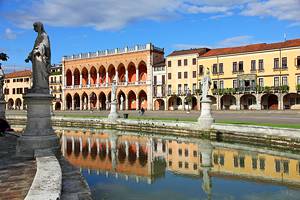
Where to Go near Venice : After you've visited the city's top tourist attractions, you may want to explore some of the beautiful nearby towns. Only 20 kilometers away is pretty Treviso , enclosed by walls and with its own waterside villas. Padua , with its famous shrine of St. Anthony, is easy to reach by train or by a cruise along the historic Brenta Canal. Stop along the way at Villa Pisani, one of the most beautiful gardens in Italy .
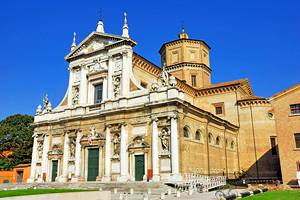
Places to Visit from Venice: North of Treviso are the soaring Dolomites, with some of the top ski resorts in Italy but with plenty of things to do in all seasons. Along the Adriatic to the east is Trieste , where Italian blends with Hapsburg architecture reminiscent of Vienna. Following the Adriatic coast south, you'll reach Ravenna , with its magnificent Byzantine mosaics.

More on Italy

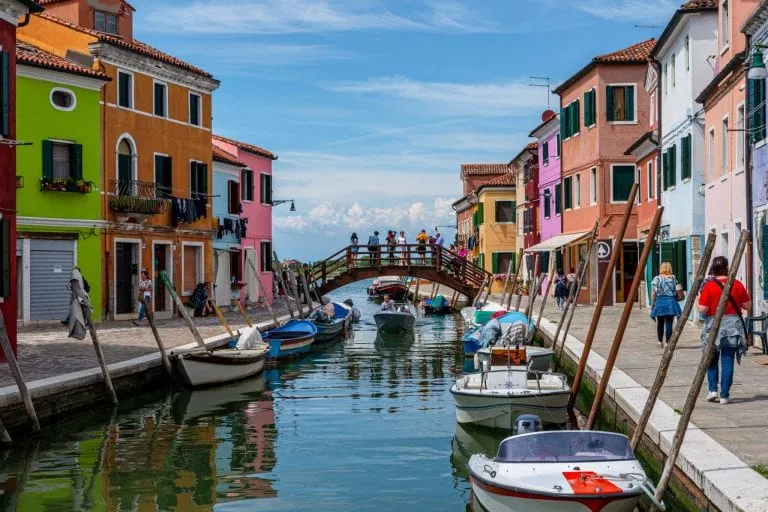
7 Beautiful, Outlying Islands in Venice (+ Map)
Stand along Venice’s famous Riva degli Schiavoni, staring out over the Venetian Lagoon, and you’ll quickly notice something enticing about this unique city: the dense historic center is only one of many islands in Venice.
Technically, the historic center itself is made up of many Venetian islands, but islands that are so tightly knit that a maze of 400 footbridges is (more or less) all that is required to combine them into a cohesive city.
Beyond this beautiful historic center, though, lies yet another version of Venice, one that only a small percentage of its visitors ever see: the outlying islands of Venice’s lagoon.
If you’re hoping to get beyond the usual attractions (and crowds) when visiting Venice, it may be time to board a vaporetto and set off on a new adventure.
Some of these Venetian islands are more popular than others, but each and every one of them is a breath of fresh air and a big step off the beaten path as compared to, say, walking across the Rialto Bridge.
Here are the best islands in Venice’s Lagoon to add to your trip, plus details on how to get there!
Table of Contents
How to Travel to Venice’s Islands
The most popular venetian islands, more beautiful islands in venice to visit, map of the islands of venice, italy.
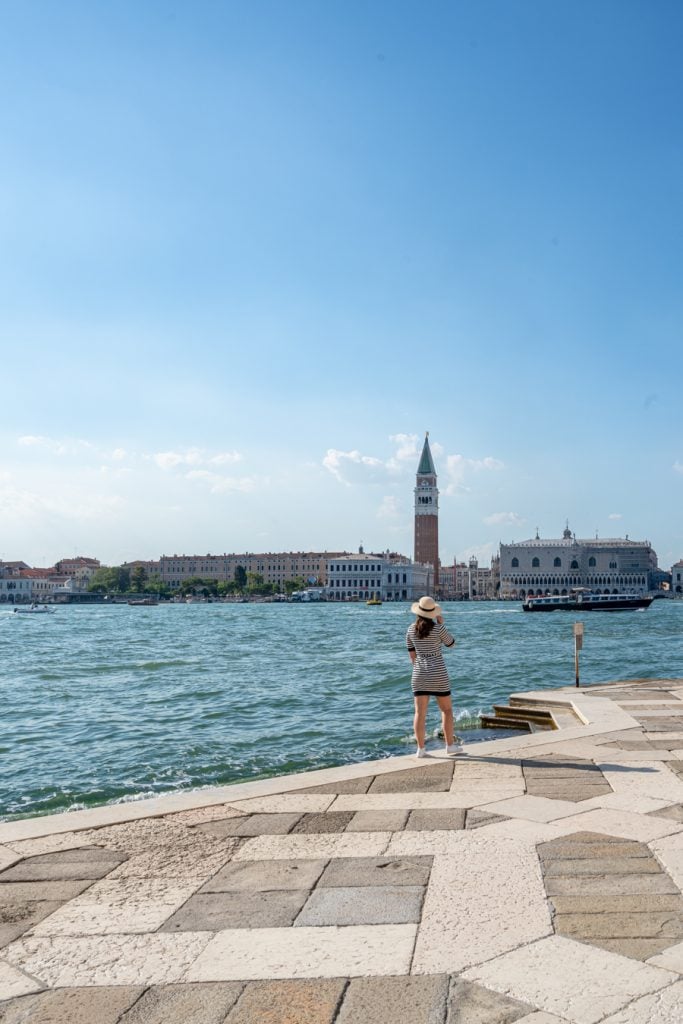
Some links in this post may be affiliate links. If you make a purchase through one of these links, we may earn a small commission at no extra cost to you. Please see our disclosure policy for more detail.
For most of these islands in the Venetian Lagoon, you’ll have two options for getting there: boarding a vaporetto, or booking a tour.
Taking a Vaporetto in Venice
A vaporetto, or water bus, is Venice’s answer to public transportation–but as far as public transportation goes, it’s quite pricey to use per ticket.
For that reason, we strongly recommend looking into an ACTV day pass for days that you’re planning to use the vaporettos quite a bit–for instance, when planning a day trip to one of Venice’s outlying islands.
Note that the estimated travel times we’ve included in this post are not exact–depending on your starting point, starting time, and exact destination, travel times by vaporetto can vary quite a bit.
Shop vaporetto tickets and passes today!
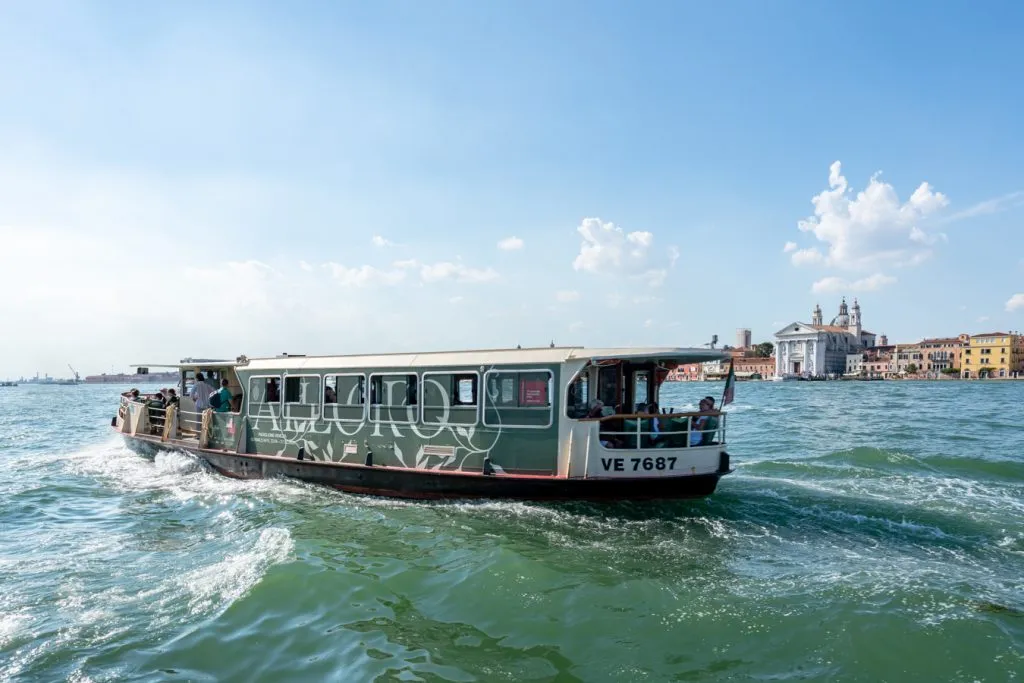
Booking a Tour to Visit Venetian Islands
For the more popular islands on the Venetian Lagoon, like Burano and Murano, organized day trips like this that include transportation can be an excellent value.
And, if you’re hoping to see more than one island in a day, they’re a great way to ensure that you’re making the most of your limited time, too!
This incredibly popular tour includes stops in Murano, Burano, and Torcello, and is perfect for travelers hoping to sample it all.
Book your day trip to Murano, Burano, and Torcello today!
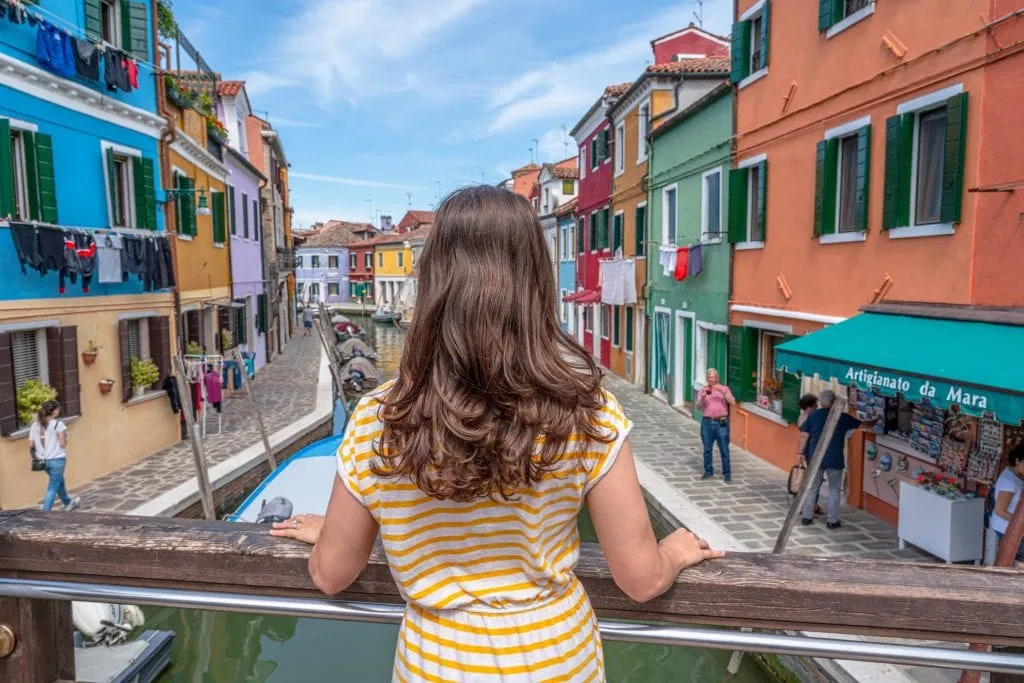
This collection of 3 islands on the Venetian Lagoon are by far the most popular with visitors–and there’s a reason for that.
Each of them is known for a specific, unique trait that differs from the other islands in Venice, and they’re all located reasonably close together.
If you’re hoping to make a quick decision about which islands to visit, this popular tour (9000+ reviews!) that visits all 3 is a fantastic option.
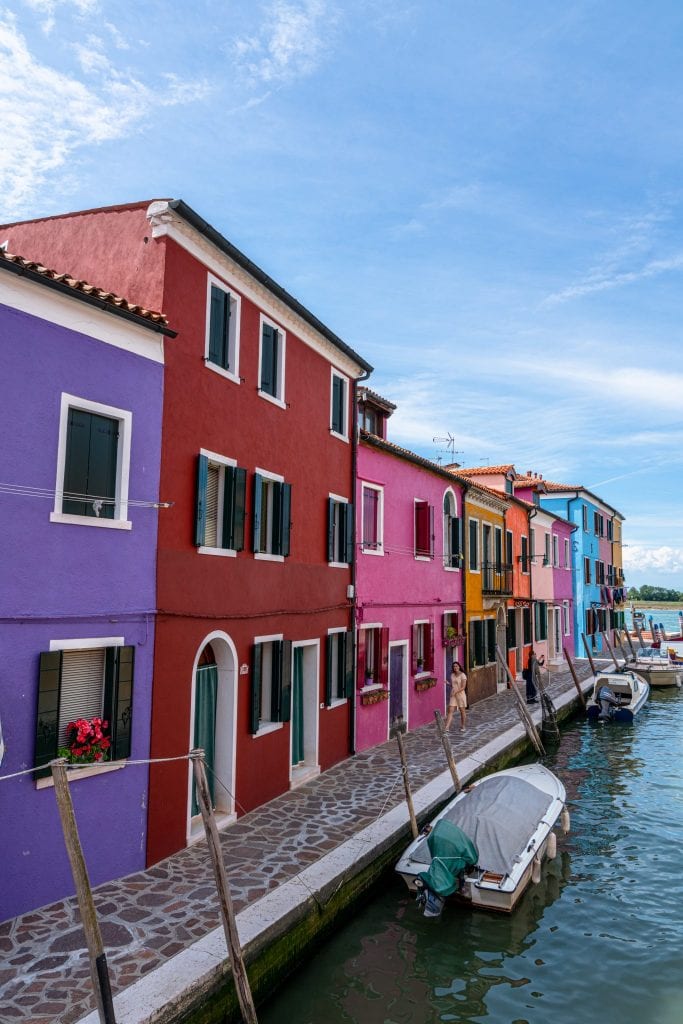
Even if this is your first trip to Venice, there’s a good chance that you’ve heard of Murano Glass–and this island is the glass’ namesake and the traditional home of its production.
The art form has been present in Murano for over 1000 years, and since the 13th century, it has been coveted across Europe and the world, popping up in palaces across the globe.
Today, one of the most popular things to do in Murano is to attend a glass-blowing demonstration , which is very interesting to witness.
And, of course, if you’d like to purchase your own piece of Murano glass, you can’t ask for a better place to do so.
Travel Time from Venice’s Historic Center
About 15-20 minutes.
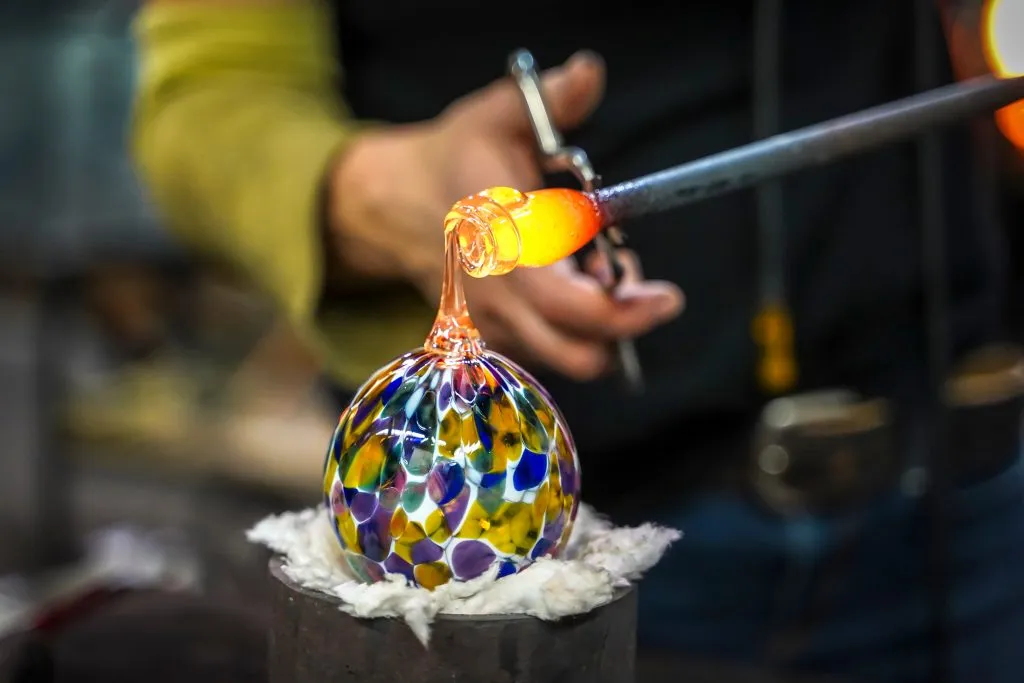
Above all else, the Venetian island of Burano is known for its color.
Step one foot onto the small island of Burano, and you’ll immediately be surrounded by its brightly colored houses, painted just about every hue that you can imagine!
Stories abound as to why the tradition of colorful paint jobs started, but a leading theory is that the distinct colors helped fishermen find their way home across the lagoon.
Today, though, Burano’s iconic colors are mostly beloved for their charm and photogenic nature.
And, the color isn’t even all Burano is known for: Burano lace has long been celebrated, and though traditional handwoven pieces are extremely rare and expensive, machine-assisted ones make excellent souvenirs.
Be sure not to miss the Tre Ponti or Burano’s very own leaning tower when exploring this island in Venice, either!
About 35-40 minutes.
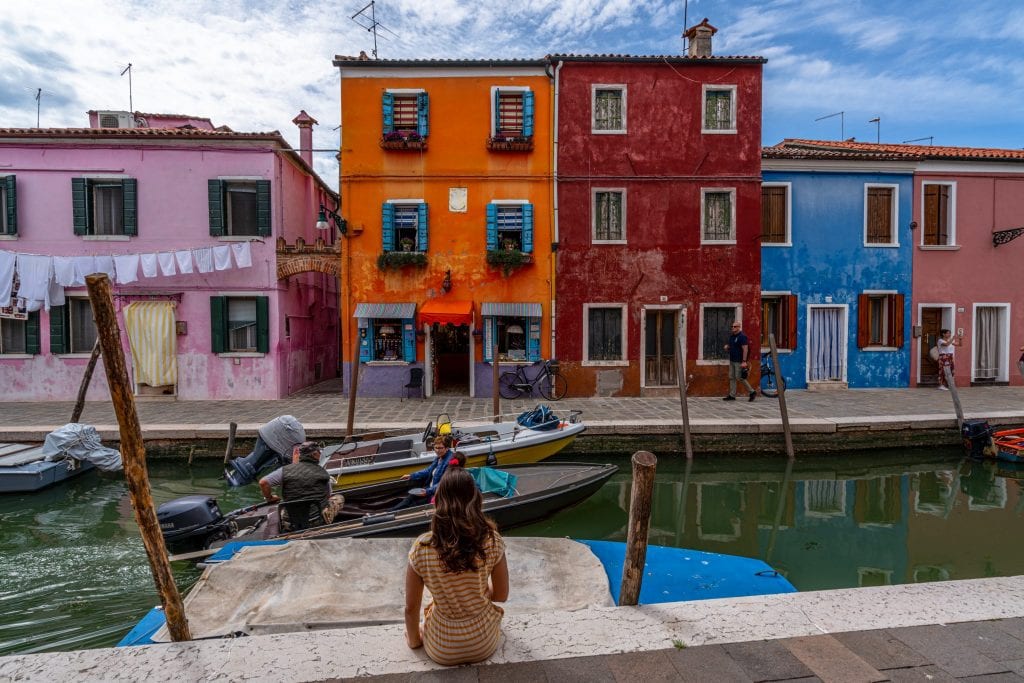
Small, quiet, and packed with enough green space that Venice’s historic center will feel light years away, Torcello is one of the best islands to visit in the Venetian Lagoon.
Much less visited than Murano and Burano, Torcello’s popularity is nonetheless helped along by its proximity to colorful Burano.
Torcello was once home to over 20,000 residents, but today, only around a dozen remain.
While you’re there, the one attraction you can’t miss is the beautiful Basilica di Santa Maria Assunta.
Don’t miss the magnificent mosaics inside, or the stunning views of Burano from the top of the bell tower!
About 40 minutes.
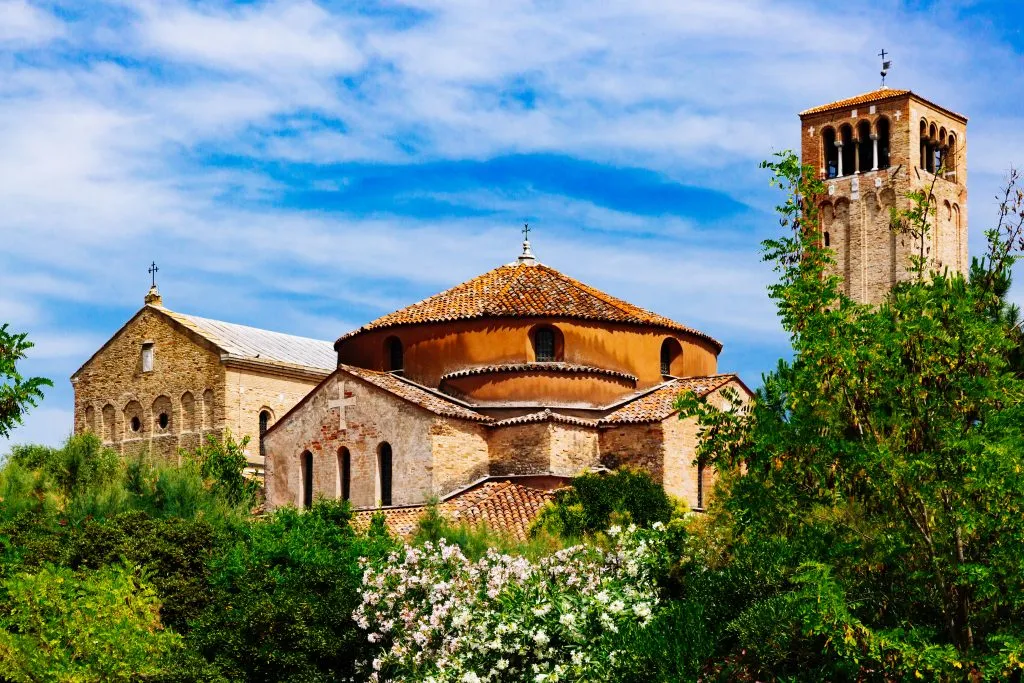
If you want to get off the beaten path in Venice , these islands are fantastic options to do so!
For a city literally surrounded by water, surprisingly few travelers consider visiting the beach in Venice, even when visiting during the summer .
However, over on the Venetian island of Lido (in Italian, Lido di Venezia ), you absolutely can!
At 11 kilometers long, this barrier island is the perfect beach retreat that will make you feel like you’re much further from central Venice than you actually are.
The beaches on Lido generally boast incredibly calm, shallow water, perfect for families or those who just want to enjoy a laid-back day with the sun and sea.
About 30 minutes.
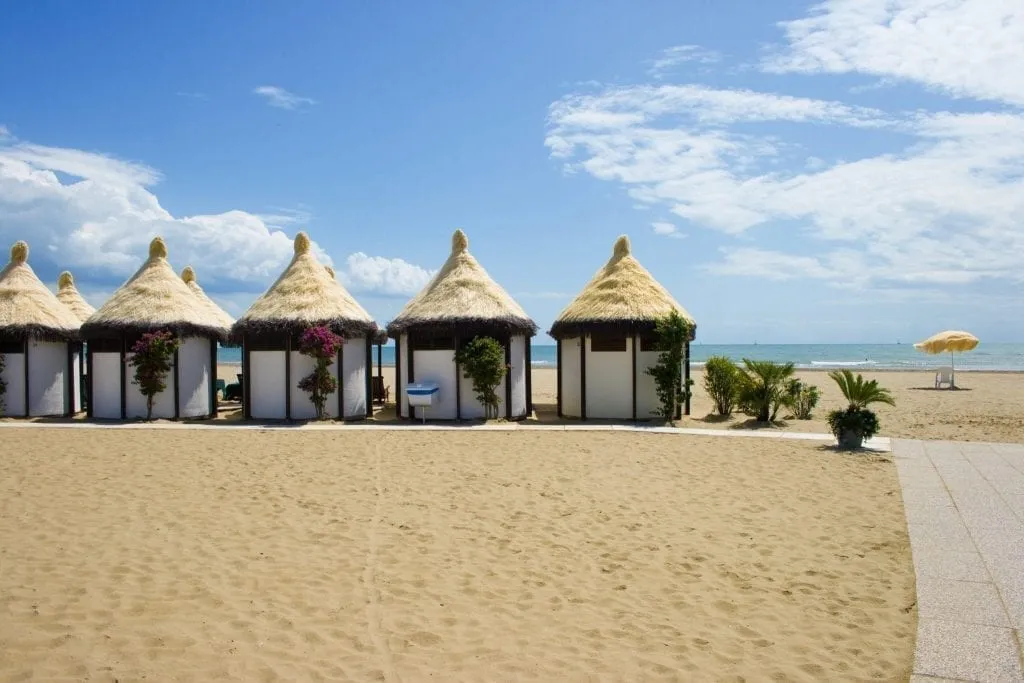
Lying across the lagoon from the historic center of Venice, the island of Giudecca is technically part of the sestiere of Dorsoduro .
Largely residential, Giudecca doesn’t offer much in the way of specific tourist attractions (though the Church of the Redeemer, featuring works by Tintoretto, is certainly worth a visit).
Mainly, though, visiting Giudecca today is about the atmosphere.
Made up of 8 small islands connected by pedestrian bridges, it’s a lovely place to wander, with some saying that exploring Giudecca is like experiencing what Venice would be without the tourists.
The views of the historic center of Venice from the edge of Giudecca are lovely, too, and it’s a great place to grab lunch or dinner!
5 minutes by vaporetto (from across the Venetian Lagoon).
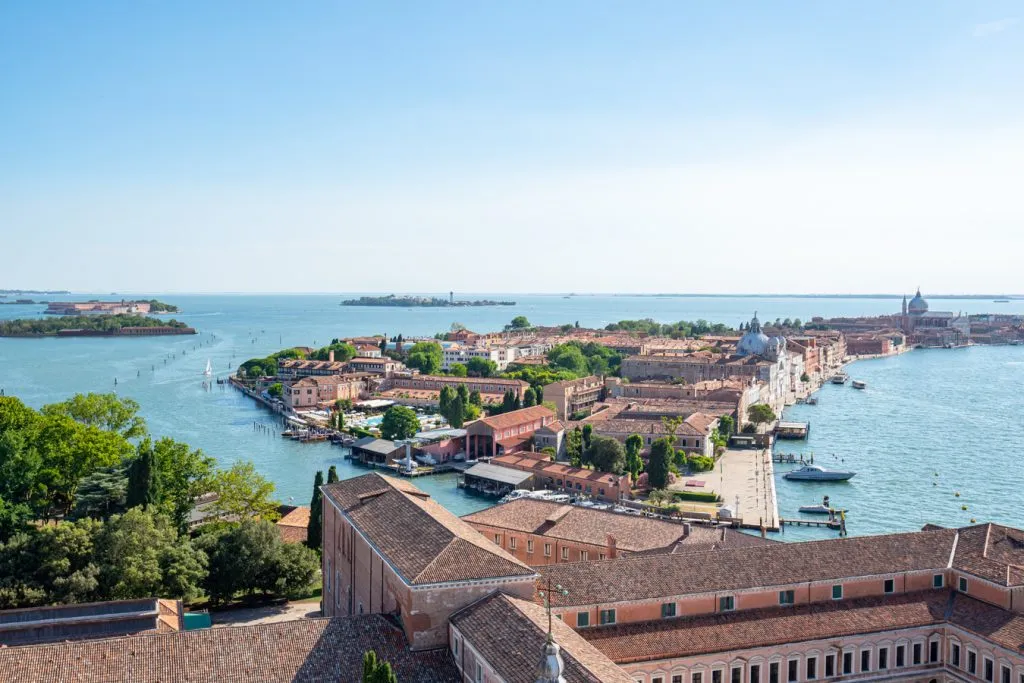
San Giorgio Maggiore
If you’re standing on the popular Riva degli Schiavoni near Piazza San Marco and the Bridge of Sighs, you’ll be treated to an excellent view of a curiously tiny island featuring a church and bell tower across the lagoon.
And, if you’re anything like us, this view of San Giorgio Maggiore may be what piques your curiosity about the outlying Venetian Lagoon islands to begin with!
A quick vaporetto ride will deliver you to San Giorgio Maggiore, which does not take long to see but is well worth the trip.
The Basilica of San Giorgio Maggiore is a stunning building, but the main reason to visit the island is actually the bell tower ( campanile ).
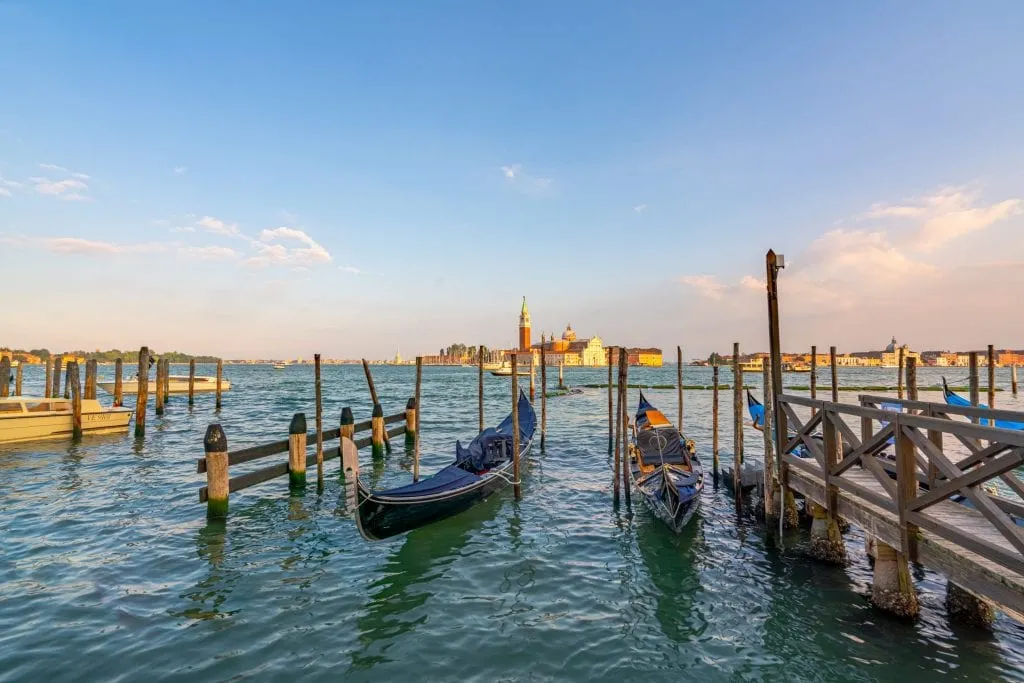
The bell tower receives a fraction of the visitors that the popular St. Mark’s Bell Tower does, despite having an equally impressive view.
A smooth elevator ride will deliver you to the top of the bell tower (no climb required), and you’ll be rewarded with absolutely magnificent views of the Venetian Lagoon and central Venice.
Most strikingly, the view from the top of San Giorgio Maggiore’s bell tower features a picture-perfect view of St. Mark’s Square , as seen from across the water.
About 10 minutes.
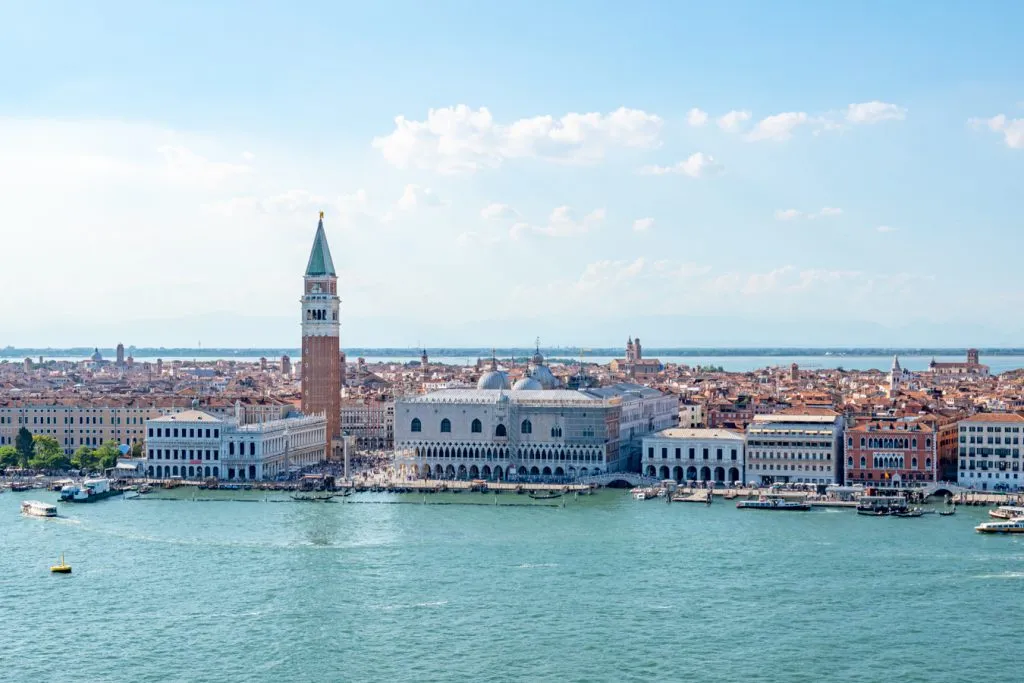
San Michele
Without a doubt, San Michele Island is one of the most unique islands in Venice.
Here, the entire island acts as a cemetery.
San Michele Island is a beautiful, sacred place, and visitors are expected to conduct themselves with respect (and subscribe to the same dress code you would in any Italian church: covered shoulders, no cleavage, etc.).
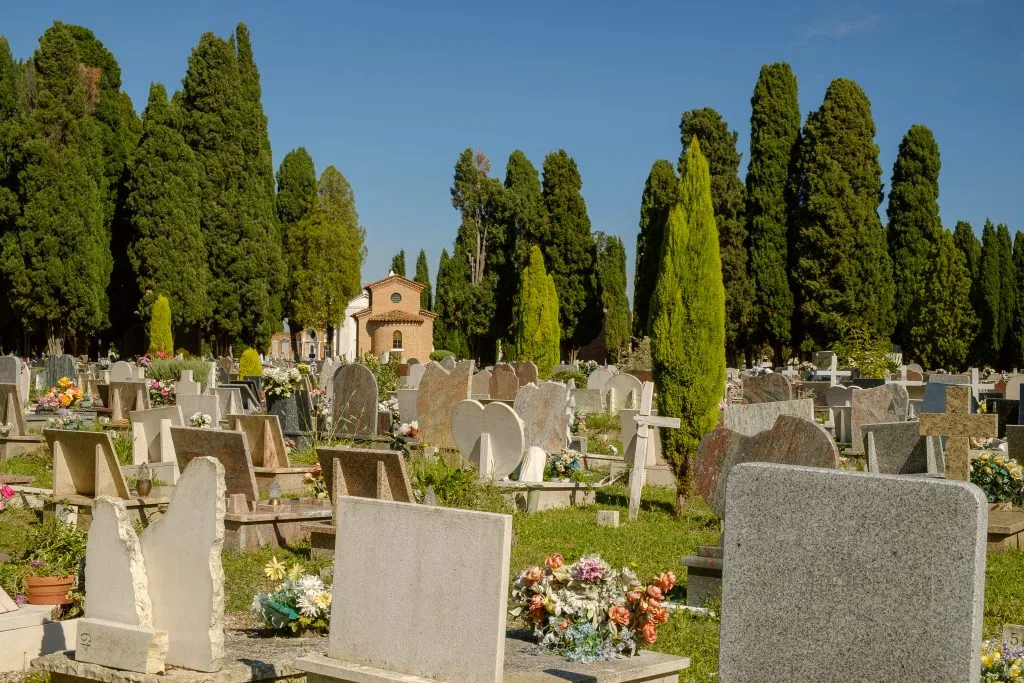
However, if you’re hoping to visit an unusual and somewhat secret Venetian island (secret from most tourists, anyway), there’s no doubt that this offbeat, active cemetery is unlike anything else you’ll see in the city.
About 10-15 minutes.
Take This Map With You! Click each highlight to pull up the name of the destination. To save this map to “Your Places” on Google Maps, click the star to the right of the title. You’ll then be able to find it under the Maps tab of your Google Maps account! To open the map in a new window, click the button on the top right of the map.
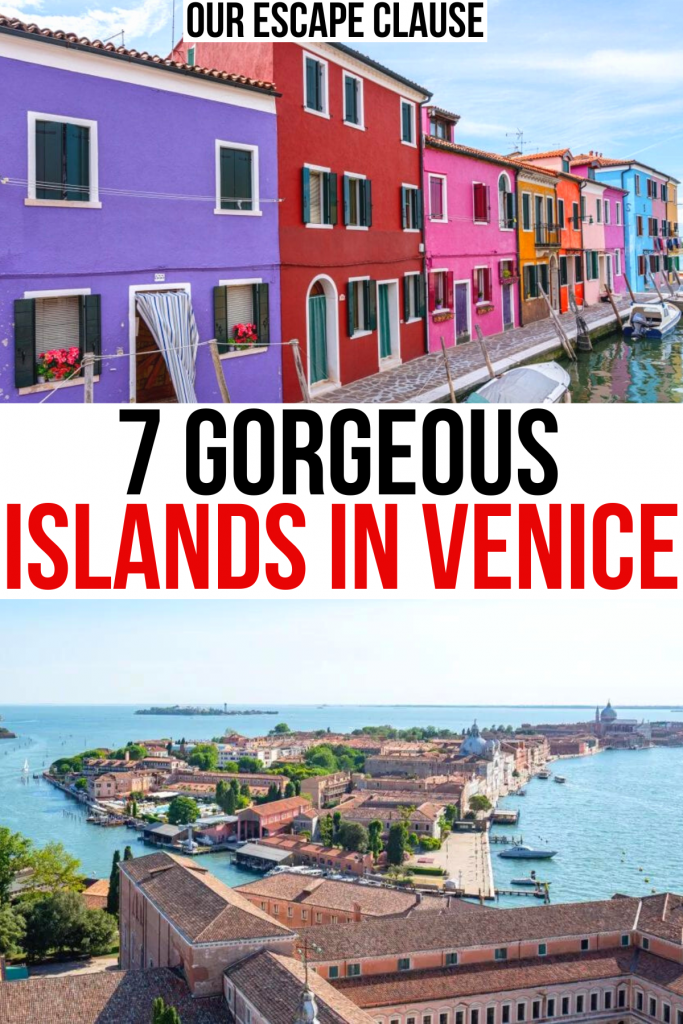
About Kate Storm

In May 2016, I left my suburban life in the USA and became a full-time traveler. Since then, I have visited 50+ countries on 5 continents and lived in Portugal, developing a special love of traveling in Europe (especially Italy) along the way. Today, along with my husband Jeremy and dog Ranger, I’m working toward my eventual goal of splitting my life between Europe and the USA.
Leave a Comment Cancel reply
Venice Travel Guide
Courtesy of Andreas Koch | EyeEm

20 Best Things To Do in Venice
Losing yourself in Venezia's charm is easy, but there are an endless number of bucket list activities and century-old landmarks to see while you're there. Touring top attractions like St. Mark's Basilica and the Doge's Palace is a
- All Things To Do
- 1-Day Itinerary
- 2-Day Itinerary
- 3-Day Itinerary

St. Mark's Basilica (Basilica di San Marco) St. Mark's Basilica (Basilica di San Marco)
This elaborate church sits on the popular piazza by the same name. The church was built in honor of St. Mark the Evangelist, whose remains were stolen in Alexandria, Egypt, by a couple crafty Venetians, intent on bringing him to rest in Venice. (What made them crafty? They smuggled the remains to Italy in barrels of pork fat.)
Crafted from many different styles of architecture, today the basilica's opulence shines from nearly every corner – from the four full-size bronze horses that guard the entrance to thousands of square feet of mosaics to the Pala d'Oro — an elaborate altar piece commissioned in Byzantium by the Venetians. If you look closely at the center gable on the exterior of the basilica, you can even see a statue of St. Mark along with Venice's emblem: a lion with wings.

Grand Canal Grand Canal free
U.S. News Insider Tip: You don't need to make a reservation for a gondola ride. Instead, speak with a gondolier in person the day you want to ride. You may be able to negotiate a lower price or longer ride if you're traveling during off-peak months, or if you find a gondolier along one of the side streets. – Holly D. Johnson
Considered to be the main street of Venice, the roughly 2-mile Grand Canal is one of the city's most popular and highly photographed attractions. Recent travelers recommend hiring a gondolier for a romantic row along the canal. If you're hoping to do this option, plan to fork over between 80 and 120 euros (about $87 to $132) for the ride.

Gondola Rides Gondola Rides
Taking a gondola ride is a must-do when you're visiting a city that rises directly from a network of canals. A relaxing journey on one of these light, flat-bottomed boats will help you admire the historic charm of Venice from a range of new angles, and to explore neighborhoods and buildings you won't see on foot.
You can prebook a Venice gondola ride online if you prefer, which typically costs at least $80 for two adults. Some of the best gondola tours you can book online come from companies like Walks of Italy , Venice Tours and The Roman Guy .

Rialto Bridge (Ponte di Rialto) Rialto Bridge (Ponte di Rialto) free
Several centuries ago, if you wanted to cross the Grand Canal , the Rialto Bridge was the only way. There are now four major bridges that cross the canal, but Rialto is by far the most famous.
The bridge's current incarnation is the handiwork of Antonio da Ponte, who beat out Michelangelo and Palladio for the job. Antonio da Ponte's name translates to "Anthony of the Bridge," and he built the Rialto Bridge entirely of Istrian stone after it collapsed multiple times from previous designs. Predicted to fail by critics, the bridge still stands and is considered an engineering marvel.

Teatro La Fenice Teatro La Fenice
The Teatro La Fenice is one of Italy's most popular opera houses, and one that has almost faced its demise from not one, but three big fires since opening in 1792. Locals and visitors alike joke at the name (which translates to Theater of the Phoenix), and how it has coincided with the theater's unfortunate history: like a phoenix rising from the ashes, La Fenice has lived on.
Although renovated in 1996, the historic opera house still has an old-world feel with decadent, intricately designed gold interiors outfitted with plush, red velvet chairs, making it the perfect setting to take in the auditory/visual pleasure of classic Italian opera. In addition to opera and musical performances, there are also a variety of dance – particularly ballet – performances scheduled throughout the year. For those with a tight itinerary, the theater offers day tours.

Torcello Torcello
Torcello is a northerly island in the Venetian lagoon that sits nearby Burano, another island and tourist hot spot. Torcello features a range of archaeological finds, including the so-called "Attila's Throne" and the Palazzo del Consiglio — the Gothic-style seat government of the island. The Museum of Torcello is also worth a visit according to past visitors, mainly due to its displays of early Christian artifacts and the other finds from the island.
Most tours to Torcello also include stops at the nearby islands of Burano and Murano, which are both known for their artisan crafts and glass blowing. These tours typically cost $25 to $40 per person and last six to seven hours. Each one includes boat transportation with several interesting stops that vary by tour operator.

Campanile di San Marco Campanile di San Marco
This particular bell tower was constructed in the early 20th century as a replica of the 16th-century original. The original structure provided the optimal setting for Galileo Galilei's presentation of the telescope; it also served as a stage for tight rope walkers who would humor the doge (the highest Venetian official at the time) with their feats during the Flight of the Angel celebration. Today's campanile is used for sightseers desiring a Venetian panorama – though one with few canal views, oddly, since most of the canals are obscured from its 324-foot height.
Most visitors say the attraction is well worth your time and makes for a great photo. To avoid crowds, travelers say it's best to go early in the morning or later in the evening. If you join one of the best Venice tours , you'll likely pass by the iconic landmark on your jaunt through the city.

St. Mark's Square (Piazza San Marco) St. Mark's Square (Piazza San Marco) free
St. Mark's Square, or Piazza San Marco , is considered by many to be the heart of Venice. As the largest square in Venice, St. Mark's Square is the only piazza in the city. Lining the square are multiple historical sites including St. Mark's Basilica , St. Mark's Campanile and Doge's Palace , as well as a number of restaurants, making it the perfect spot for leisurely people-watching and wine sipping. The square even has a handful of dueling piano bars that let you sit down and relax in a decadent setting, although the cost of food and drink at any of them is exorbitant.
Along with intricate architecture and hearty plates of spaghetti carbonara, visitors will be met with throngs of tourists, pigeons and vendors selling souvenirs. If you hoped to pick up a gondola hat or a carnival mask during your trip, this is the place you will find them.

Bridge of Sighs Bridge of Sighs free
Centuries ago, the Bridge of Sighs, which connects the Doge's Palace to dungeons, was used to transport prisoners from the courtroom to the prisons. Legend has it that the Bridge of Sighs, or Ponte dei Sospiri , was named for the sighs prisoners like Giacomo Casanova would utter as they took one last look at the outside world through the bridge's windows as they made their way to prison for good. On a much lighter note, Venetian lore says if two lovers kiss on a gondola under the bridge, they'll be granted eternal bliss.
Recent travelers offer mixed reviews on the Bridge of Sighs. Those who enjoyed it appreciated the details of the architecture and unique placement of the bridge, saying it was a nice photo-op, especially while the gondolas passed underneath it. Those who weren't as smitten noted its lack of accessibility as the main drawback, saying that merely looking at the bridge was underwhelming. Other disgruntled visitors pointed out that the number of tourists, combined with the small amount of viewing space, made the bridge barely visible. For a better viewing experience, consider tagging along on one of the best Venice tours .

Santa Maria della Salute Santa Maria della Salute free
The Santa Maria della Salute was built to celebrate the end of the plague in 1631 and is dedicated to Our Lady of Health. Nowadays, many will recognize this magnificent Roman Catholic Church as the backdrop for many photos of Venice. There's a good chance you'll see it whether you take the time to go inside or not – at least from a distance. In fact, you can easily see the Santa Maria della Salute over the Grand Canal from Piazza San Marco . The church itself stands out due to its white marble facade and the 125 statues that adorn it, but there's much to see and explore inside.
The basilica features famous paintings by Titian and Tintoretto, as well as a remarkable sculpture called The Queen of Heaven Expelling the Plague. A 13th-century version of the painting "Madonna and Child" is also found within the basilica.

Doge's Palace (Palazzo Ducale) Doge's Palace (Palazzo Ducale)
Views from the Venetian Lagoon give the Doge's Palace an ethereal look – almost like it's floating on top of water. But it's fitting, as the Doge's Palace (or Palazzo Ducale ) has witnessed an intriguing history in its role as the residence of the doge (leader), the seat of government and the palace of justice. Everything from execution orders to the affairs of Venetian leaders was carried out here; and a web of secret passageways and hidden doors reveals a decidedly mysterious past.
Along with the attraction's historical significance, Doge's Palace is located in the busy St. Mark's Square , which means it sees a lot of foot traffic. It isn't uncommon to see a line wrapping around the building, so book your tickets in advance, and if you can't do that, arrive right when it opens to avoid crowds.

Academy Gallery (Gallerie dell'Accademia) Academy Gallery (Gallerie dell'Accademia)
Originally an academy, this building was later turned into the Galleria dell'Accademia museum by none other than Napoléon. Today, it's filled with an expansive collection of Venetian art from the 14th to the 18th century by artists such as Bellini, Tintoretto and Veronese.
If you enjoy art – especially Renaissance art – then you'll probably enjoy this museum. If not, you might be disappointed. Travelers who enjoyed this museum were primarily self-proclaimed art enthusiasts, while those who didn't identify as such reported being a bit bored.

Basilica di Santa Maria Gloriosa dei Frari Basilica di Santa Maria Gloriosa dei Frari
The Basilica di Santa Maria Gloriosa dei Frari, sometimes referred to simply as Frari , is a gothic-style church that was finished in the 14th century. The exterior is minimal in comparison to Saint Mark's Basilica because the Franciscans who built it wanted the building to emulate their beliefs on living a life of poverty. The interior, however, is a different story. Inside, you'll see works by Titian, Bellini and Vivarini, among other famous artists, and all for a cheaper price than the city's art museums.
Recent visitors appreciated the minimal entrance fee and the fact that it sits away from the frenzy of the Piazza San Marco . Others admired its intricate interiors, as well as its bevy of artworks, calling the church a "must-see."

Jewish Ghetto (Ghetto Ebraico di Venezia) Jewish Ghetto (Ghetto Ebraico di Venezia) free
In 1516, Jews in Venice were forced to move to a small northwestern section of the island. Considered to be the world's first ghetto, residents were only allowed to leave the neighborhood during the day and were then locked up at night and guarded. Today, this area is a part of the Cannaregio sestiere (district) and is filled with restaurants and shops (some offering kosher products) and several synagogues, which are open for touring. Although it's free to wander around the neighborhood – and you might want to do just that – the synagogue tours do cost .
For a deeper understanding of the ghetto's history, recent travelers recommend booking a walking tour; some of the best Venice tours include stops here. Several water bus lines stop near the neighborhood, but you can also reach it on foot.

Peggy Guggenheim Collection Peggy Guggenheim Collection
Expat American art collector Peggy Guggenheim dedicated her life to gathering this impressive body of 20th-century contemporary art. The collection, which is housed in the Palazzo Venier dei Leoni on the Grand Canal (also Peggy's former home), contains works by artists such as Magritte, Picasso, Pollock, Chagall and Dalí. In the sculpture garden, you can pay your respects to Peggy herself (she was laid to rest on the property), as well as her beloved dogs, who are buried beside her.
Many travelers agree the Peggy Guggenheim Collection is well worth the visit. Some visitors were keen to point out that getting to know Peggy's life, on top of seeing the exceptional art, made the experience more unique than merely visiting a museum. Others who also enjoyed the museum said its modern collection is a nice break from the traditional Renaissance paintings often seen in Venetian museums.

Correr Civic Museum (Museo Civico Correr) Correr Civic Museum (Museo Civico Correr)
The Correr Civic Museum, also known as the Museo Correr, is a large museum that displays art and artifacts from Venice's history as well as the former royals' quarters. If you're also planning to visit Doge's Palace (the former government seat and leader's residence), the standard ticket includes entry to this attraction.
Those who visited the museum said they were pleasantly surprised at how much they enjoyed the stop, considering it wasn't on their must-see list (though they recommend you add it to yours). Others enjoyed the museum's peace and quiet and said it's a great escape from the crowds in Piazza San Marco . Reviewers were also pleased with the on-site cafe.

Ponte dell'Accademia Ponte dell'Accademia free
Ponte dell'Accademia is one of the four bridges that crosses the Grand Canal in Venice. While not as famous as the Rialto Bridge , its wooden structure makes it truly unique from other Grand Canal bridges in Venice that are made of metal or stone. It crosses the southern end of the canal where it connects the Dorsoduro and San Marco neighborhoods. Consider stopping by the Gallerie dell’Accademia or the Peggy Guggenheim Collection before or after viewing the bridge, as both are nearby.
Visitors say this bridge not nearly as crowded as the Rialto , and that the views of the canal and surrounding neighborhoods are spectacular. They also note that a vaporetto stop is nearby, so it's easy to visit the bridge by boat if you don't want to walk. Not only will you want to cross the bridge to get views of the water, but also you’ll want to take photos of the bridge from the surrounding buildings and walkways, according to past visitors.

Libreria Acqua Alta Libreria Acqua Alta free
U.S. News Insider Tip: Many books at Libreria Acqua Alta are for decor only. Not everything you see is for sale. – Holly D. Johnson
The Libreria Acqua Alta is often called the "most beautiful bookstore in the world," and it's easy to see why. From its ancient stone walls to its cobblestone floors and embellished (and sometimes flamboyant) decor, there's a lot to see here other than books.

Ca' d'Oro Ca' d'Oro
Ca' d'Oro is a patrician palace that was originally built in the 15th century in the Renaissance style coupled with Gothic and Islamic elements. Built by Giovanni and Bartolomeo Bon (famous father and son architects and sculptors of the time) at the request of the procurator of St. Mark, the building is located along the Grand Canal . Several stories high, the palace facade is adorned with marble terraces and intricate architectural design. The building features ornate cornices and cresting that was made to please local Venetian patrons at the time.
The building is worth a look due to its elaborate exterior, but art lovers should note the Ca' D’Oro Franchetti Gallery is housed inside. Past visitors said that a trip inside was just as meaningful as an outside view, mostly due to the exceptional collection of art and heirlooms. Art you can view in this palace-turned-gallery includes sculptures, antique furniture, 16th-century Flemish tapestries, paintings and more.

Rialto Market Rialto Market free
Located near the famous Rialto Bridge , the Rialto Market is a centuries-old market that features everything you would expect including fruit, fish and vegetables. Of course, many travelers head here to pick up souvenirs as well, some of which wind up being edible. Visitors to the market have said it's a vibrant and busy place that's ideal for buying local herbs and sauces, or trying out meats, cheeses, spices and freshly caught seafood.
What should you do while visiting the market? You can walk throughout and try interesting foods and sauces, and there are places to sit down and eat or relax. Hours can vary, but the produce market is typically open 7:30 a.m. to 1 p.m. Monday through Saturday and the fish market is open the same hours Tuesday through Saturday. To avoid crowds, try visiting first thing in the morning.

Things to Do in Venice FAQs
Explore more of venice.

Best Hotels

When To Visit
If you make a purchase from our site, we may earn a commission. This does not affect the quality or independence of our editorial content.
Recommended
The 28 Best Water Parks in the U.S. for 2024
Holly Johnson|Timothy J. Forster May 8, 2024

The 18 Best Napa Valley Wineries to Visit in 2024
Lyn Mettler|Sharael Kolberg April 23, 2024

The 25 Best Beaches on the East Coast for 2024
Timothy J. Forster|Sharael Kolberg April 19, 2024

The 50 Best Hotels in the USA 2024
Christina Maggitas February 6, 2024

The 32 Most Famous Landmarks in the World
Gwen Pratesi|Timothy J. Forster February 1, 2024

9 Top All-Inclusive Resorts in Florida for 2024
Gwen Pratesi|Amanda Norcross January 5, 2024

24 Top All-Inclusive Resorts in the U.S. for 2024
Erin Evans January 4, 2024

26 Top Adults-Only All-Inclusive Resorts for 2024
Zach Watson December 28, 2023

Solo Vacations: The 36 Best Places to Travel Alone in 2024
Lyn Mettler|Erin Vasta December 22, 2023

26 Cheap Beach Vacations for Travelers on a Budget
Kyle McCarthy|Sharael Kolberg December 4, 2023


IMAGES
VIDEO
COMMENTS
4. Hit the water at Lake Garda. Travel time: 93 minutes by train. Yes, you can do a day trip from Venice to Lake Garda - in fact, Italy's largest lake makes for a fun day trip on public transport. Take the train to Desenzano, from where the (water) world is your oyster.Ferries zigzag across the lake - top stops include Lazise, a picture-perfect village on the crystal clear water ...
10 Idyllic Italian Cities Near Venice You Must Visit 1. Verona. After Venice, Verona is the second largest city in Veneto, a true medieval treasure. Located 75 miles west of Venice, it's perfectly suited for a day trip, as there is a motorway (A4/E70) and several trains per day connecting both in between 1 and 2 hours.
Here are 15 of the best day trips to take while on your trip to Venice. 1. Lake Garda. Source: fotomika / shutterstock. Lake Garda. From one water-bound attraction to another, Lake Garda is without doubt Italy's most famous, as well as largest, lake. Surrounded by lemon trees, magnolia, cypresses and olive trees, Lake Garda exudes a ...
Map - 6 Places to See Near Venice. ... The best tours of Venice Italy, selected by an insider. Walking tours, gondola trips, St. Mark's Basilica and even a creepy ghost tour. We have it all! Stunning Pictures of Veneto Italy. Some lovely pictures of Veneto and Venice. Our site is an insiders guide to this magical region of Italy - one of the ...
Discover the best day trips from Venice, Italy, from islands in the Venetian lagoon to historic cities and towns, and even a river cruise! ... Near the castle is the Duomo di Ferrara, with an ornate facade. The Renaissance bell tower is unfinished. ... The town is only 1 hour and 20 minutes away from Venice, and one of the best places to visit ...
The Coastal Towns Awaiting Your Arrival. 1. Chioggia - The Little Venice of the South. Known as " Little Venice ", Chioggia is a true gem situated on a small island just south of Venice's Lido. This picturesque fishing town charms visitors with its colorful houses, narrow streets, and bustling fish market. Stroll along the lively promenades ...
11. Friuli. 12. Asolo. Map of Day Trips from Venice. 1. Murano and Burano. Murano and Burano. The closest and easiest day trip from Venice is to its islands of Murano and Burano, each a colorful mini-Venice with their canals and bridges, and each one a center for traditional Venetian art.
If you're heading to Venice and have a few extra days on hand, plan some sightseeing adventures with this list of easy day trips. Table of Contents. Artistic marvels in Padua. Verona between romance and history. Treviso, the Little Venice. Vicenza and its architectural treasures. Bassano del Grappa and its historic distilleries.
Padua - definitely worth visiting. An easy day trip from Venice to Verona. Ravenna - a day trip off the beaten path. Best places to visit near Venice for one-day or multi-day trips. Dolomites - close enough for a day trip from Venice, but more days are definitely needed. A day trip from Venice to Lake Garda - can be done with a car.
Venice's Top Islands. Murano, Burano, and Torcello are the top three islands to visit on day trips from Venice. Murano is known as the island of glassmakers, Burano has canals lined with picturesque colored houses and is known for lace making, and Torcello is a green island where you can see Byzantine mosaics in the 7th-century Cathedral.
Ravenna. A two-hour drive or two-hour train from Venice. Getting to Ravenna makes for a longer excursion, but an unforgettable immersion in art and history. Unassuming and peaceful today, Ravenna ...
Lying almost directly to the south of Venice, Ravenna only takes about two hours to get to by train, although this does involve a change at Bologna. 5. Padua. Lapatia / Flickr. A popular day trip from Venice, Padua may be the oldest city in northern Italy, reportedly founded by the Trojans in the 12 century BC.
Top 5 day trips from Venice, Italy: destinations and experiences. If your travel plans extend beyond a simple day trip to Venice and you wish to delve deeper into the Italian experience, considering the closest cities to Venice could significantly enhance your itinerary. These noteworthy places offer a wealth of unique attractions and experiences that encapsulate the rich tapestry of Italian ...
Places to see near Venice: Caorle. About 70 km from Venice stands Caorle, included among the 1000 historic villages of Italy. Walking through the town, you will discover its beautiful historic center, where Piazza Vescovado is the master with the Cathedral of Santo Stefano and its bell tower, the symbol of the city.
Palazzo Contarini del Bovolo. The Palazzo Contarini del Bovolo is another must-see attraction in Venice's San Marco district and a cool hidden gem in Venice. If you've climbed St. Mark's bell tower, you've probably seen it from every angle. In fact, the building is clearly visible from the top of St. Mark's bell tower.
7. Gallerie dell'Accademia. When Napoleon conquered Venice, he swiped plenty of its best Renaissance artworks and took them back to France. Lots have been recovered, however, and are now part of ...
To plan your stay so you won't miss any of the best places to visit, use this list of the top attractions and things to do in Venice. On This Page: 1. St. Mark's Basilica. 2. Piazza San Marco (St. Mark's Square) 3. Palazzo Ducale (Doge's Palace) and Bridge of Sighs.
Unfortunately, Instagram "influencers" yelling at you to get out of their shot is more likely…. 3. The Bridge Of Sighs. The Famous Bridge of Sighs. The Bridge Of Sighs is a unique enclosed bridge of white limestone spanning the Rio di Palazzo in Venice. There's an interesting story behind the name.
Discover the best things to do in Venice, Italy with Tripadvisor. Explore the city's canals, museums, churches, and landmarks with the help of millions of traveler reviews and photos. Find the perfect activities for your trip, whether you are looking for romantic, cultural, or family-friendly options. Book online and save time and money.
Torcello. Small, quiet, and packed with enough green space that Venice's historic center will feel light years away, Torcello is one of the best islands to visit in the Venetian Lagoon. Much less visited than Murano and Burano, Torcello's popularity is nonetheless helped along by its proximity to colorful Burano.
Kyle McCarthy|Sharael Kolberg December 4, 2023. Ranking of the top 20 things to do in Venice. Travelers favorites include #1 St. Mark's Basilica (Basilica di San Marco), #2 Grand Canal and more.
Purchase tickets online to avoid the lines. 8. Piazza San Marco. Piazza San Marco (St. Mark's Square) is the biggest square in Venice. Strategically located surrounded by some of Venice's most famous buildings like the Saint Marco Basilica, the Campanile (bell tower), and the Palazzo Ducale.